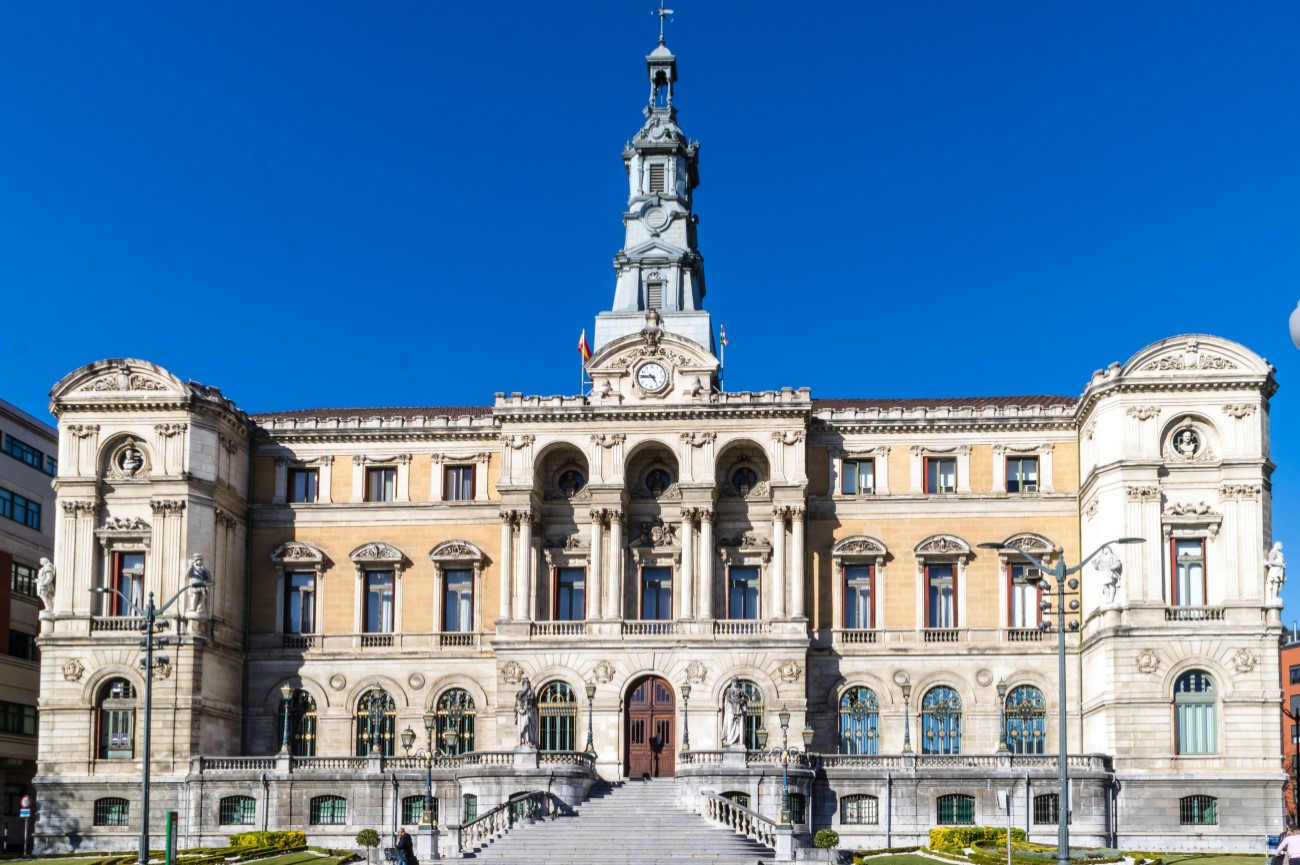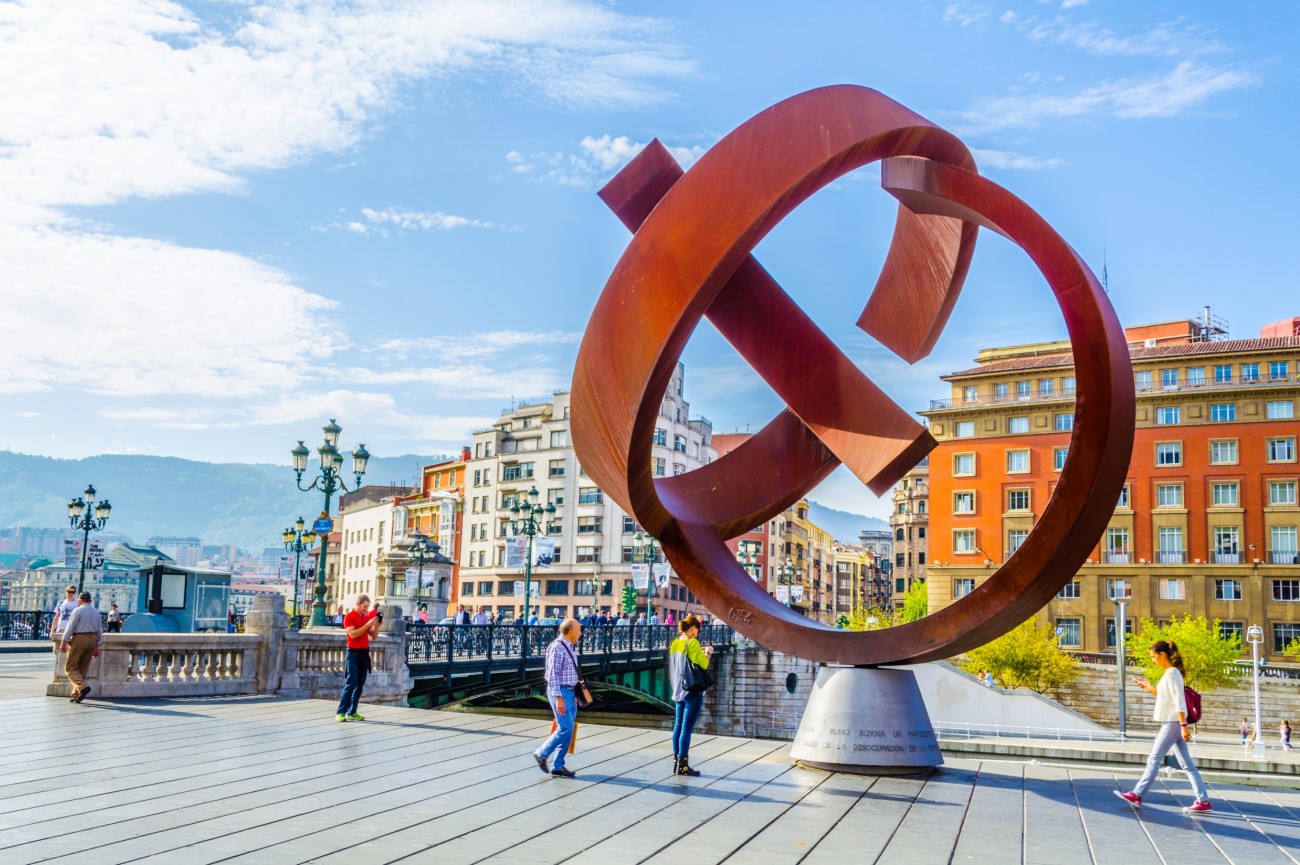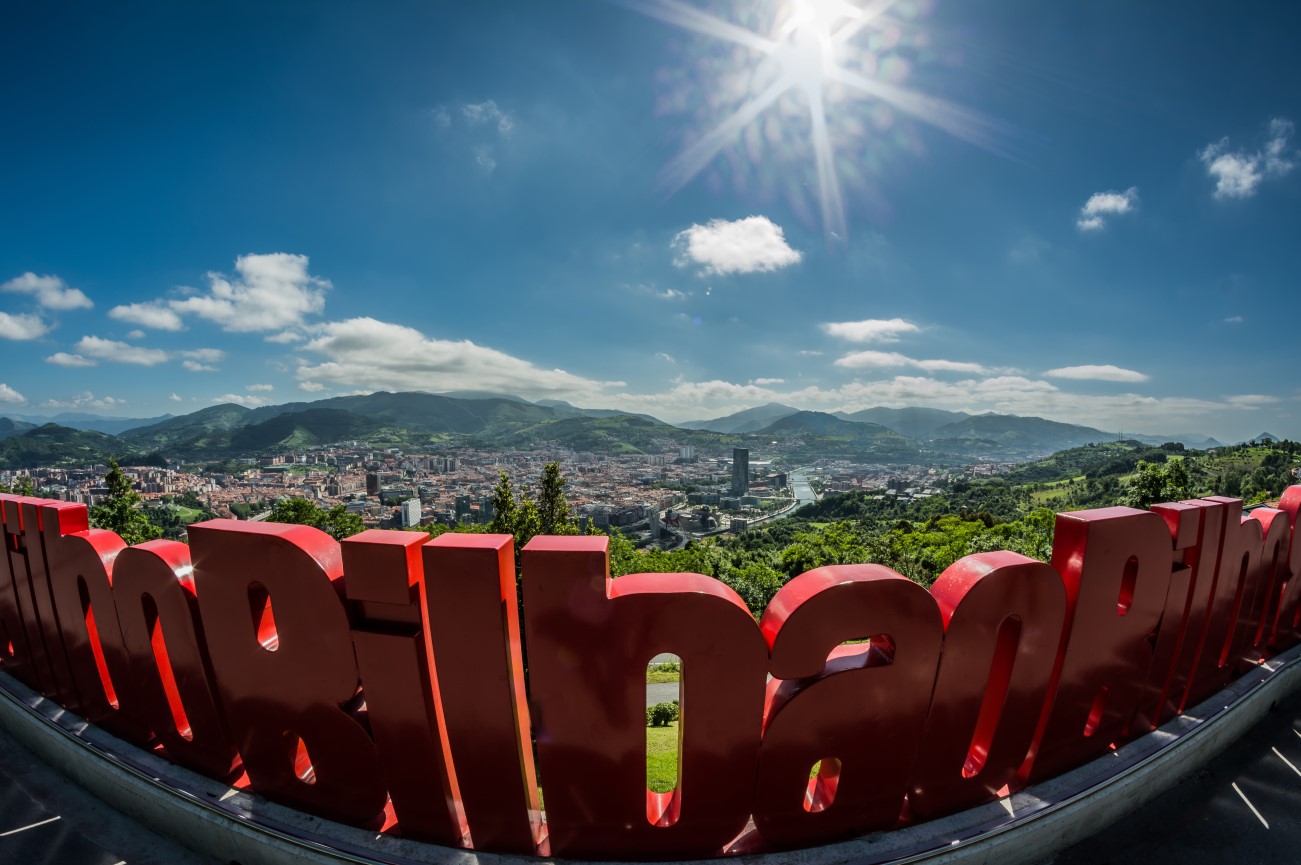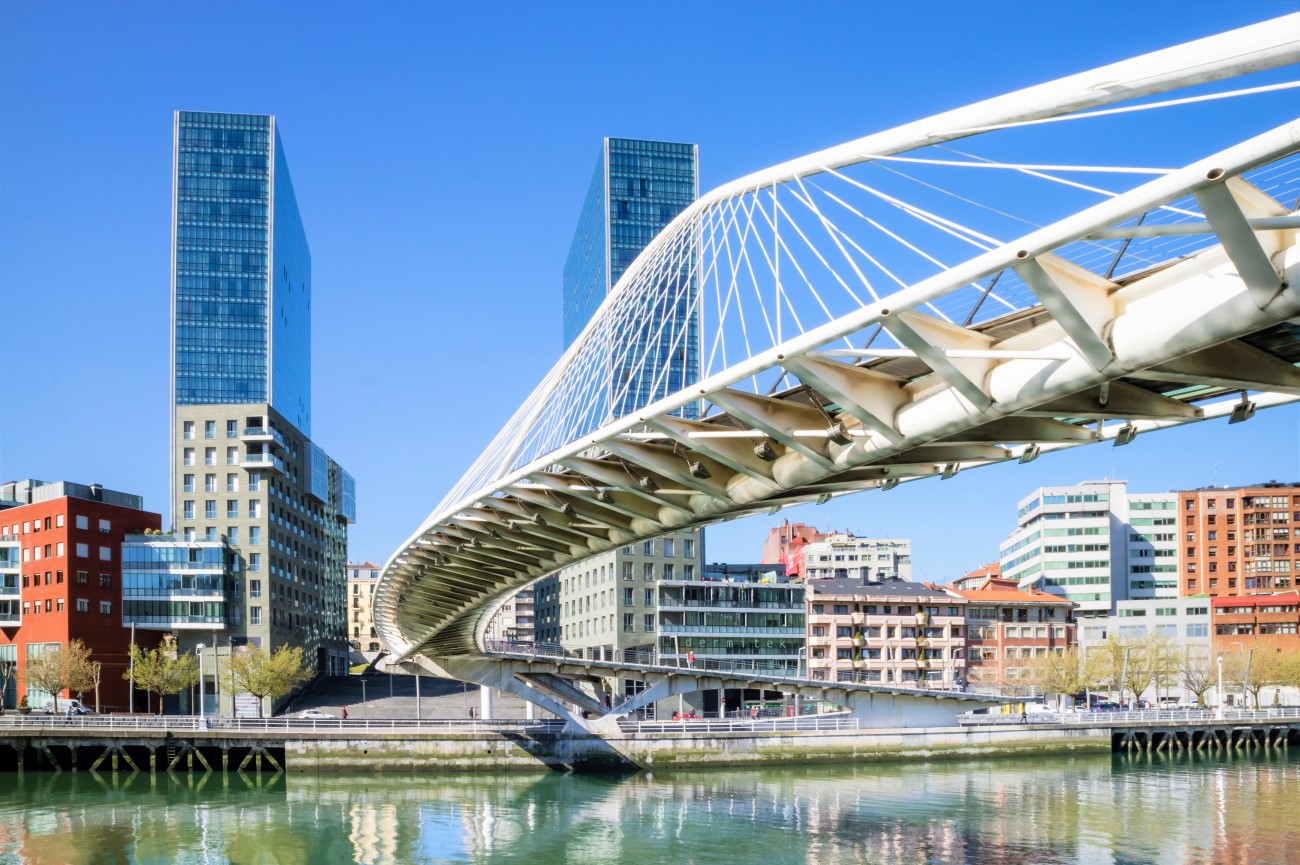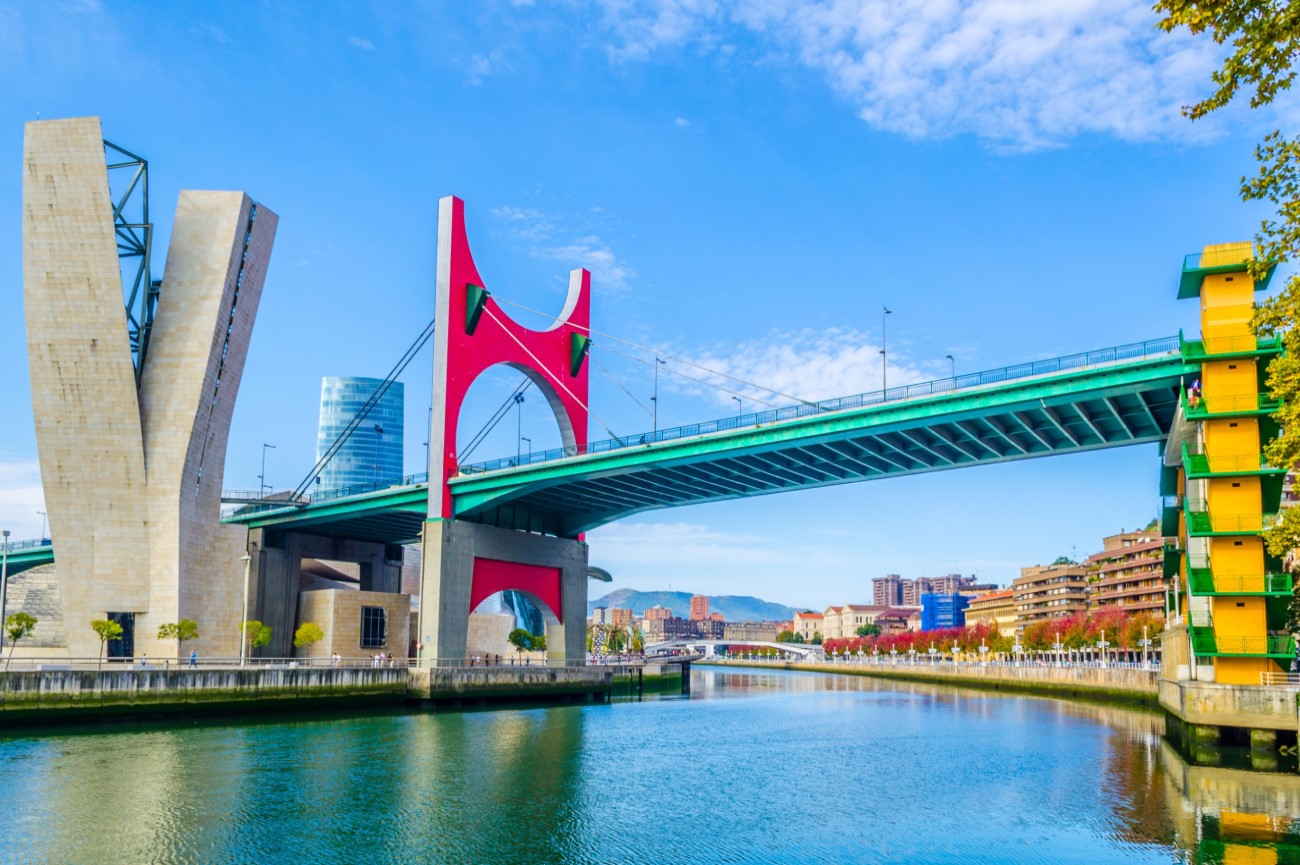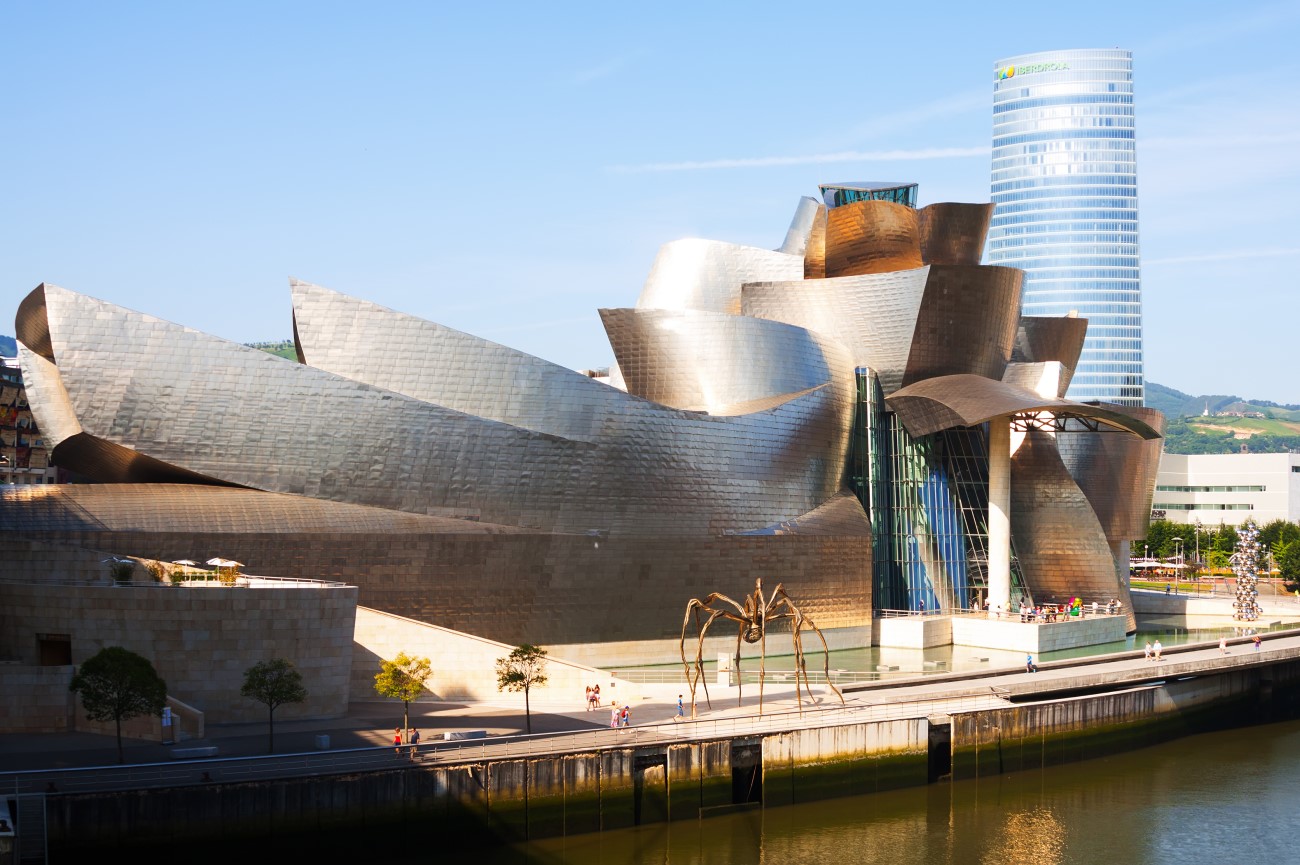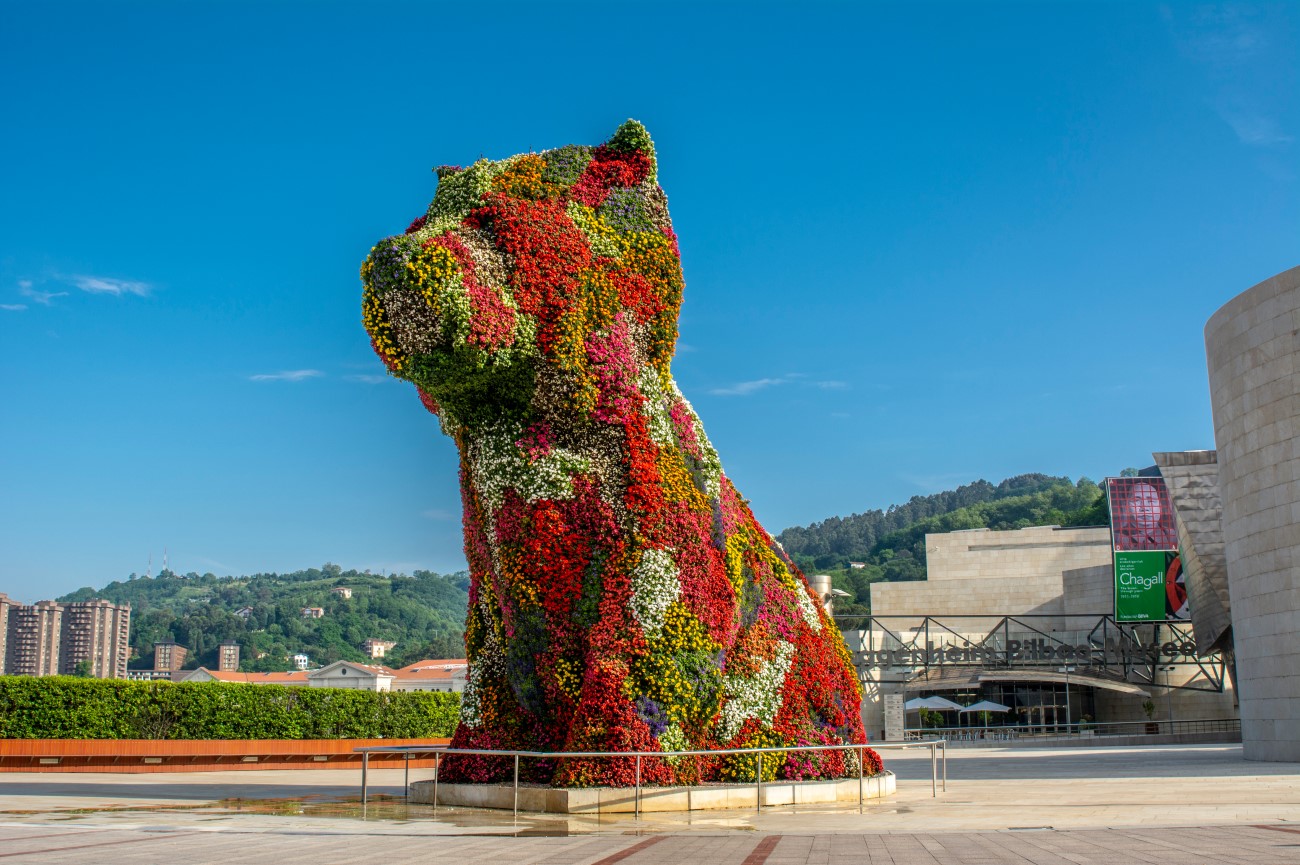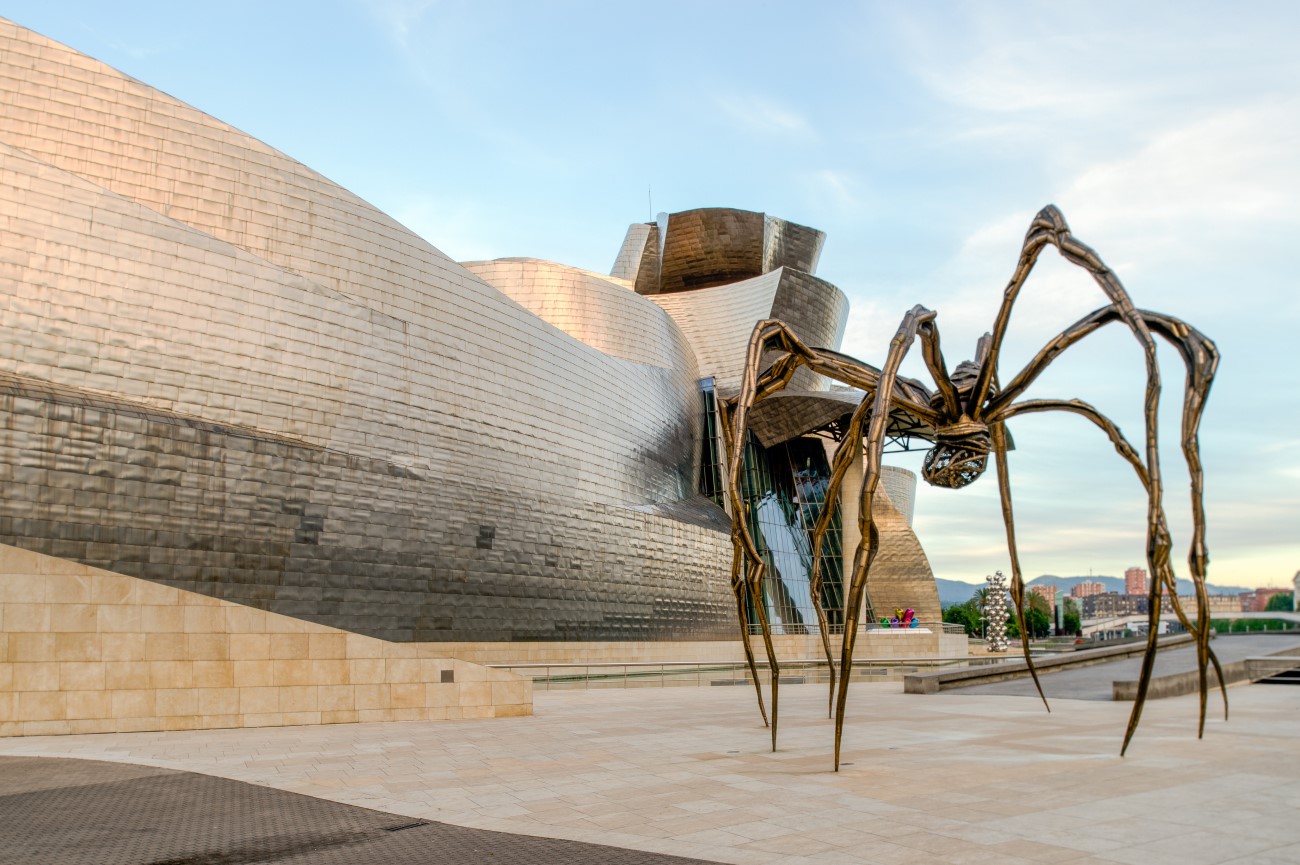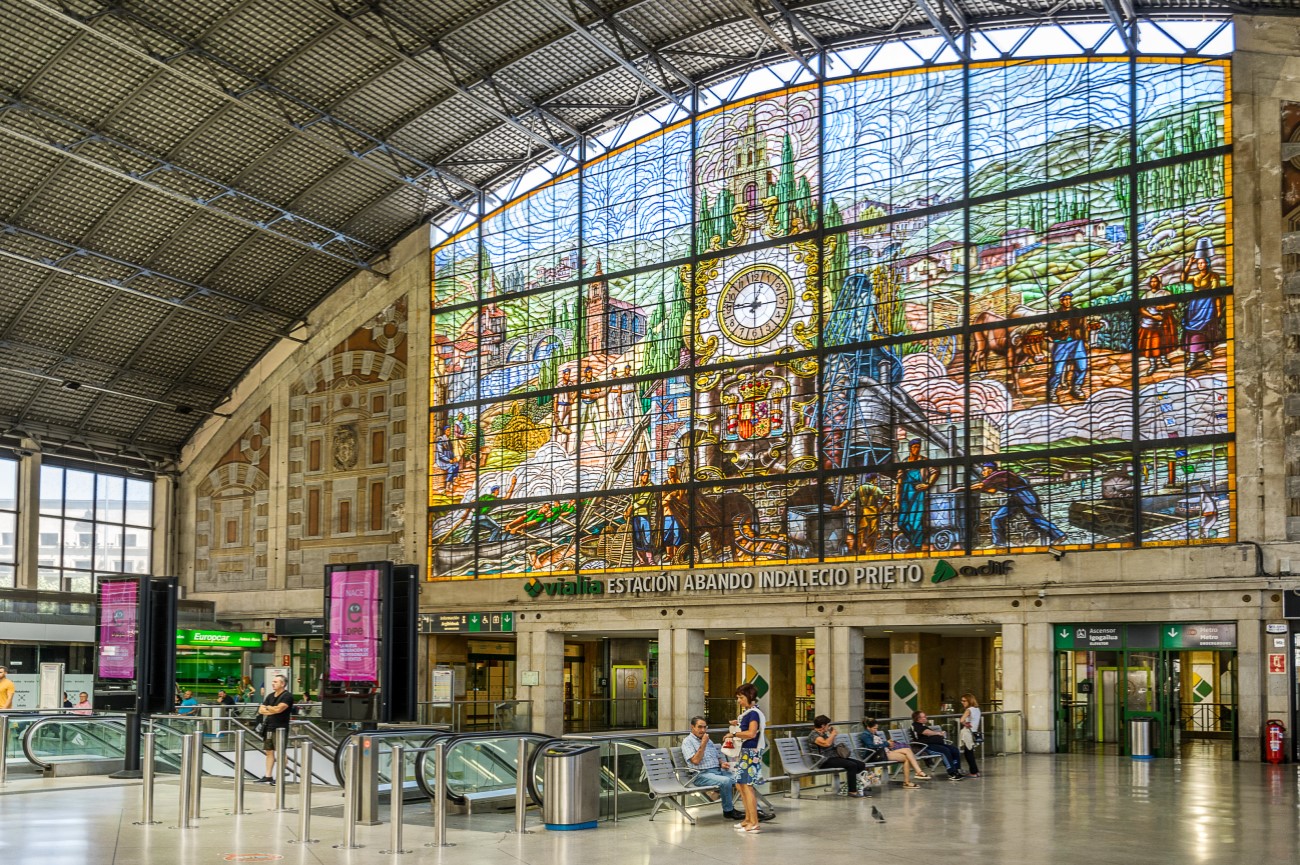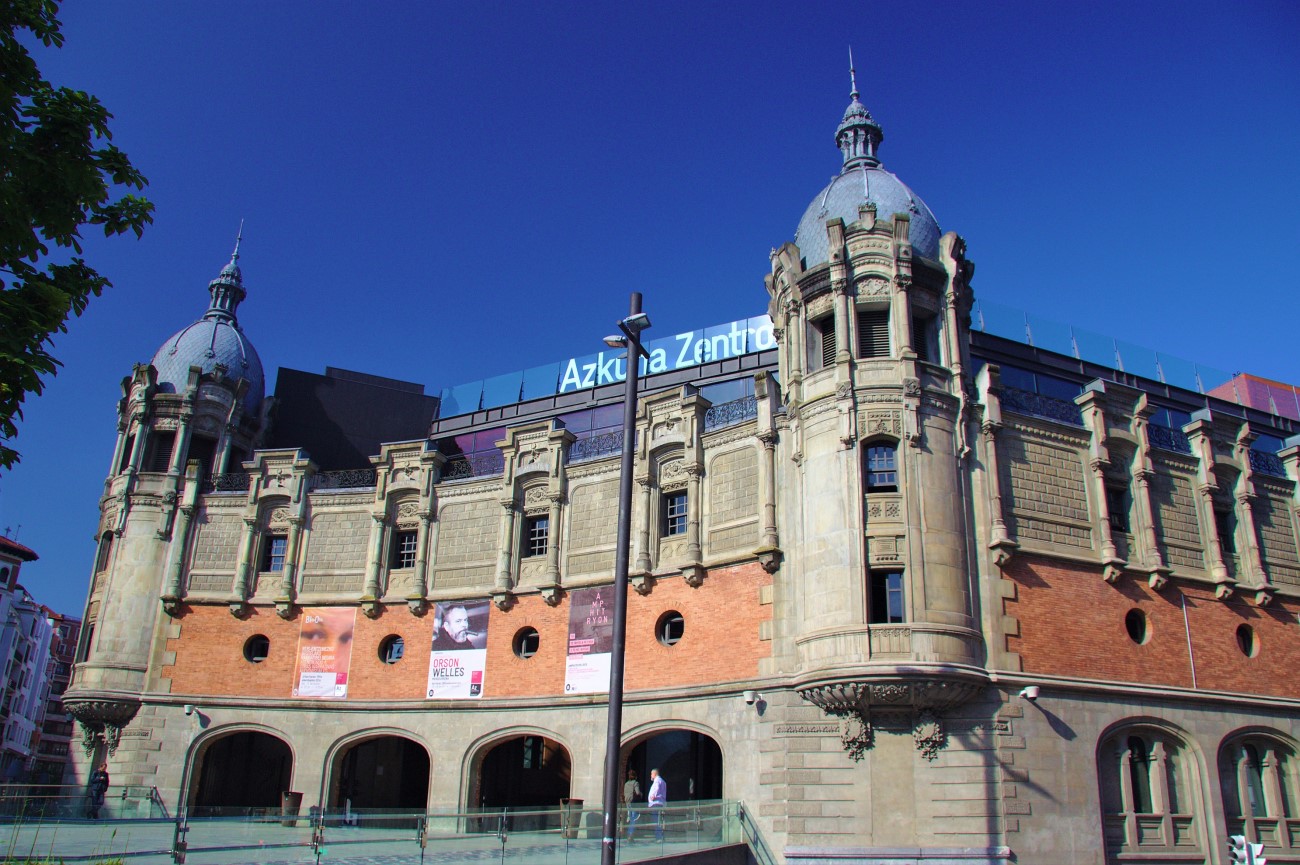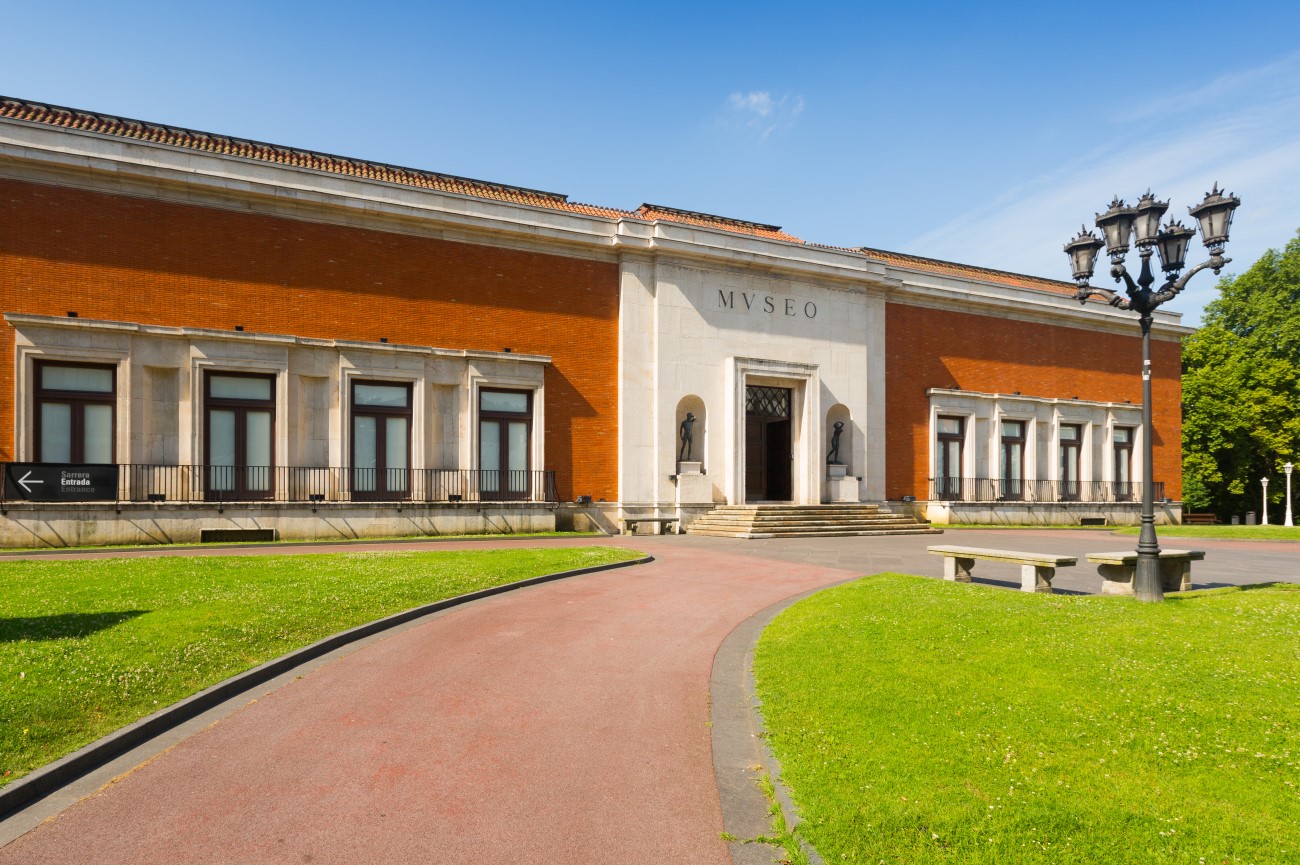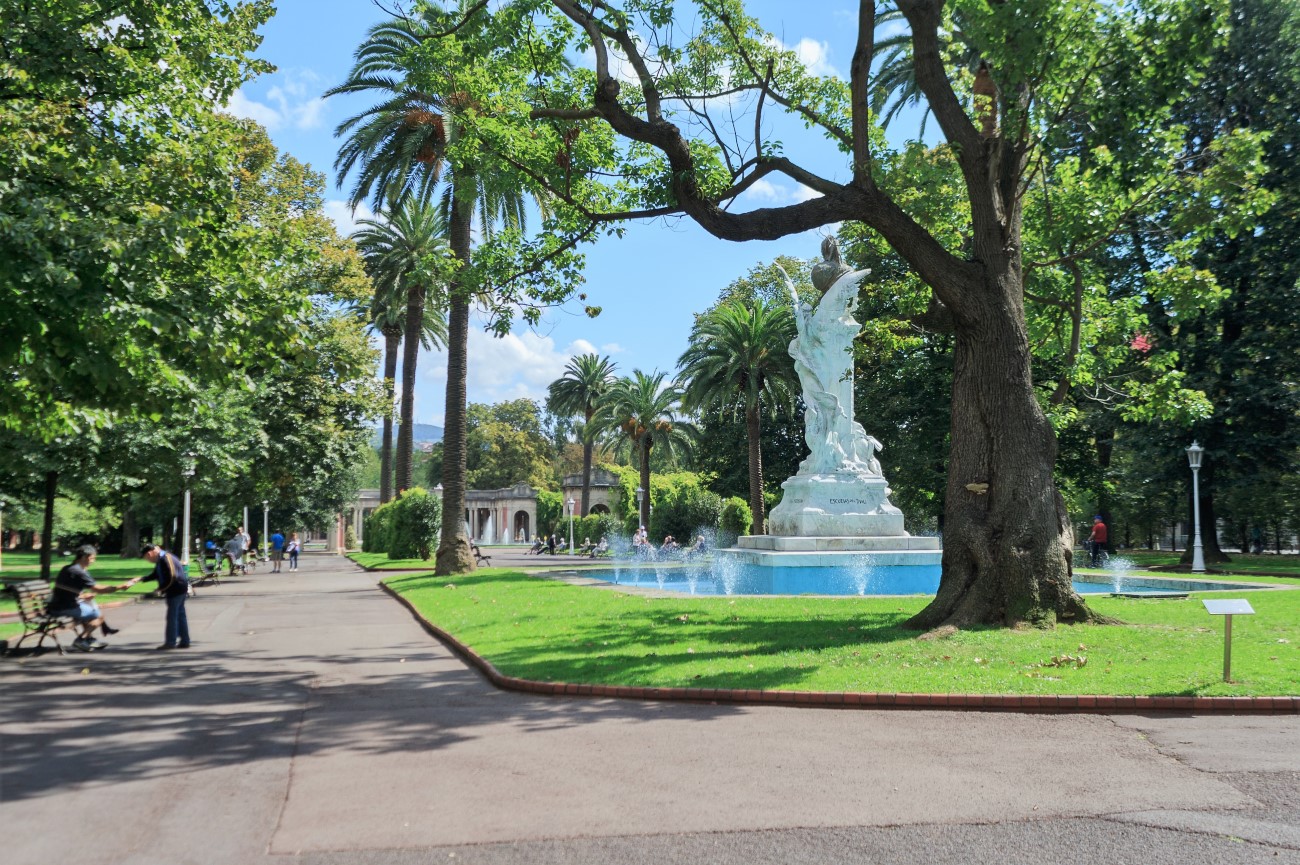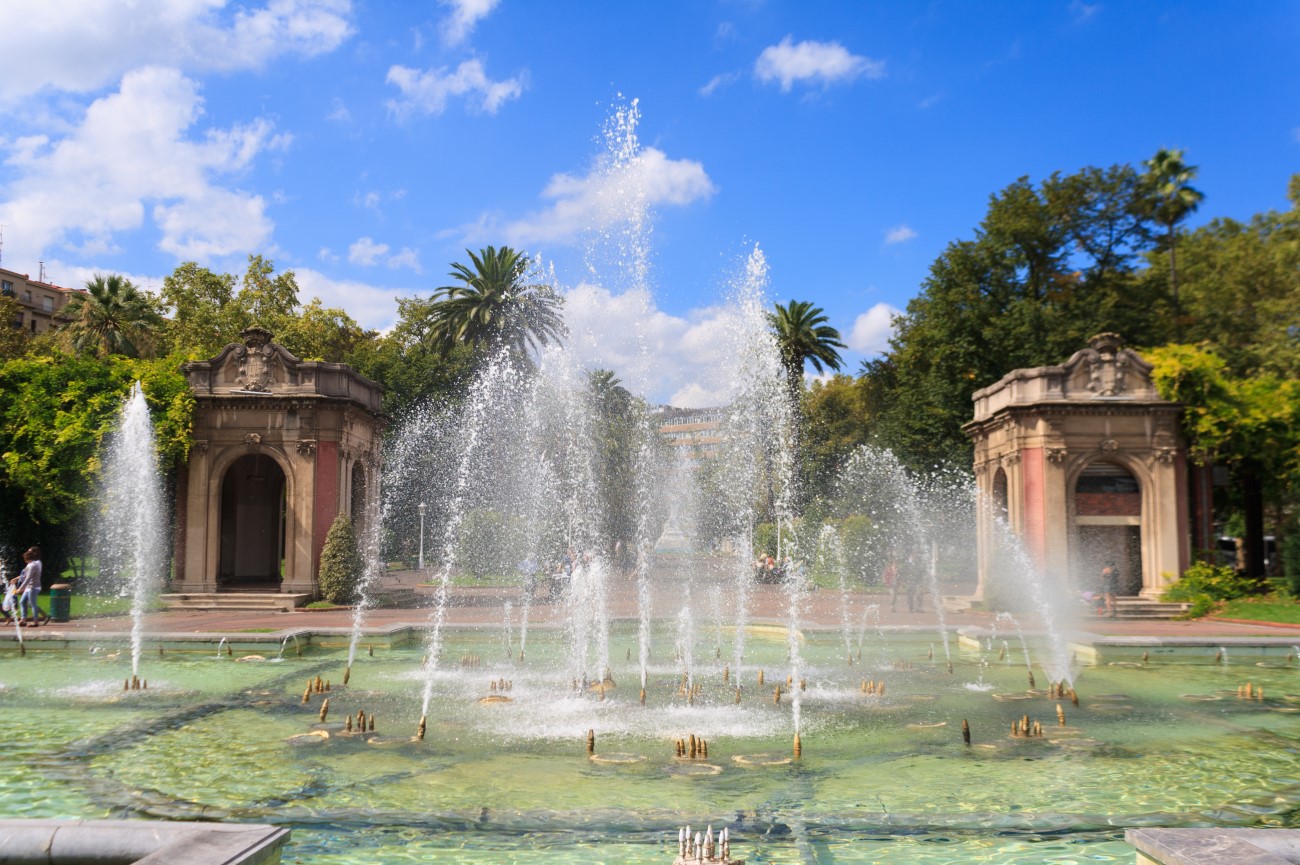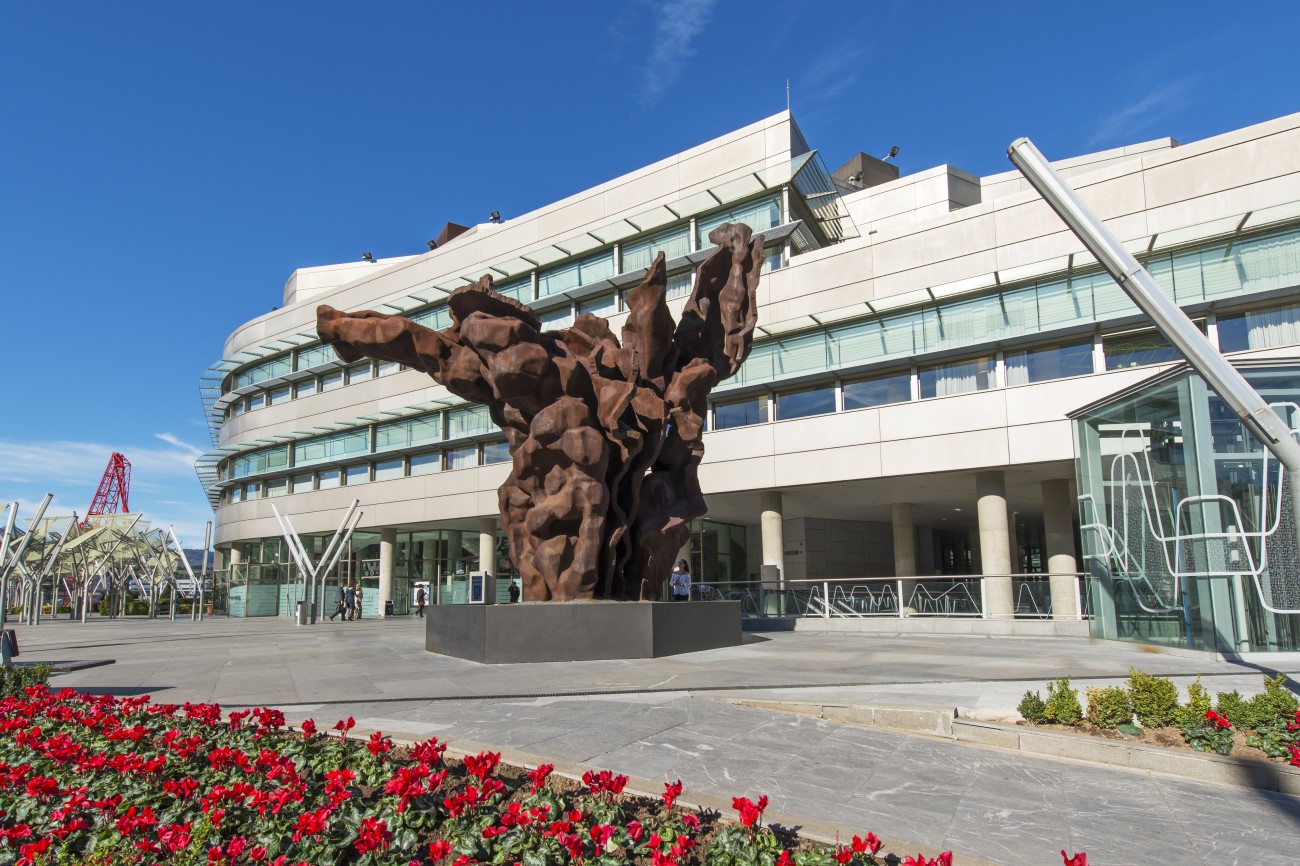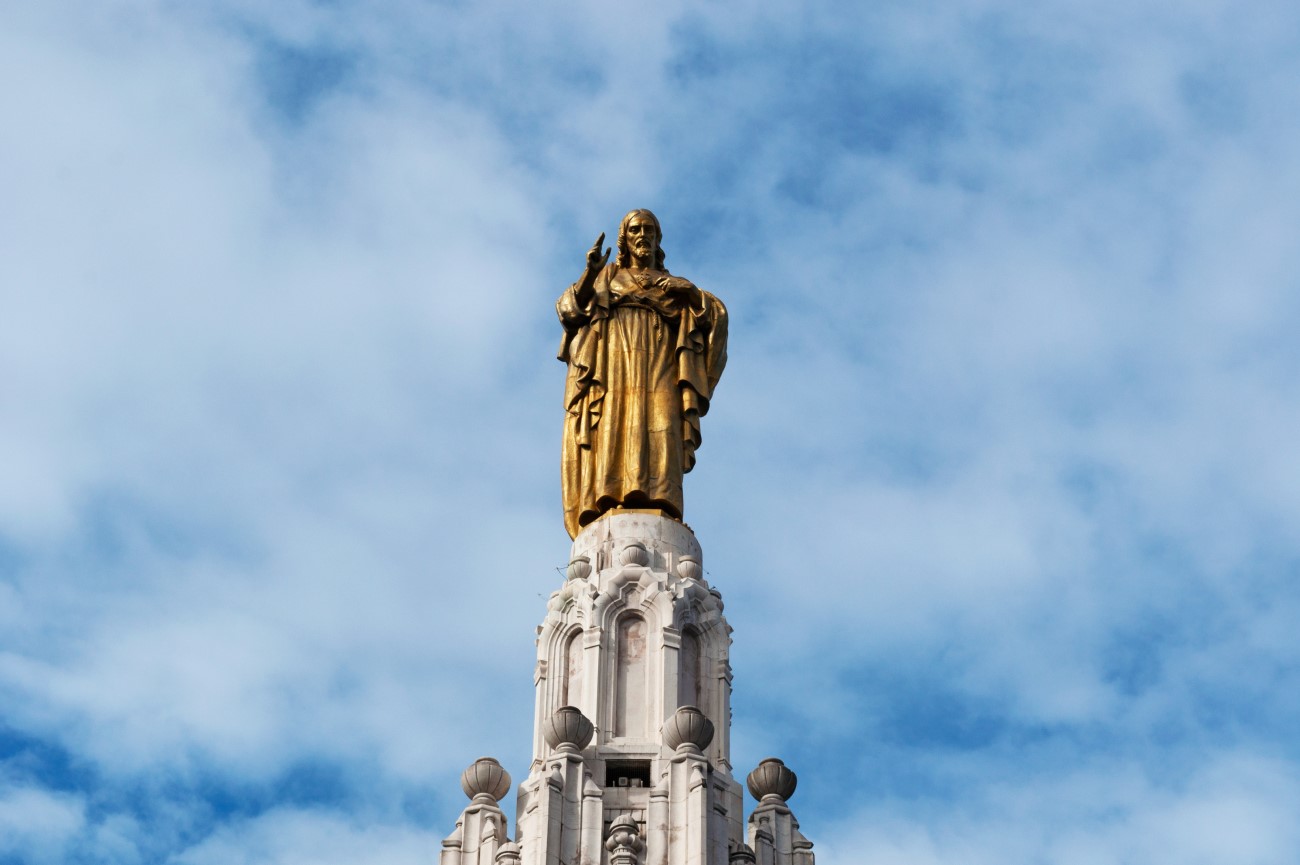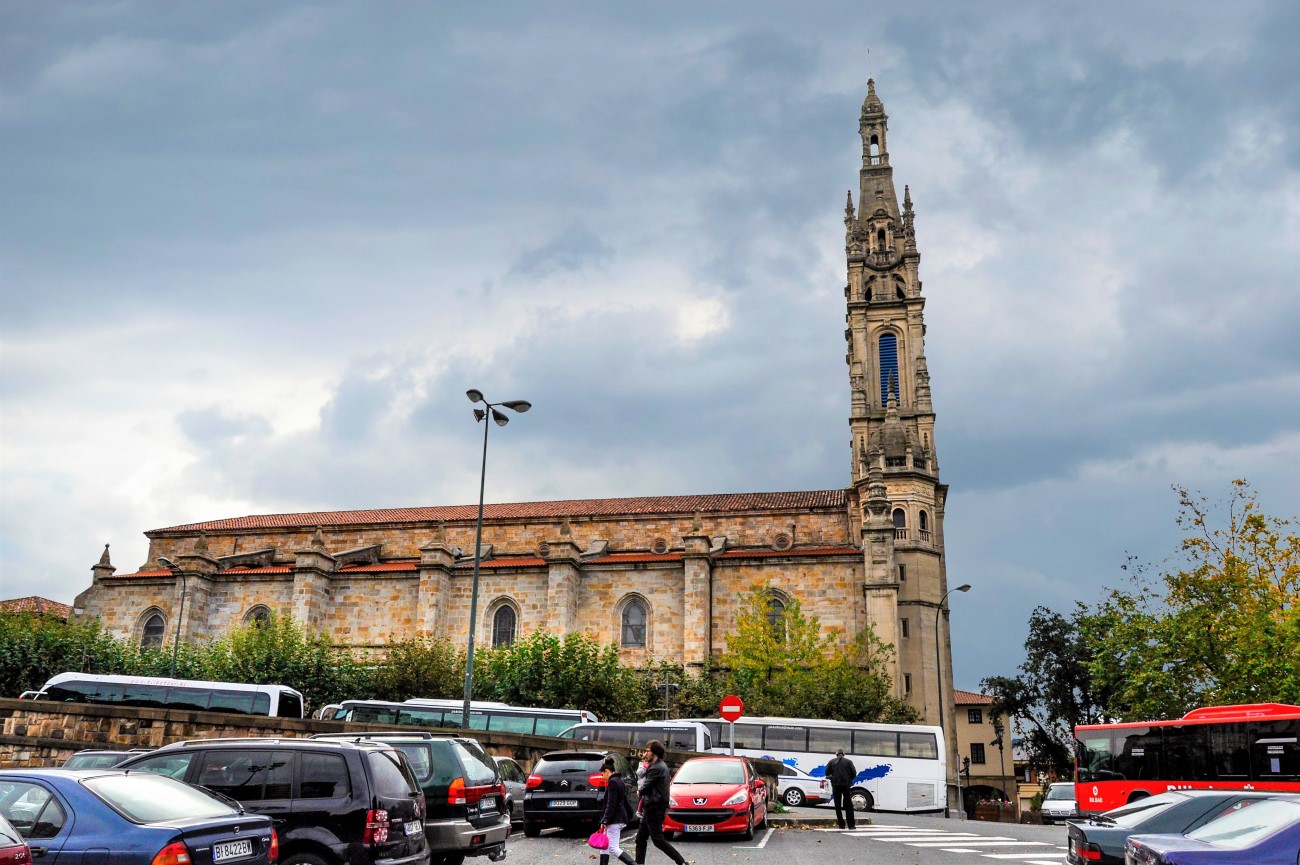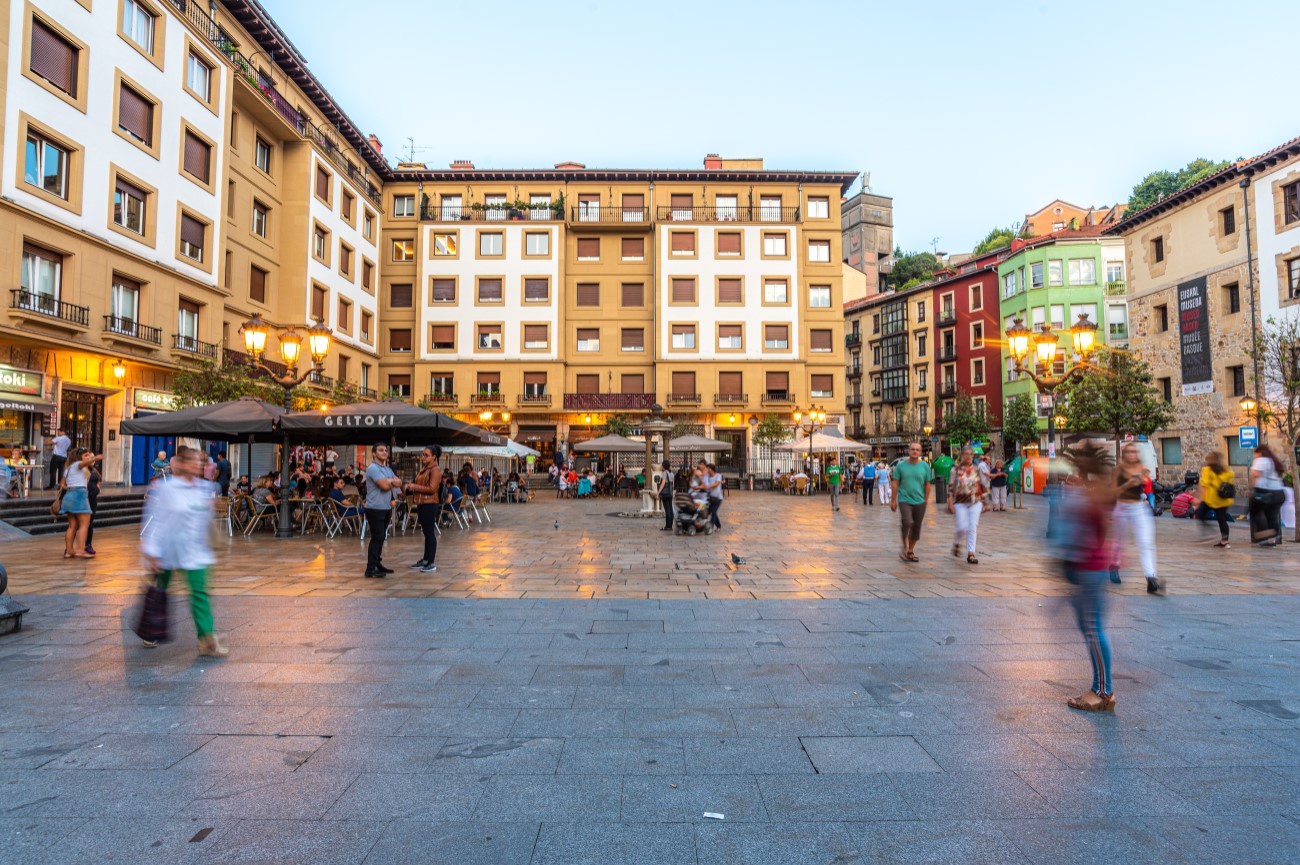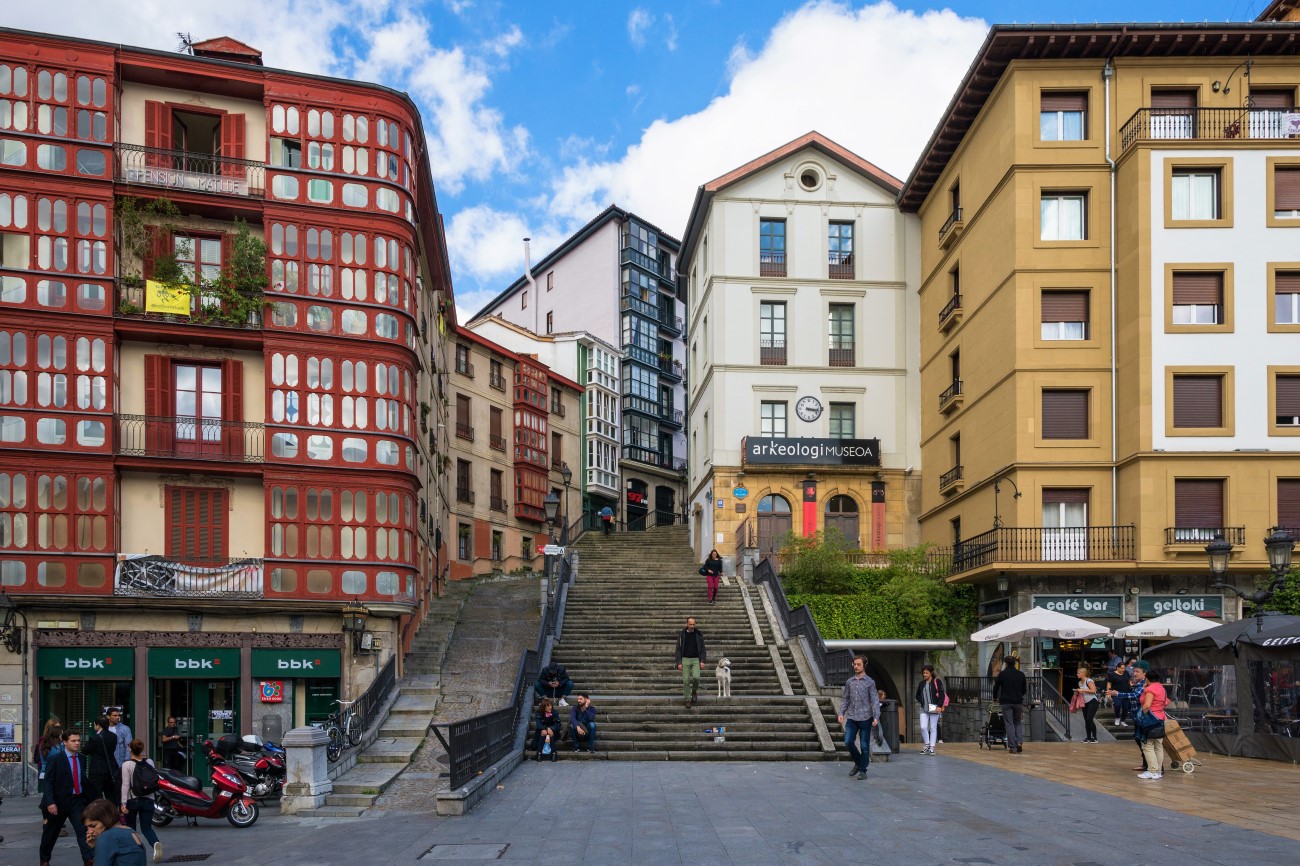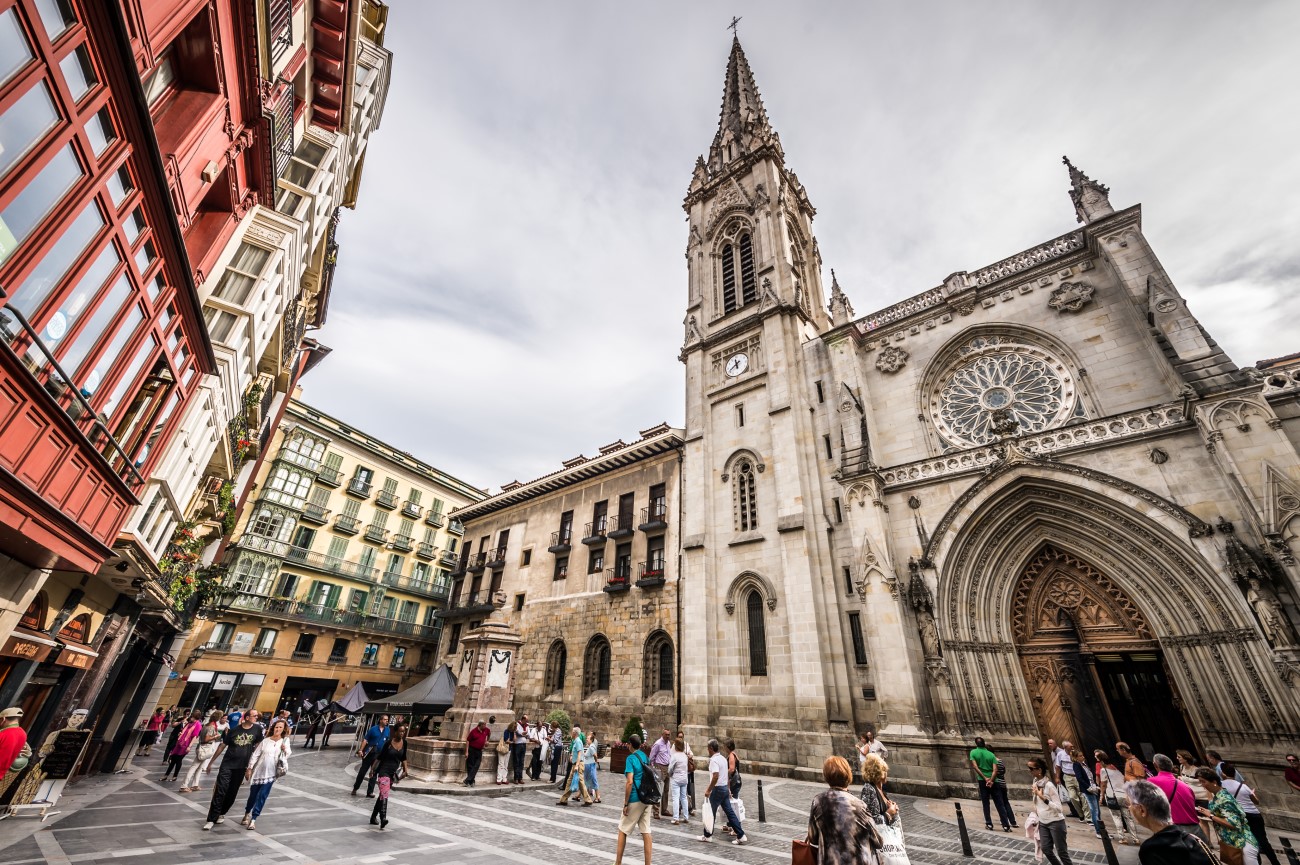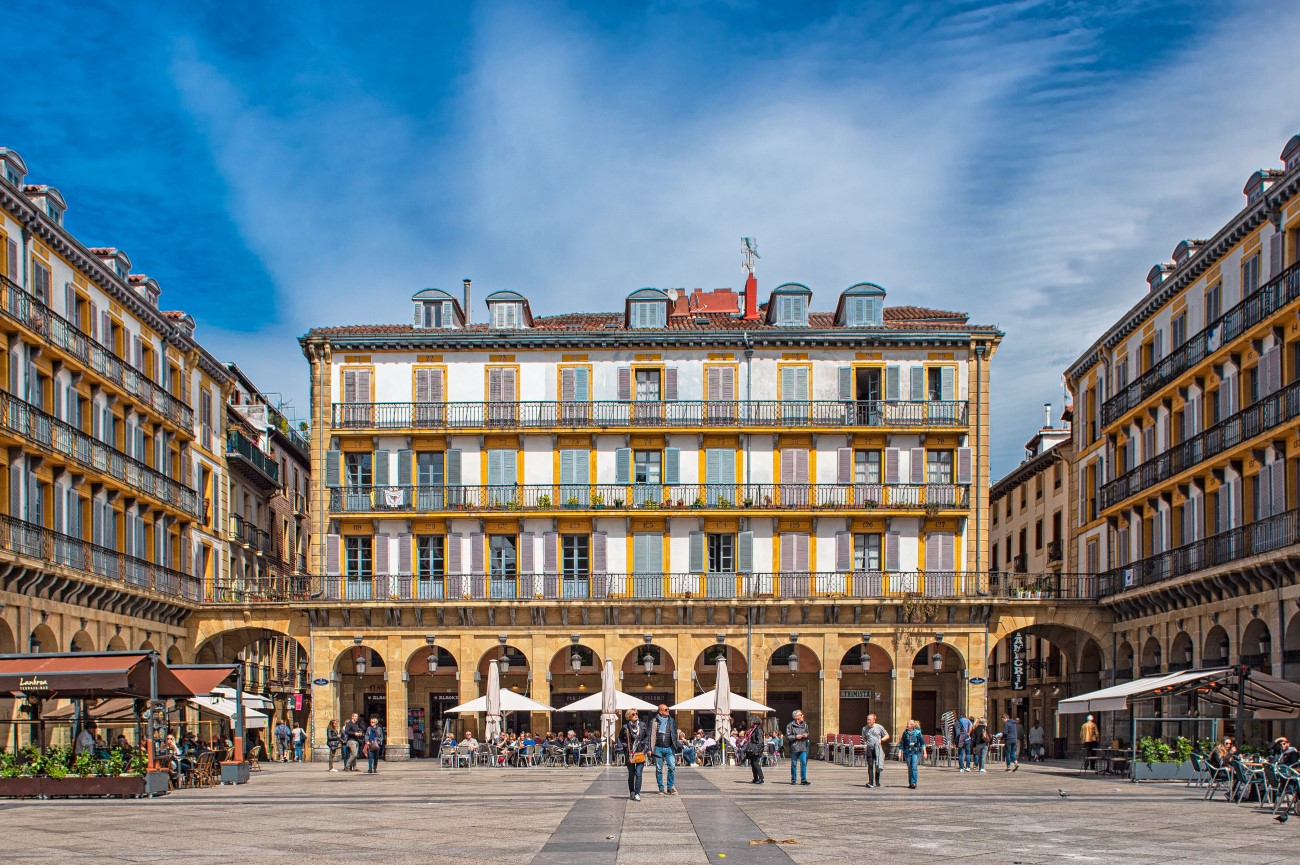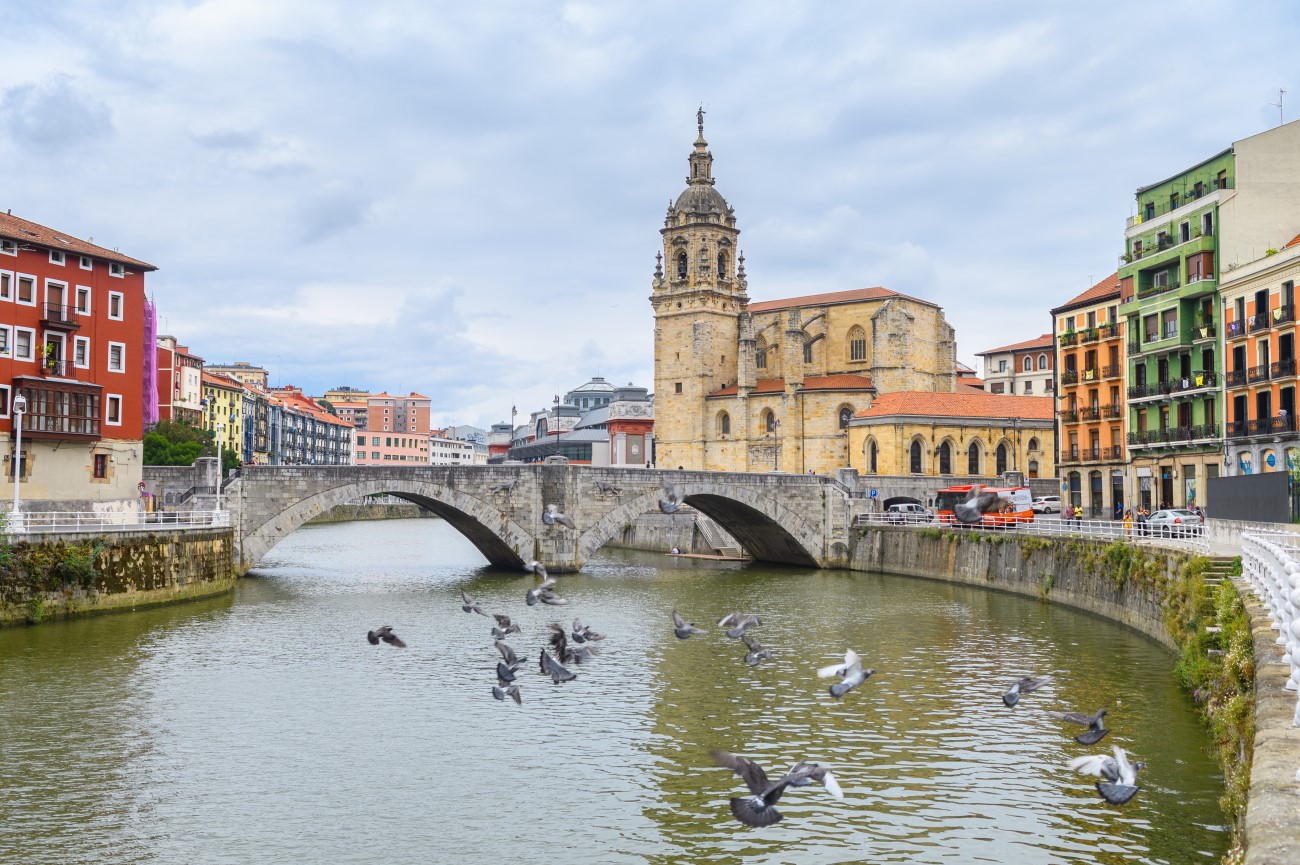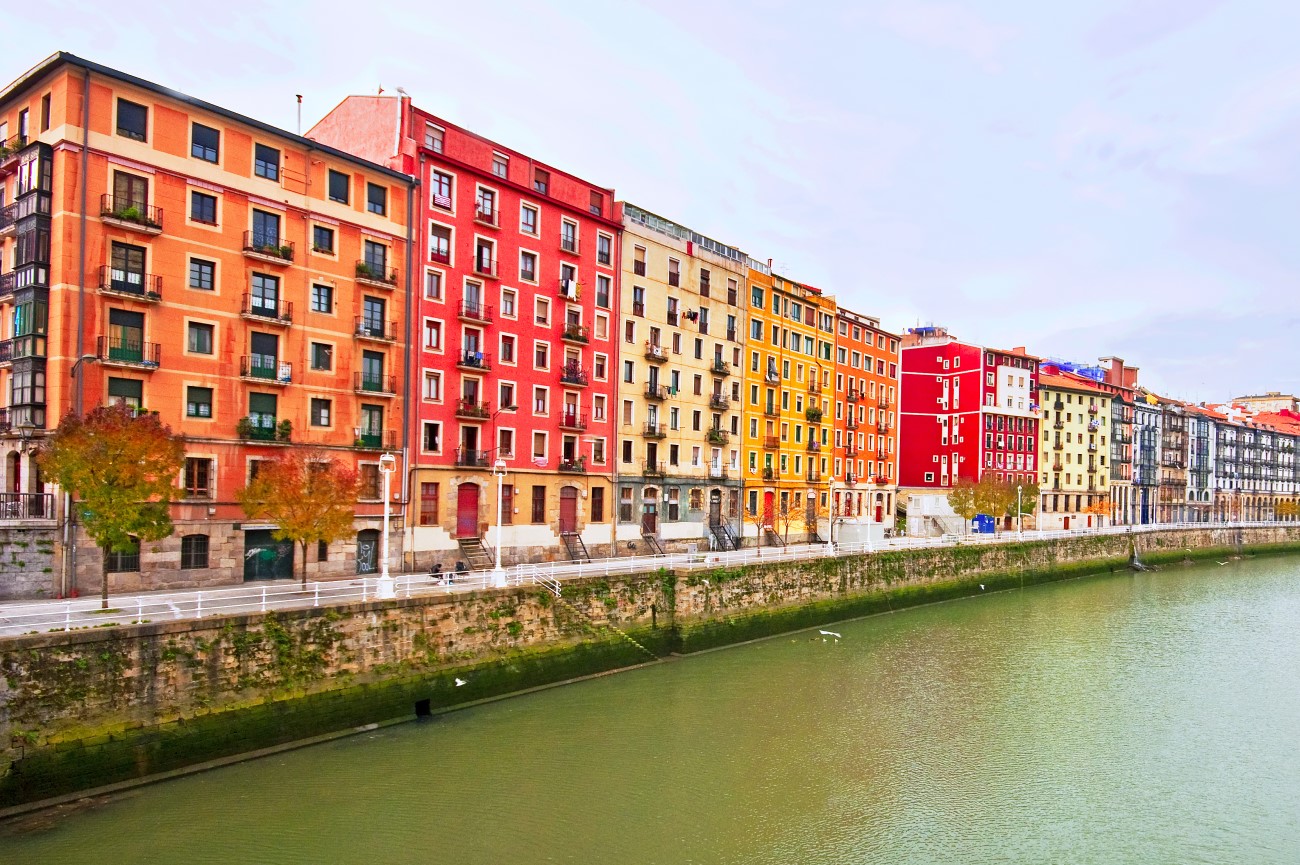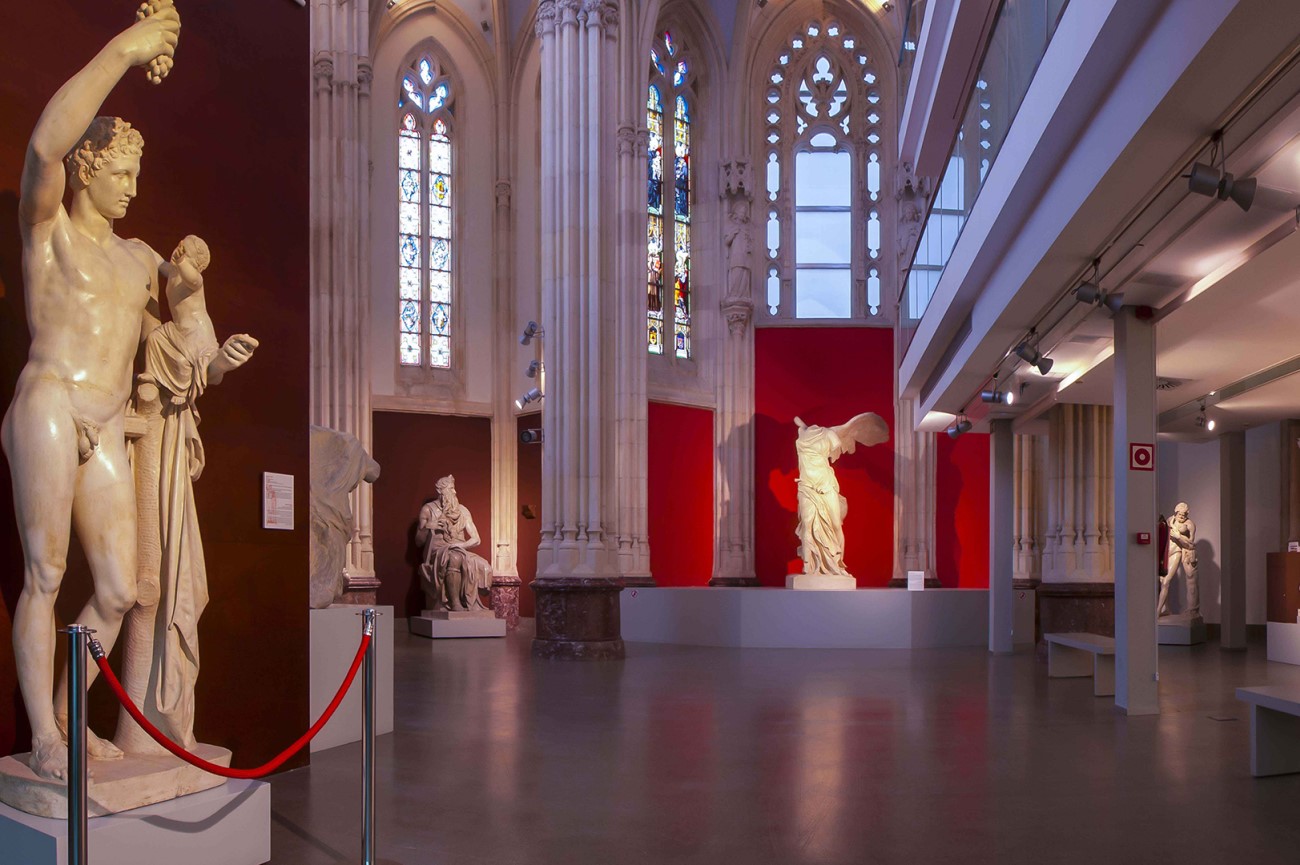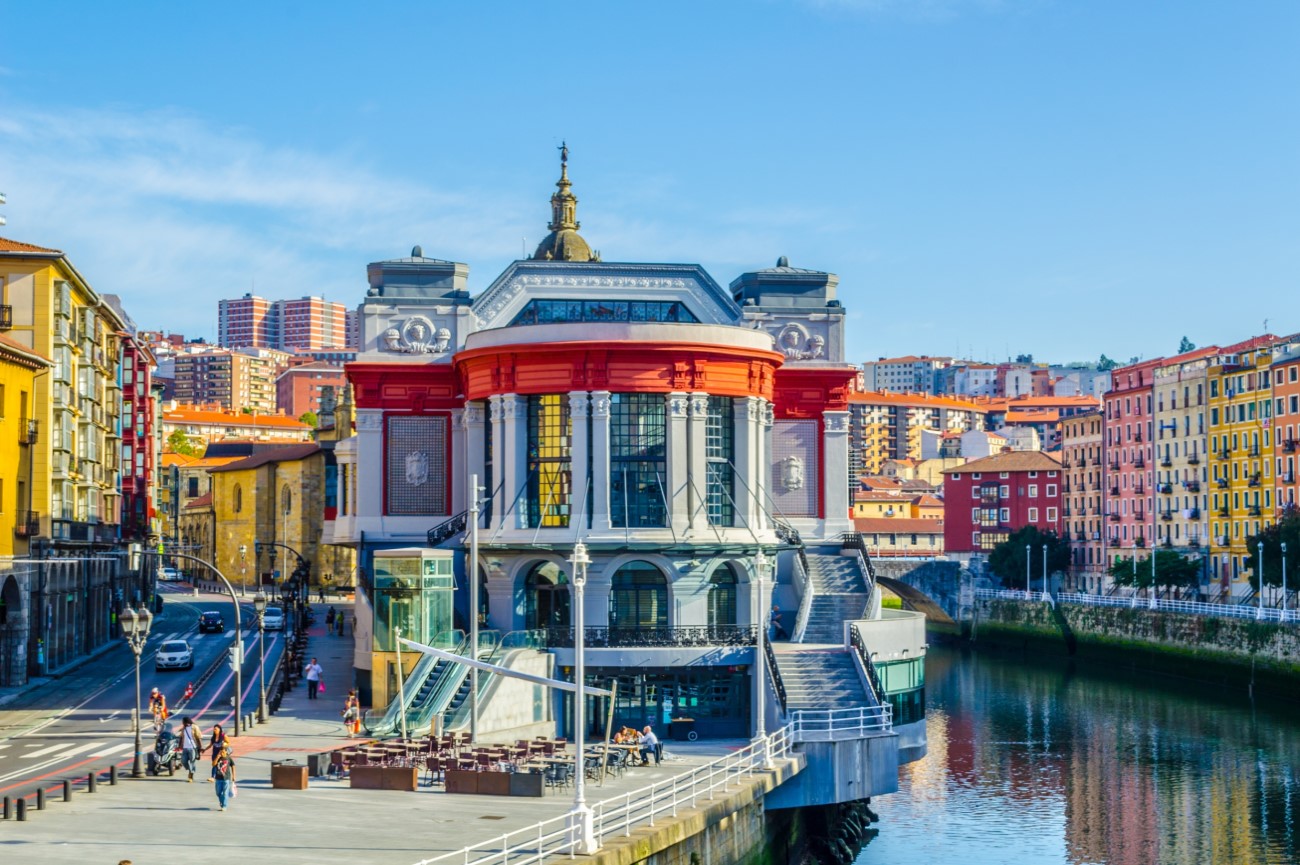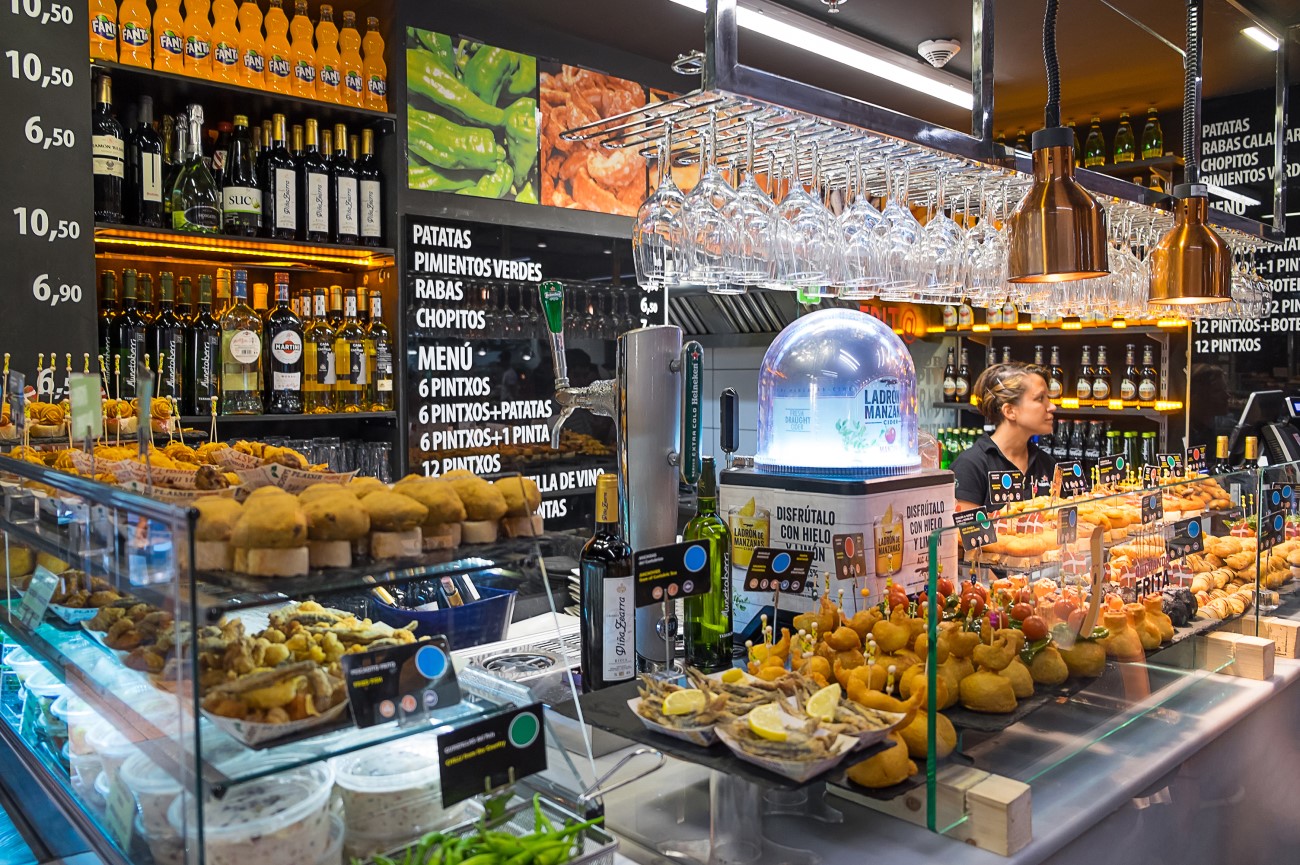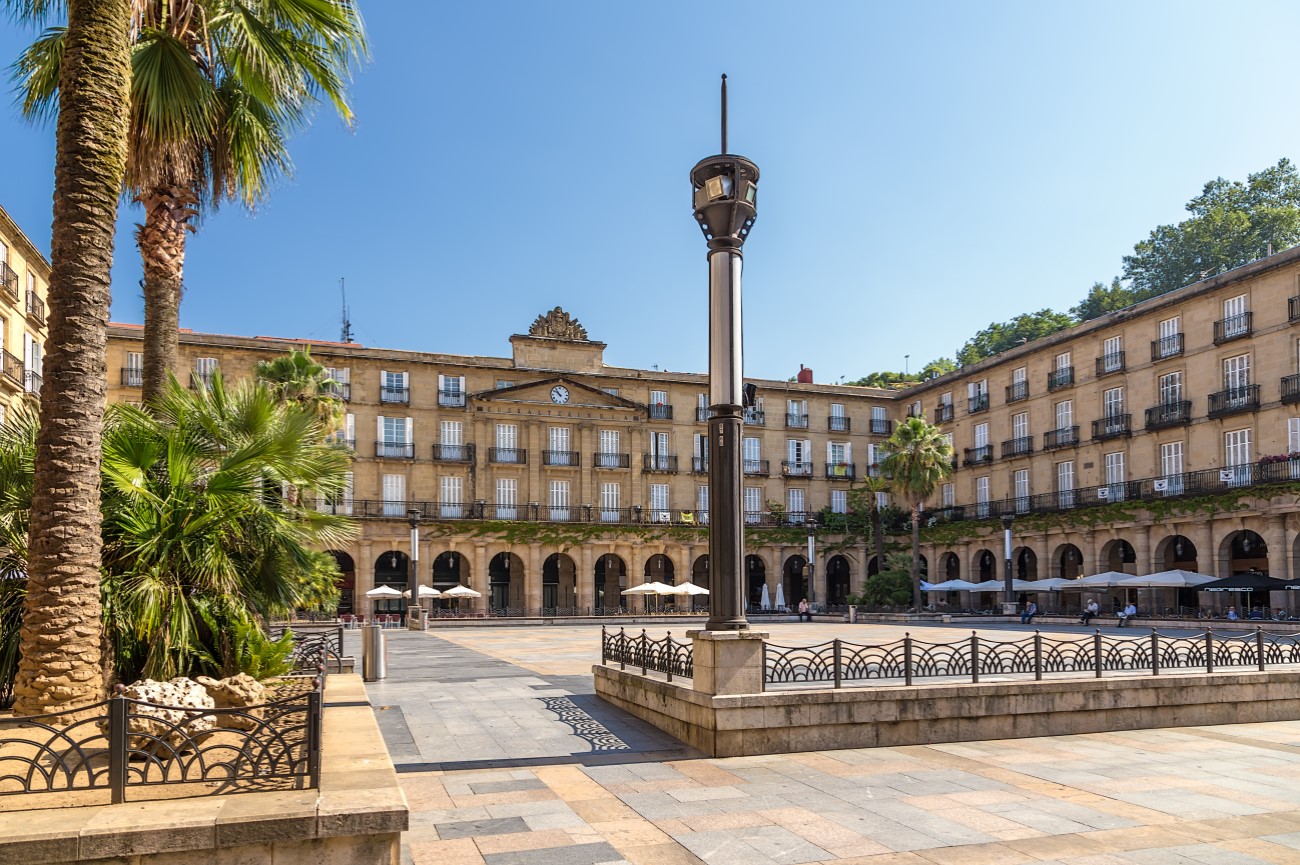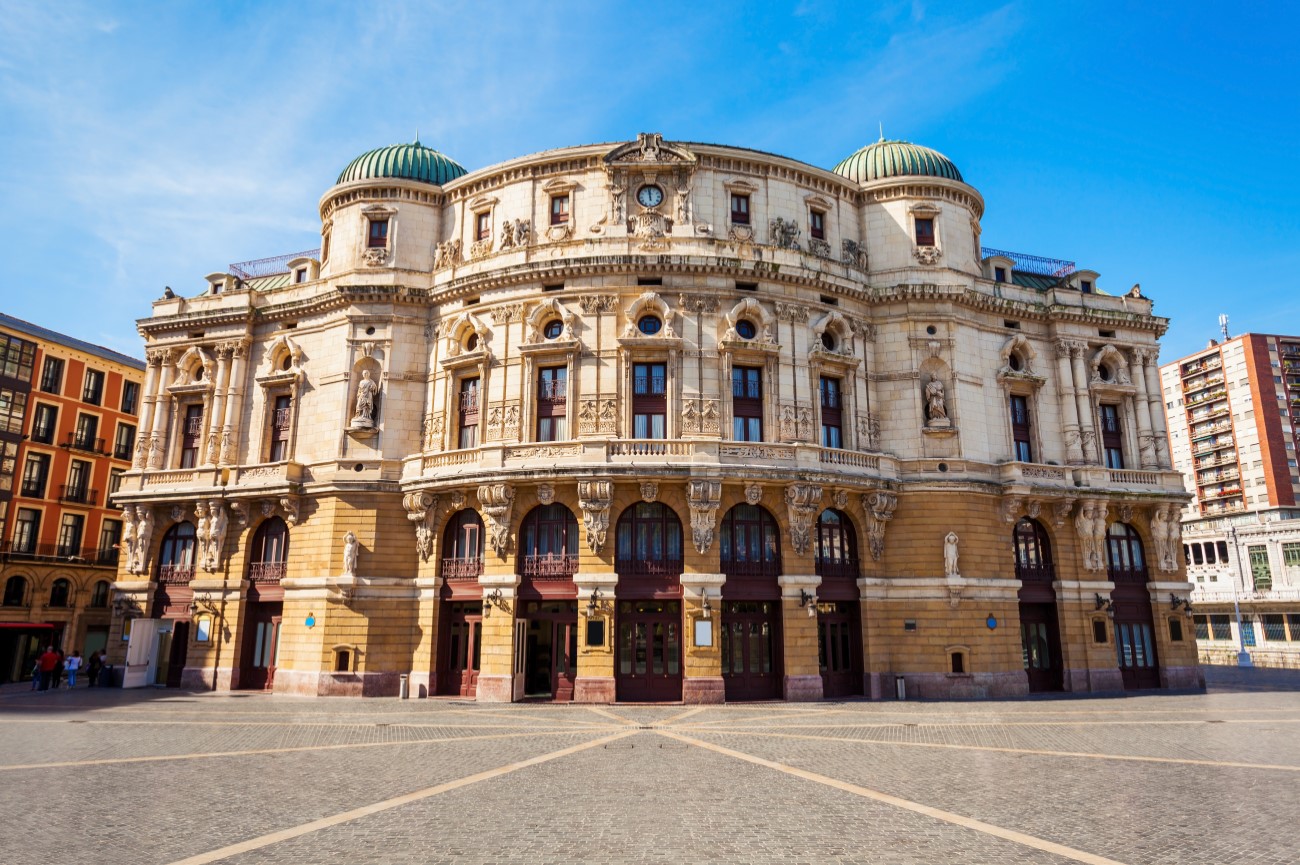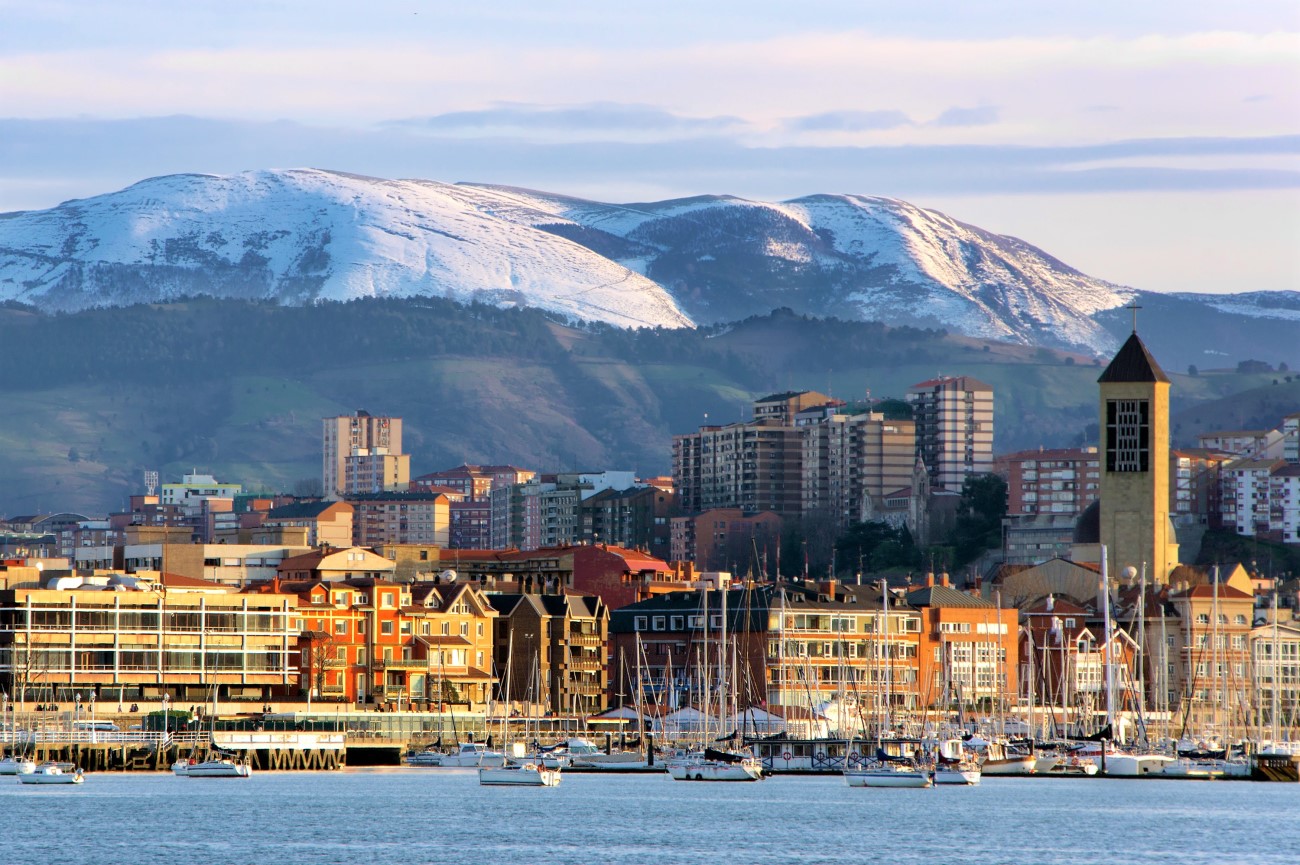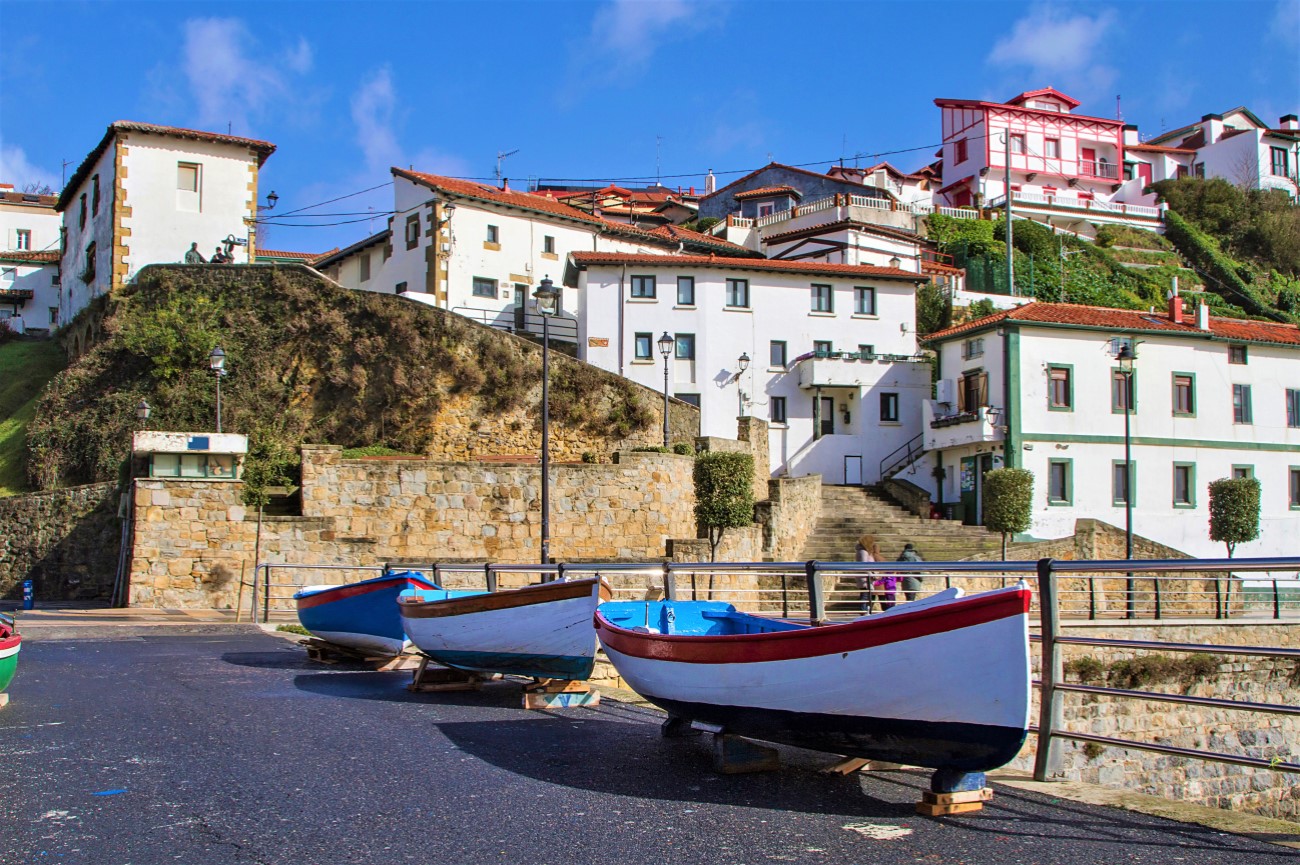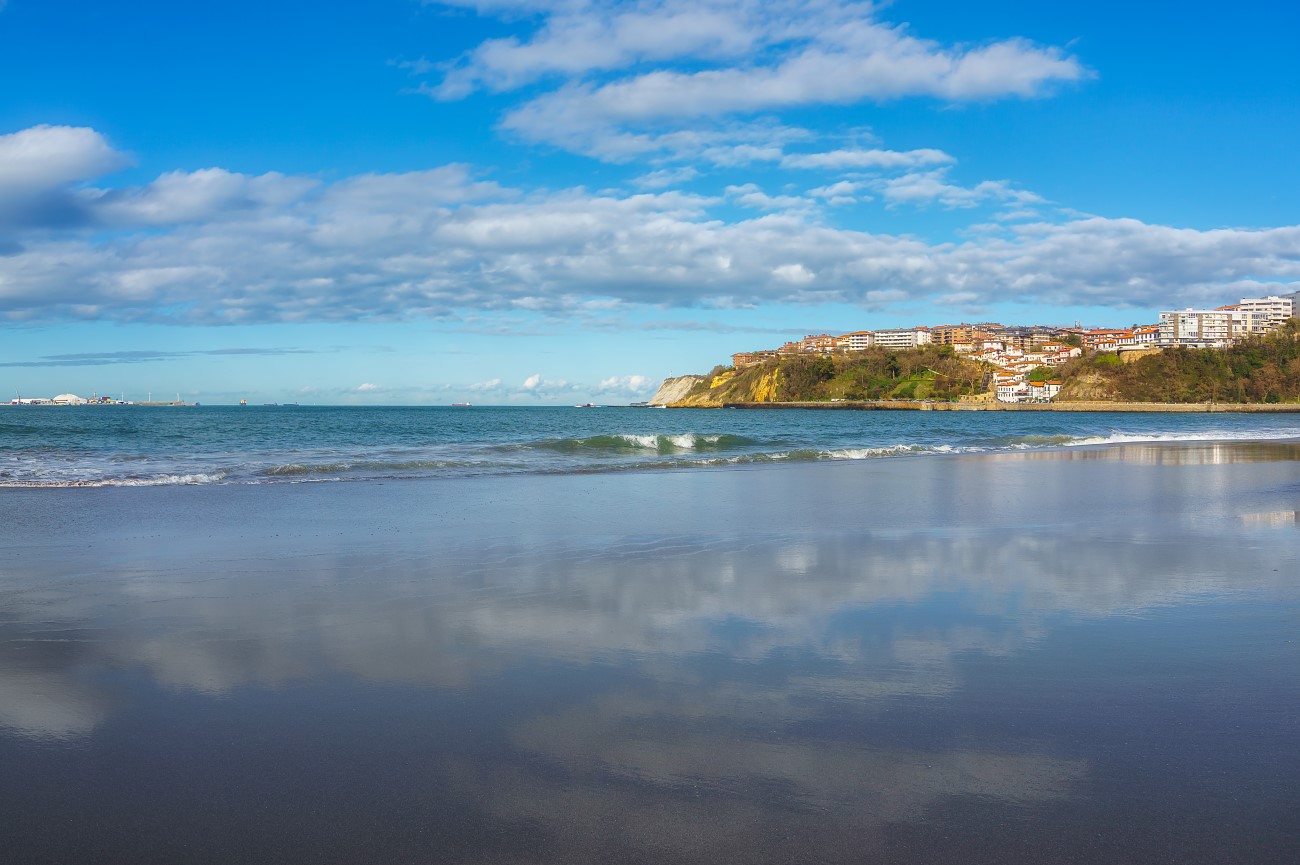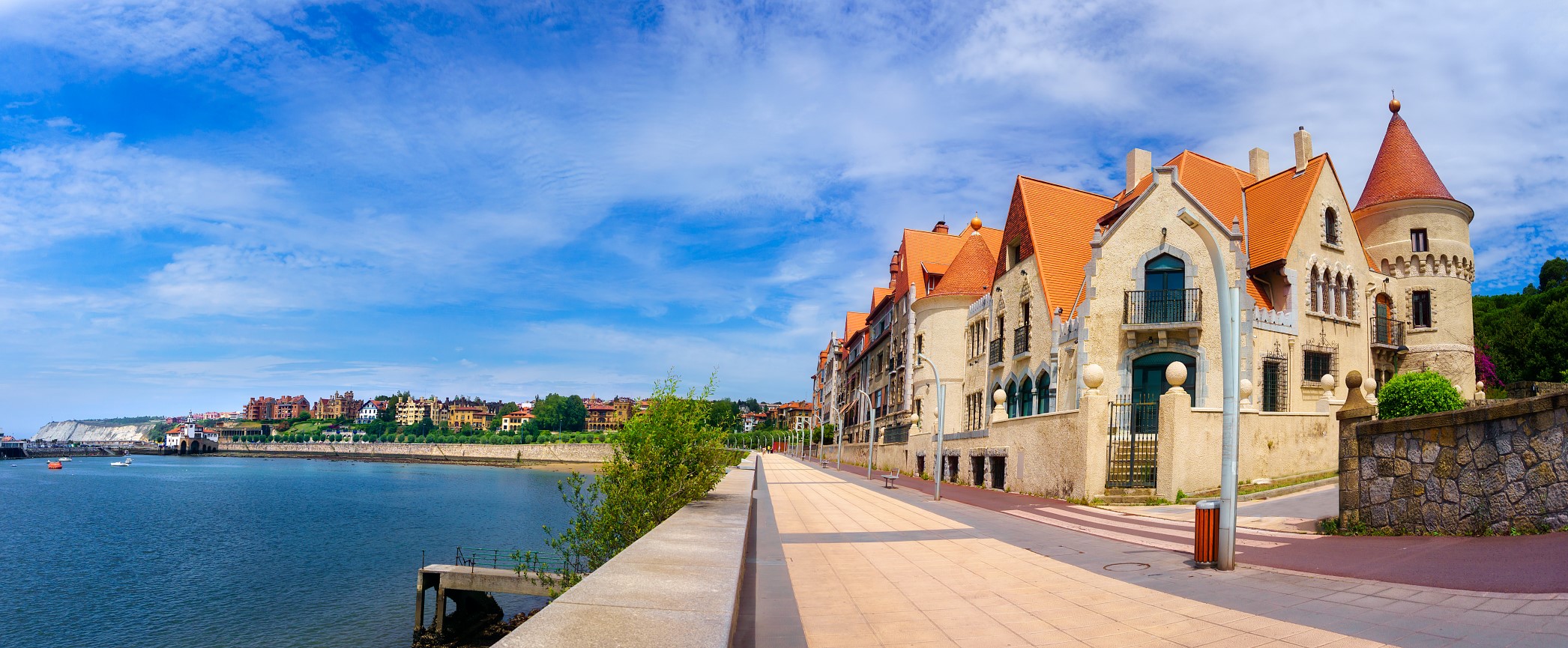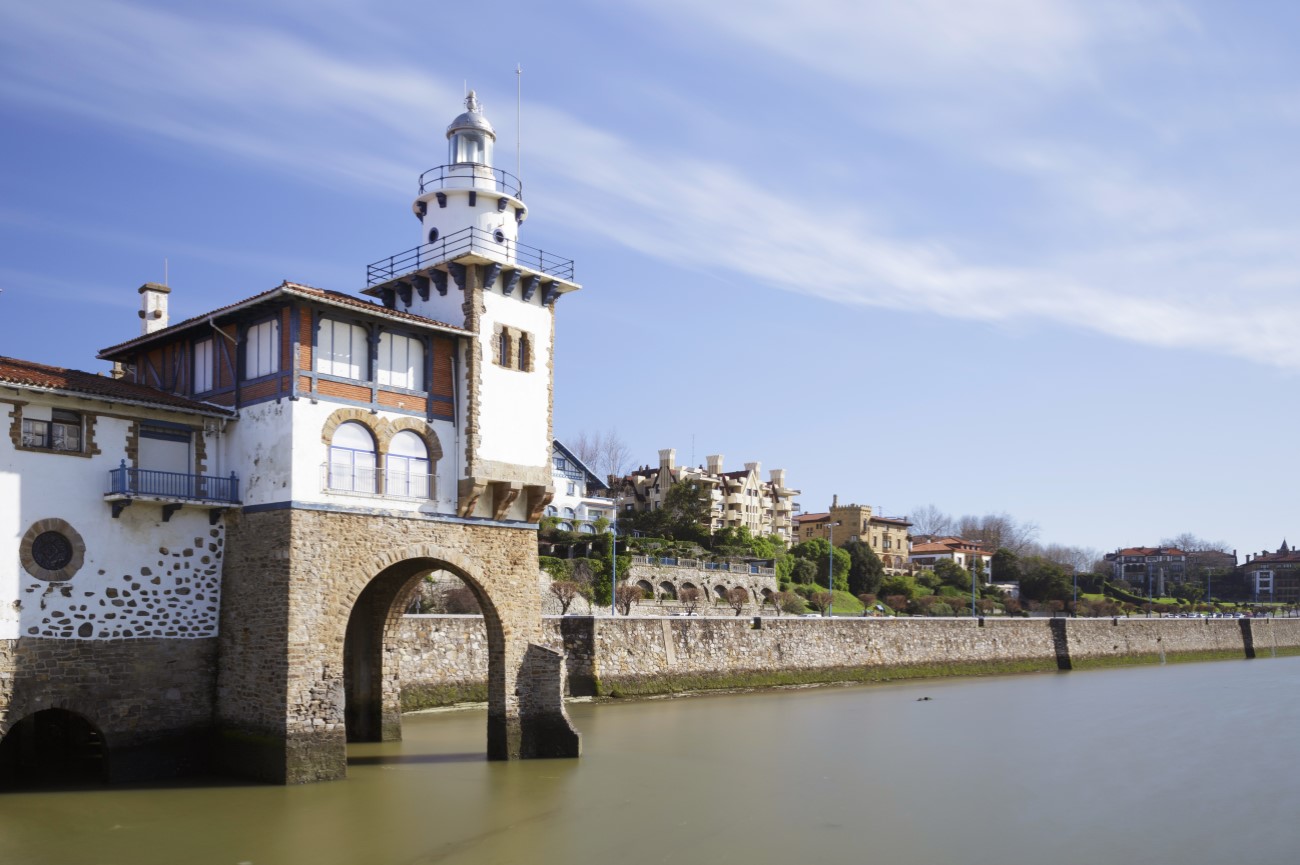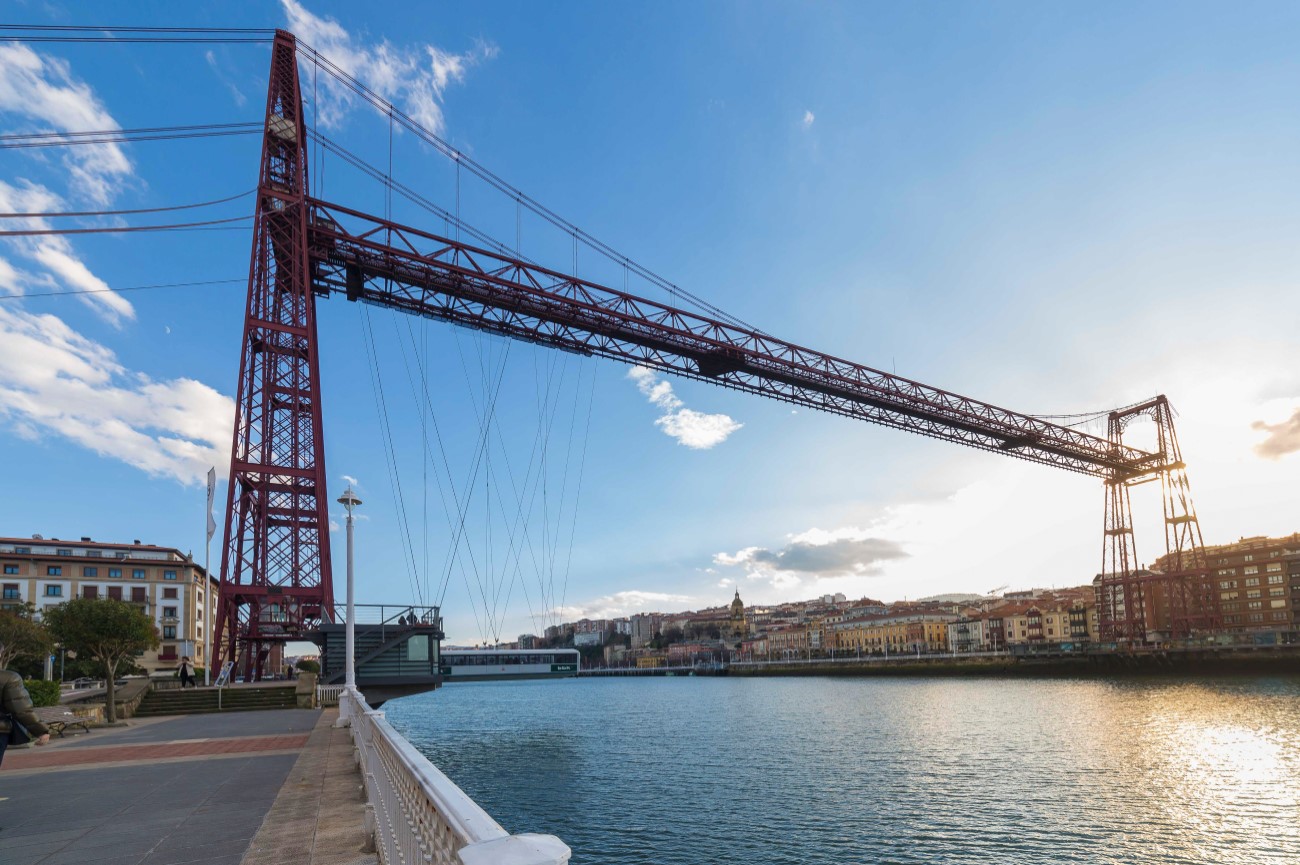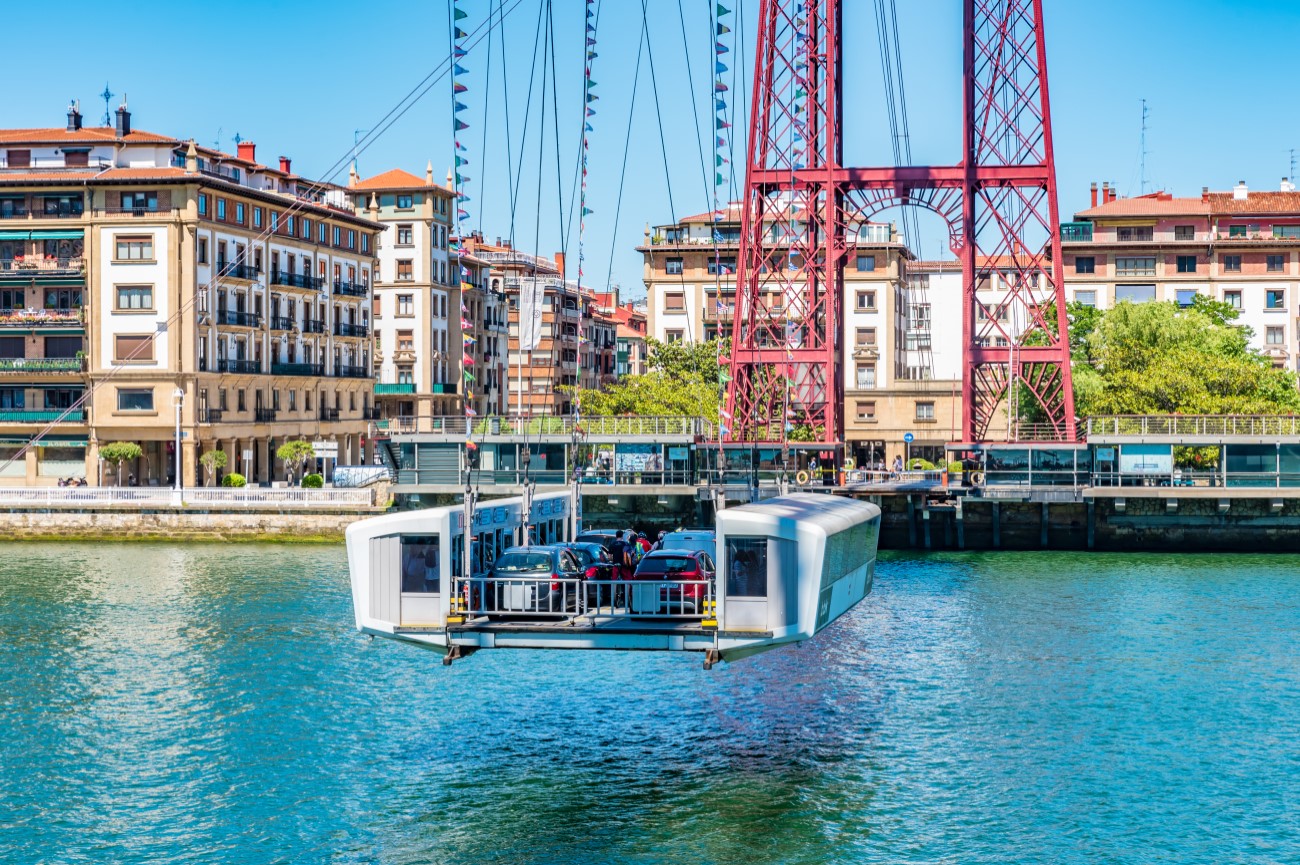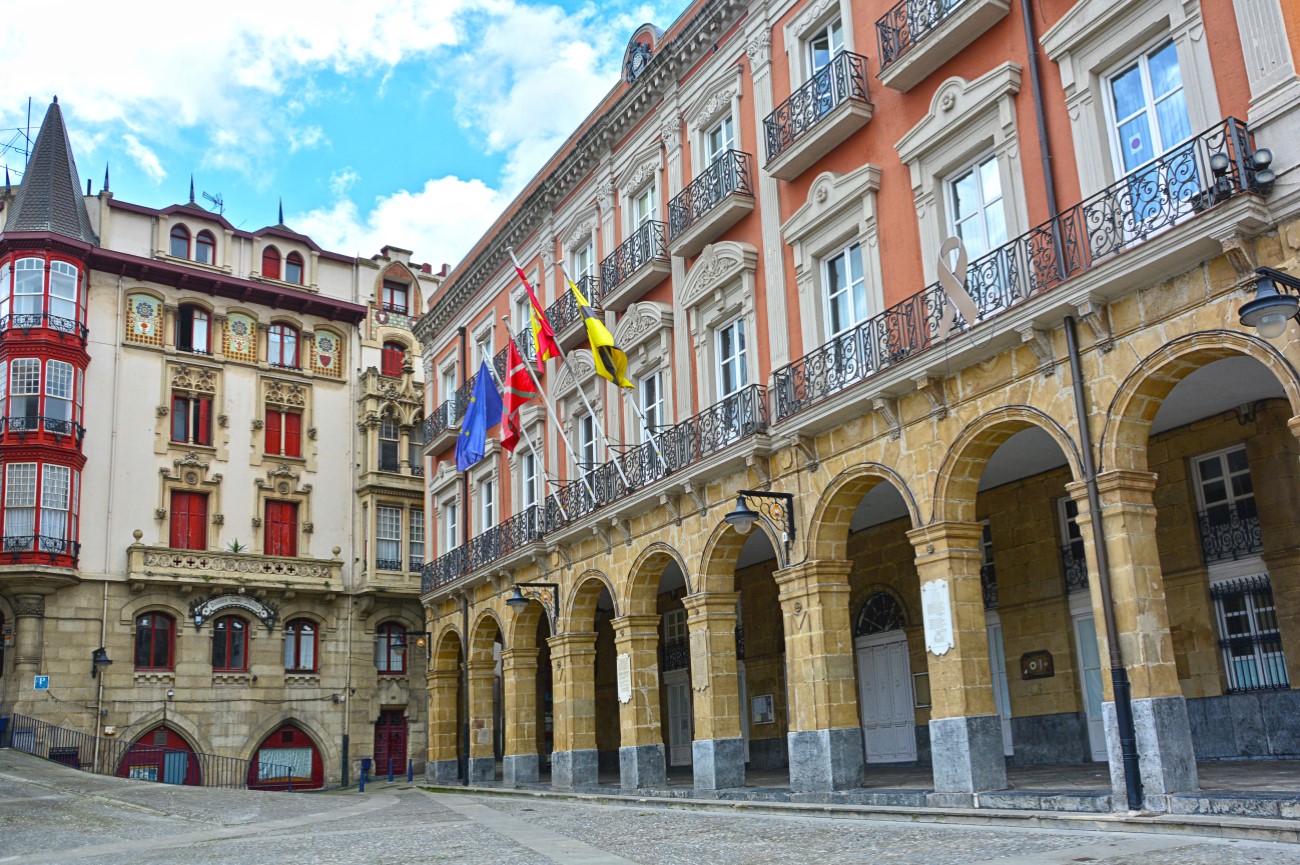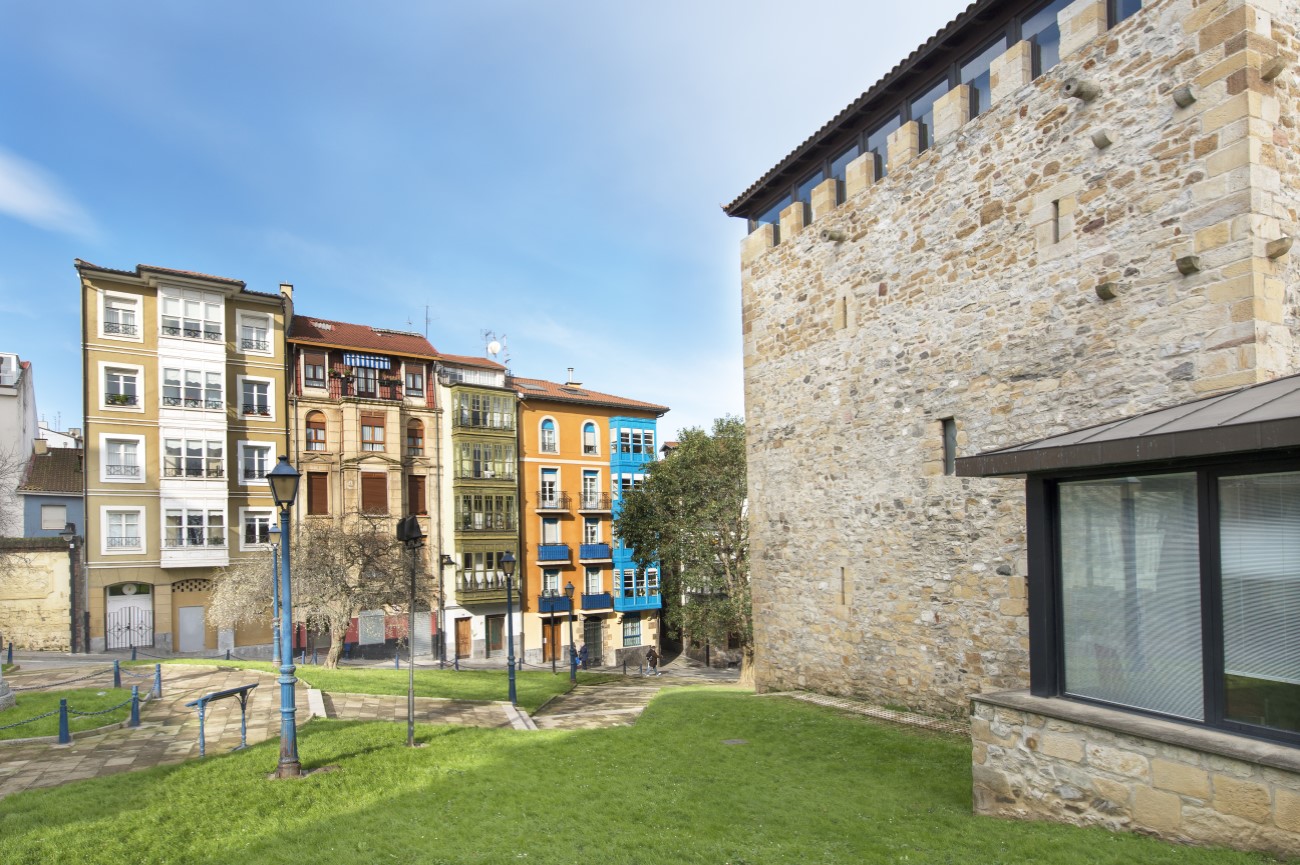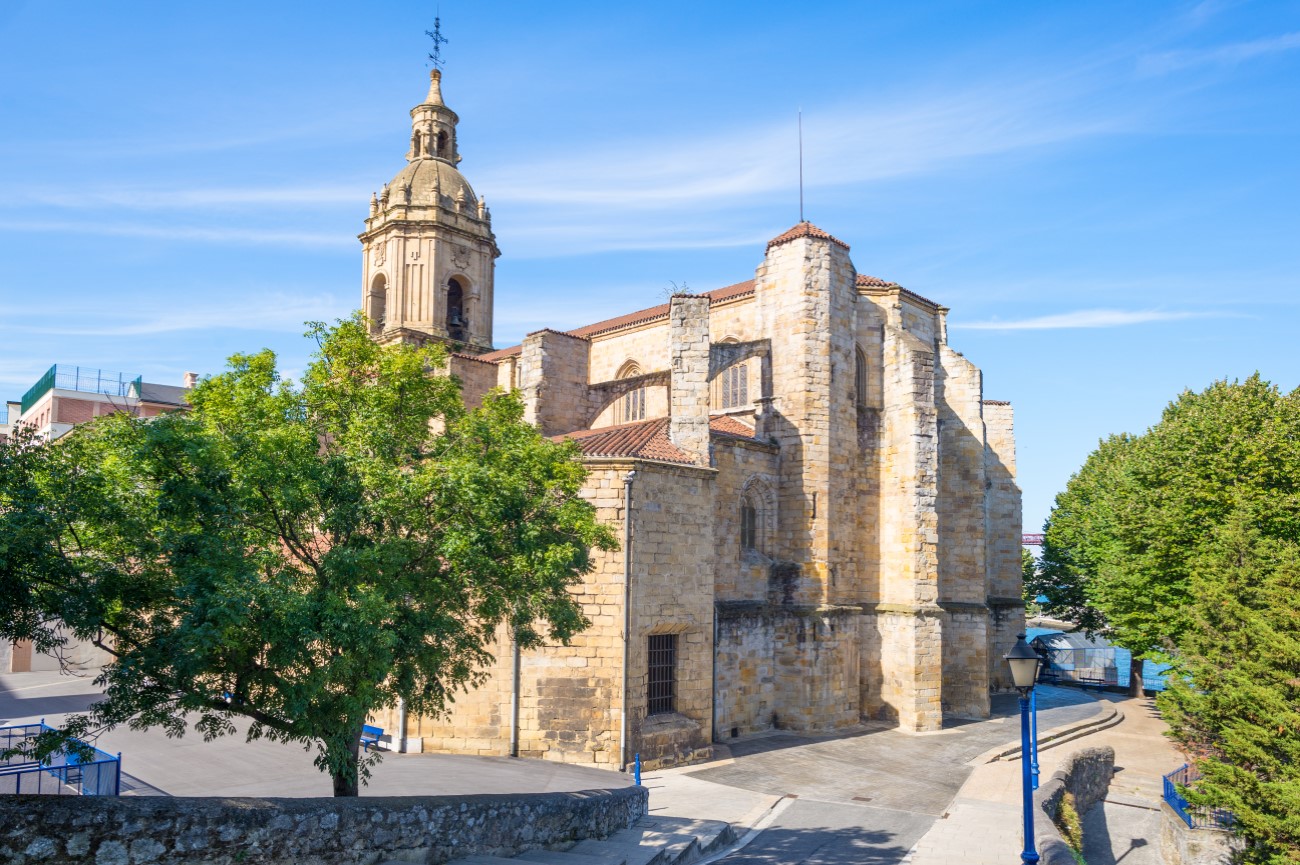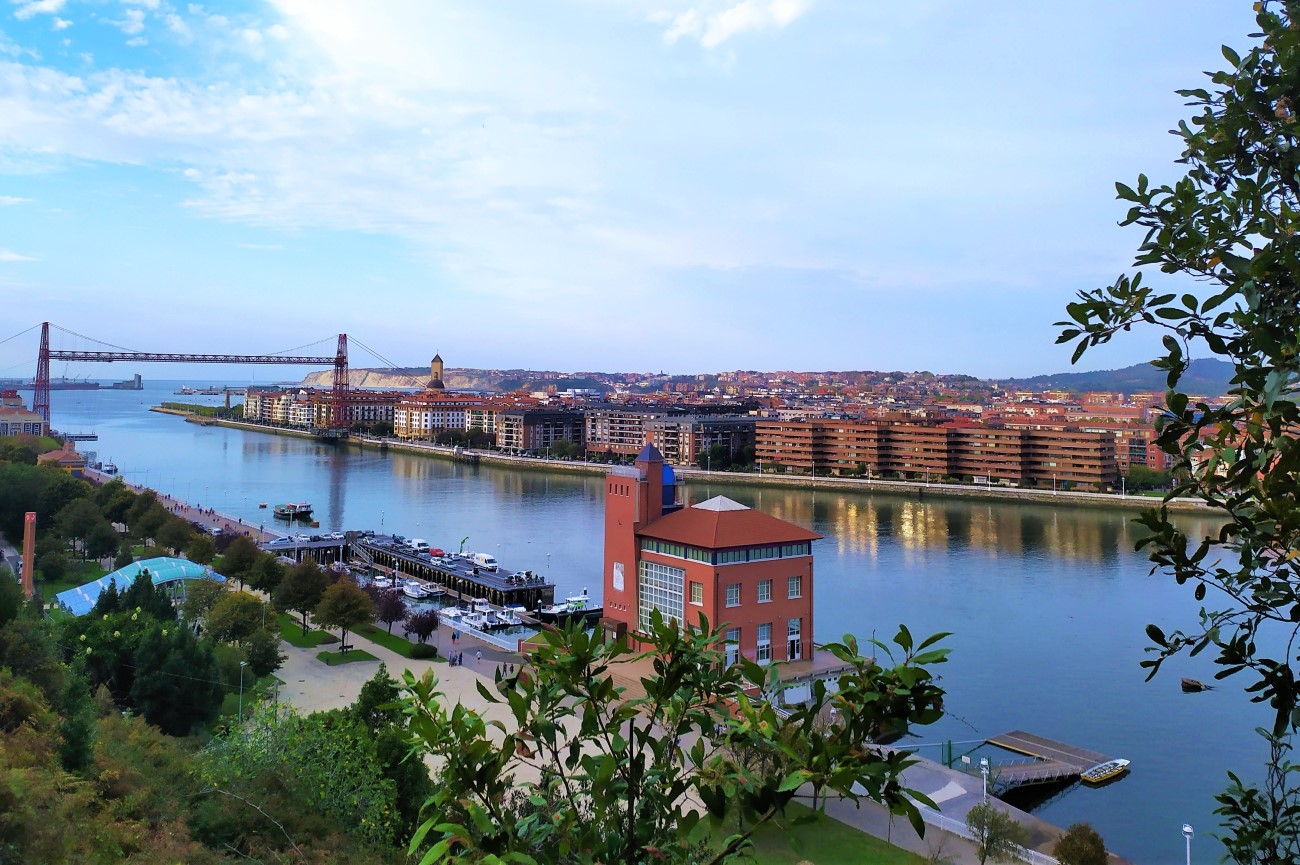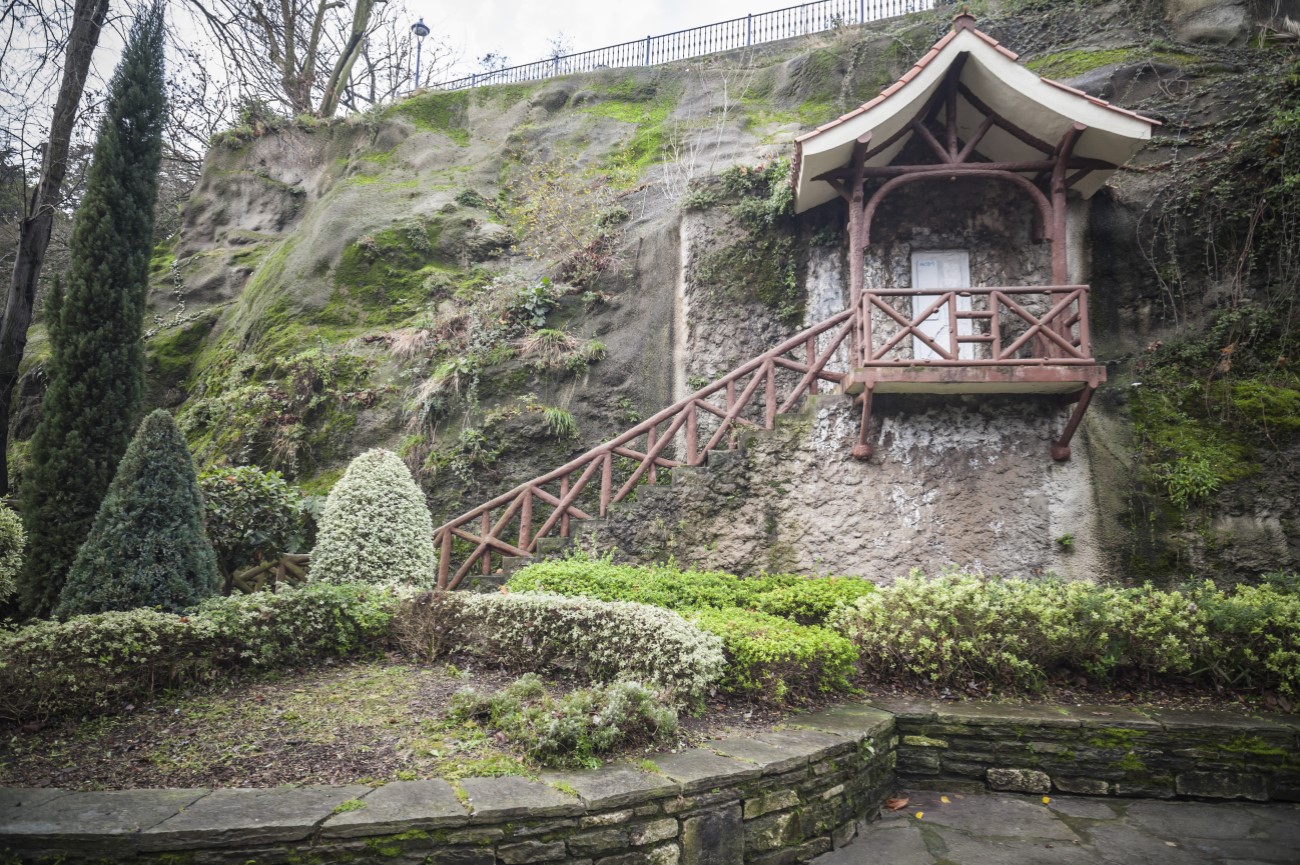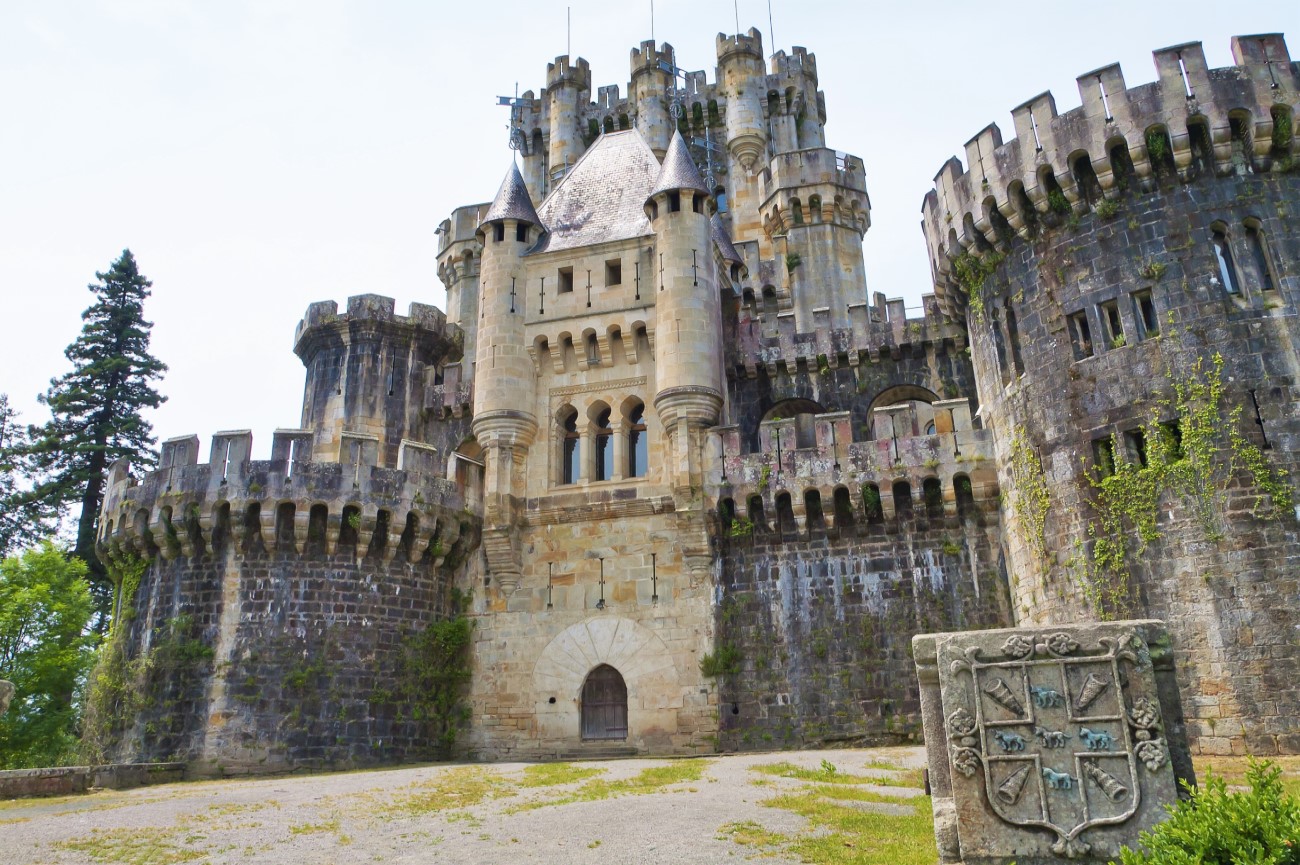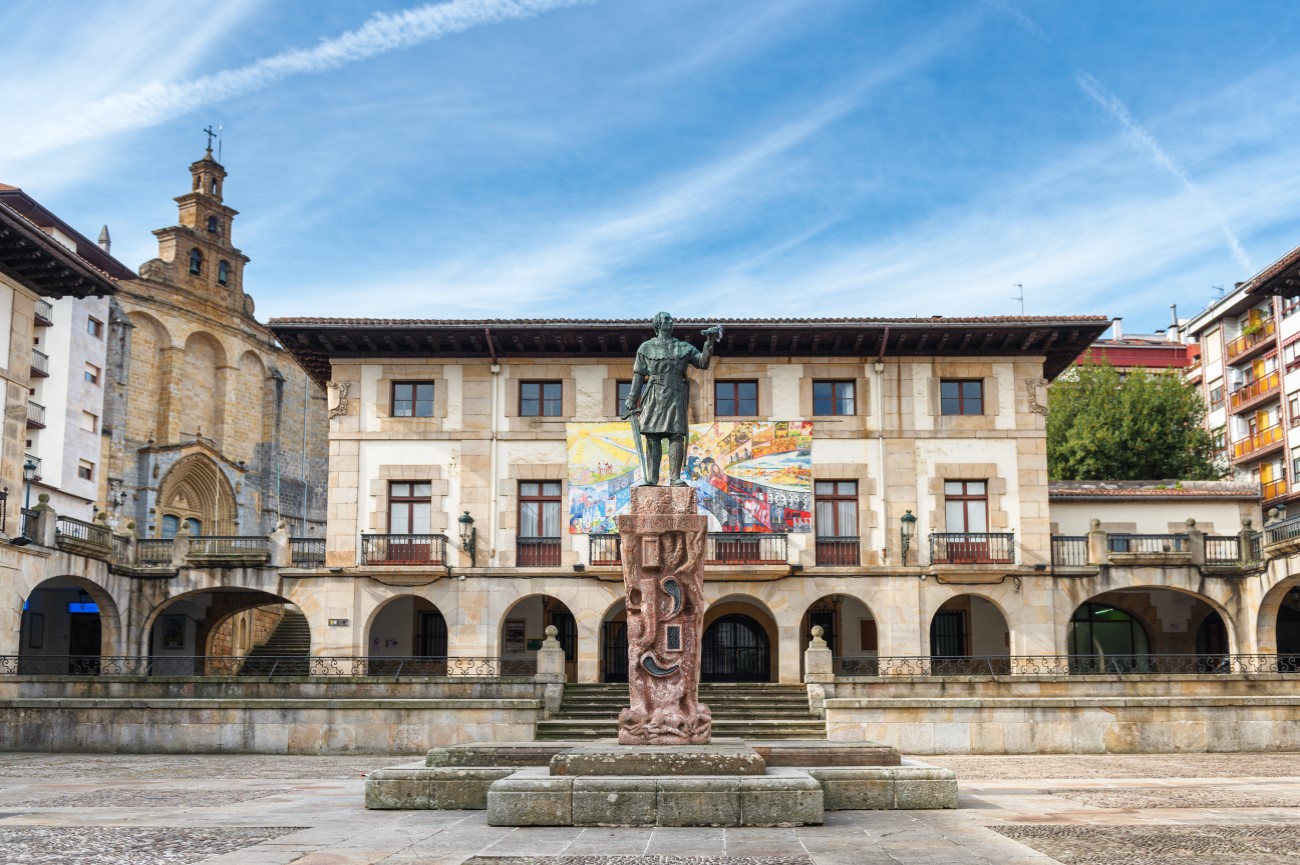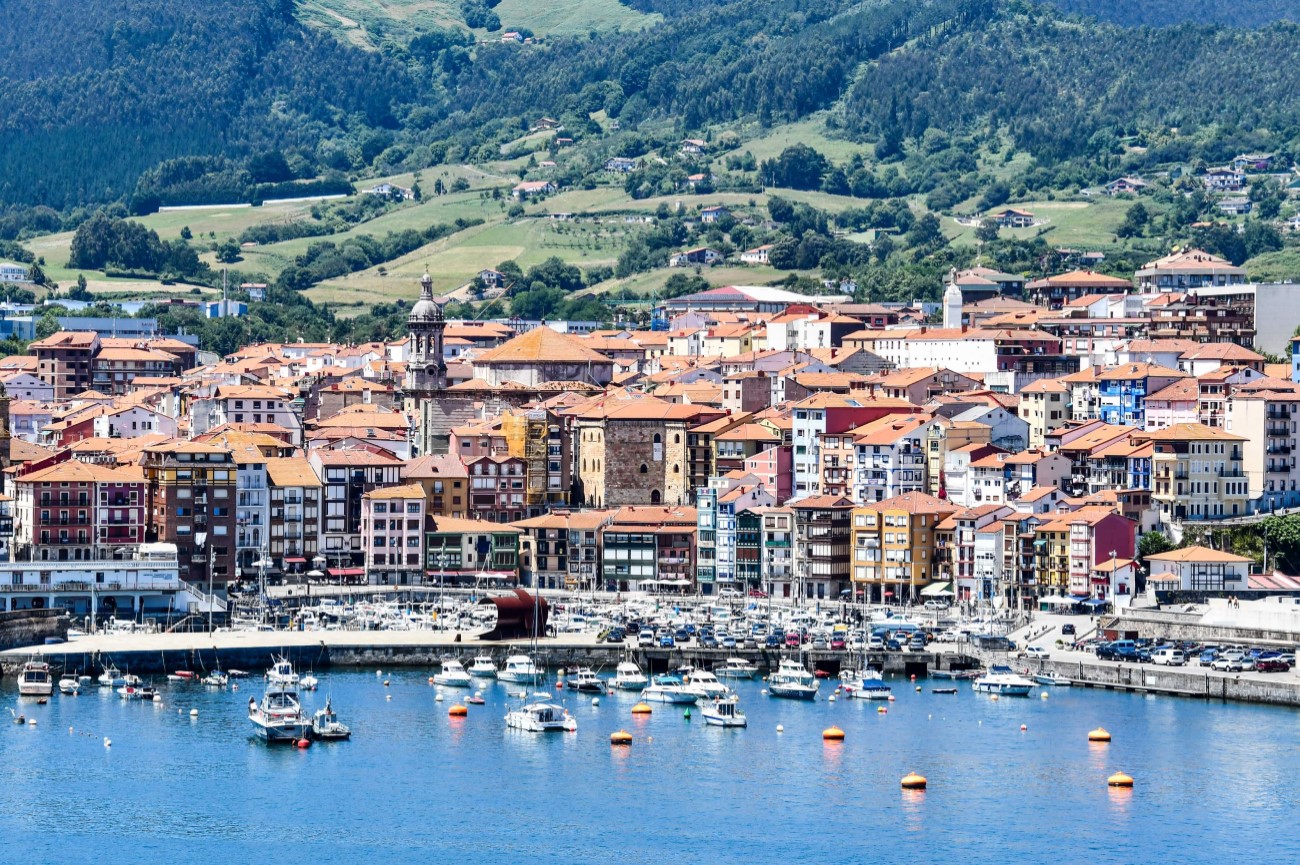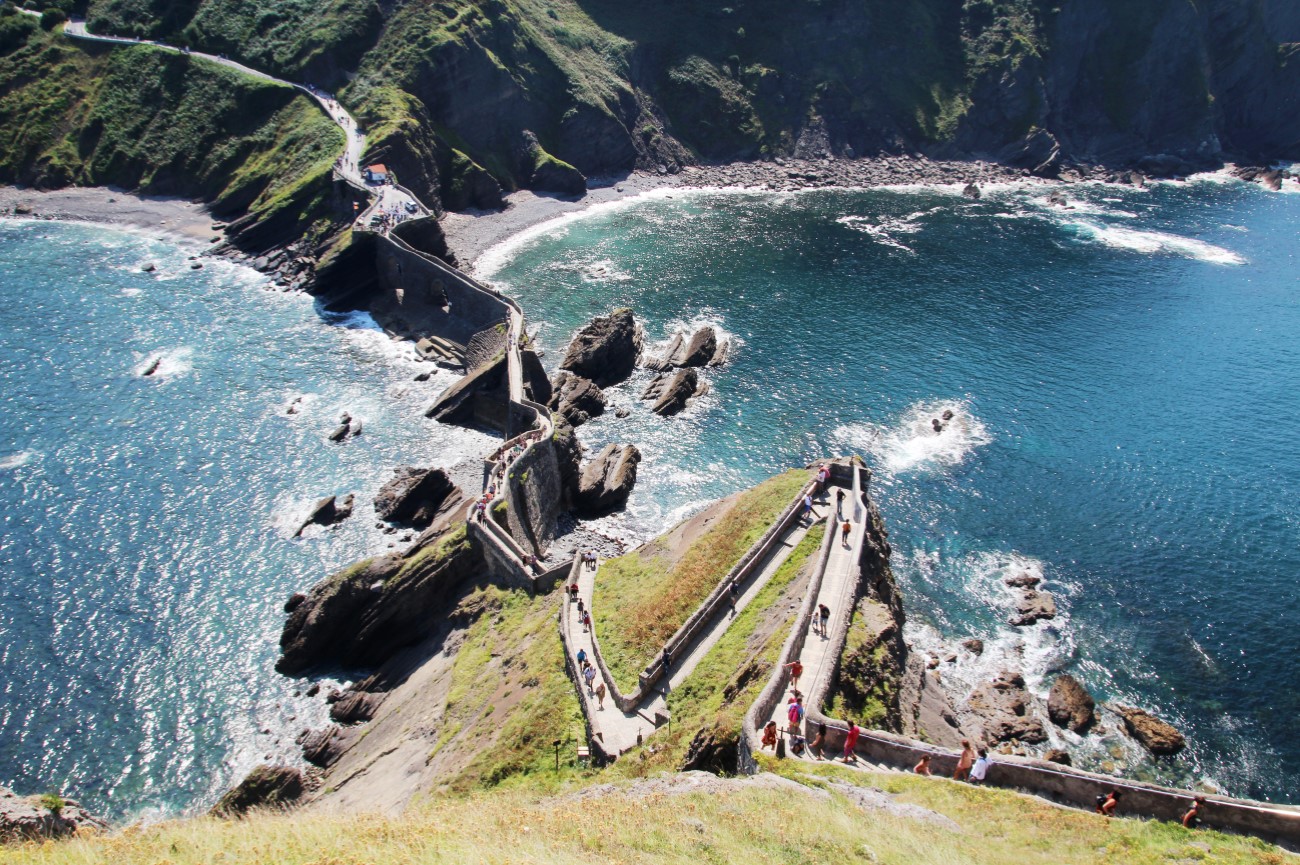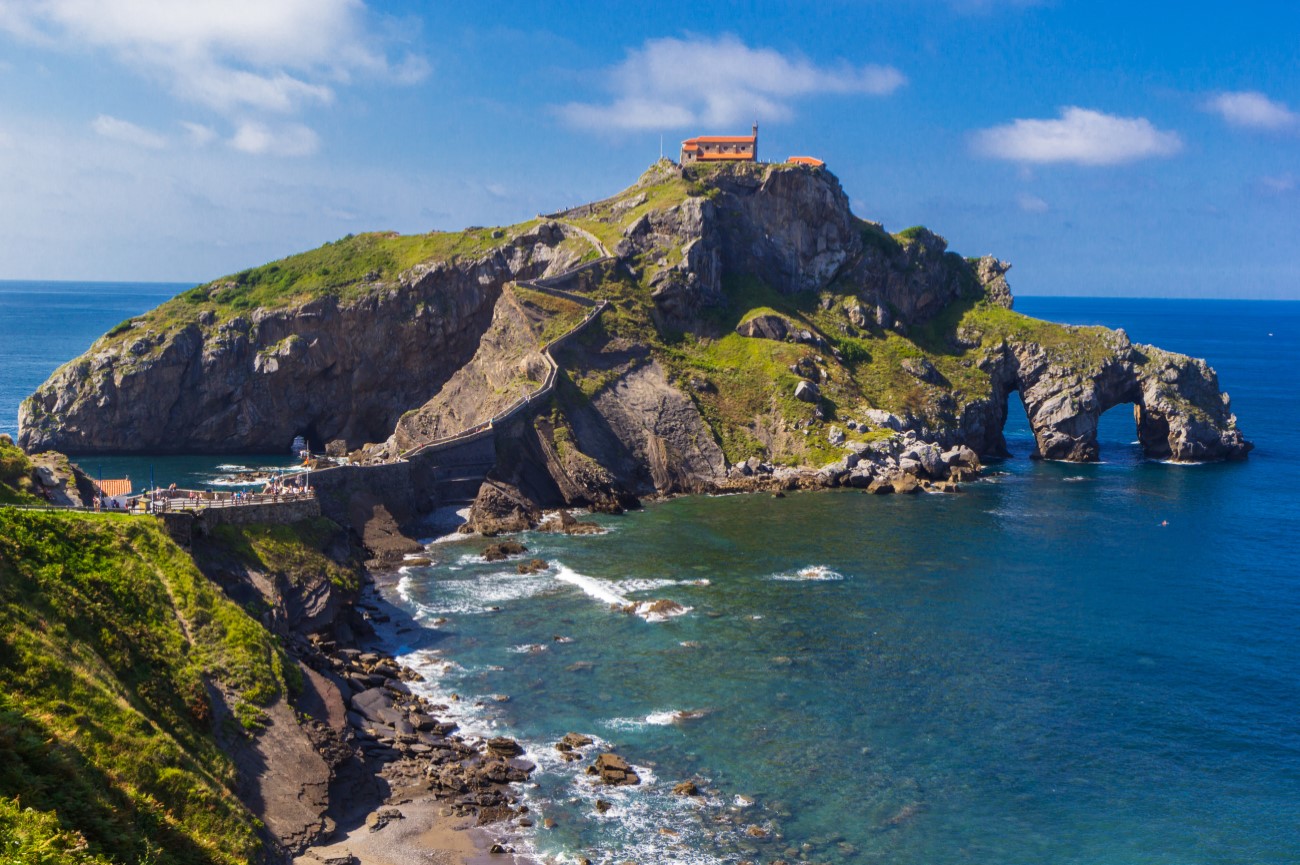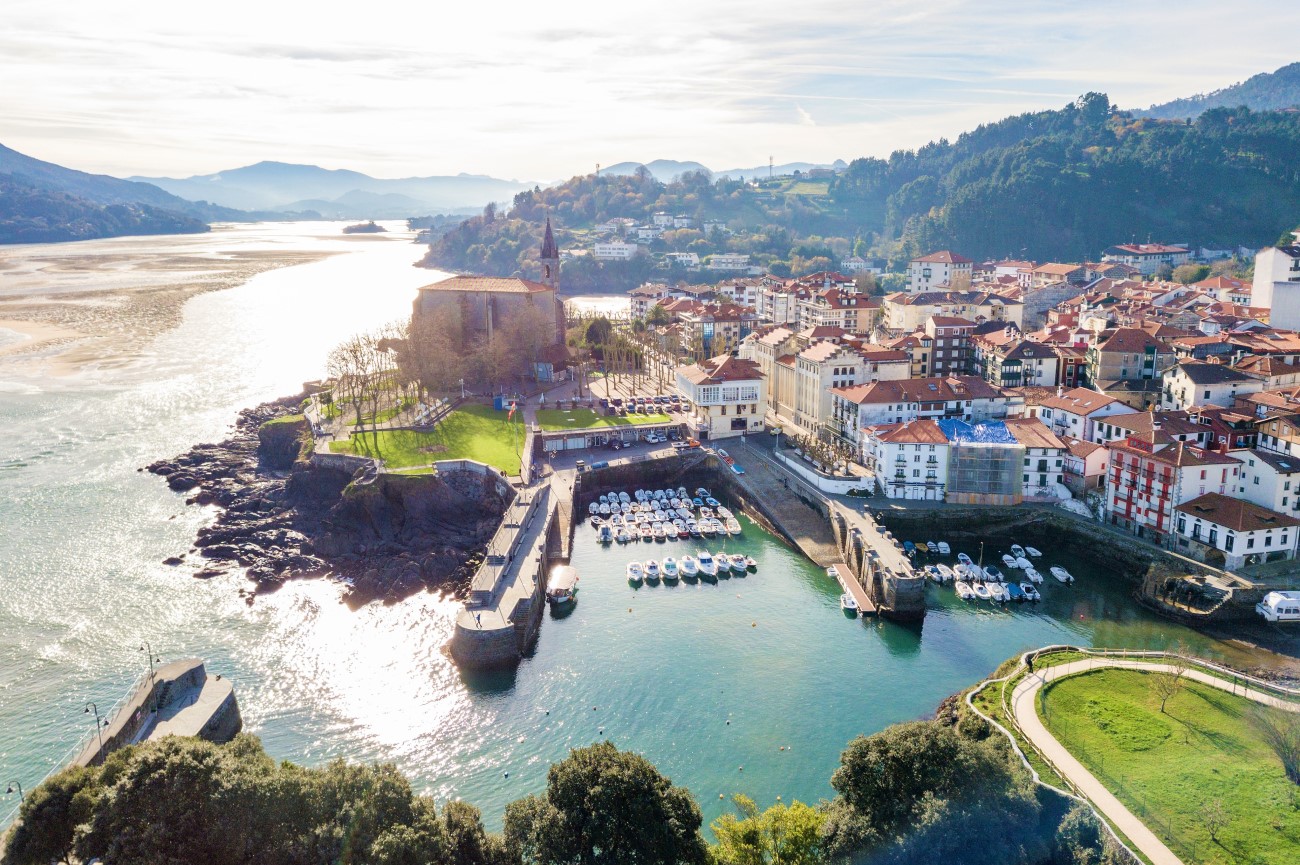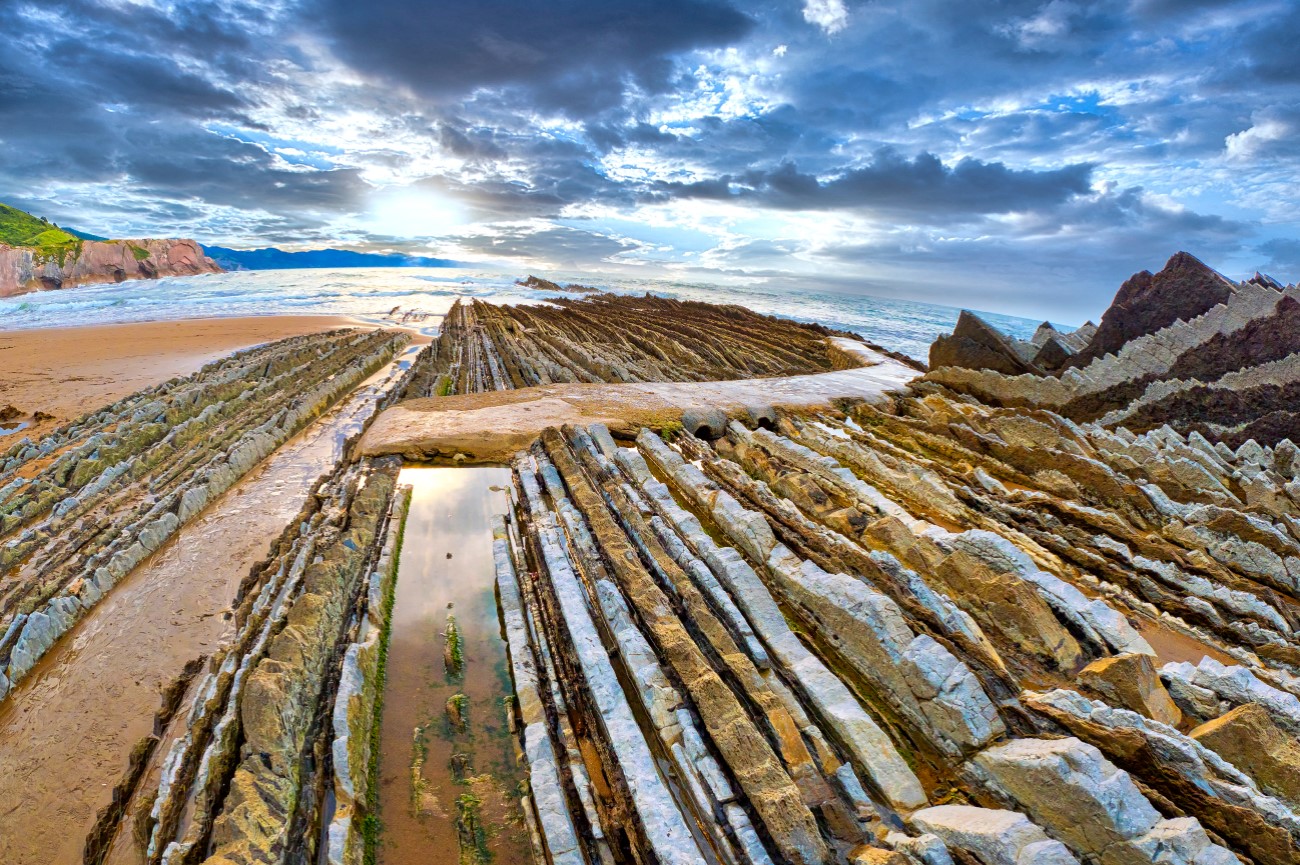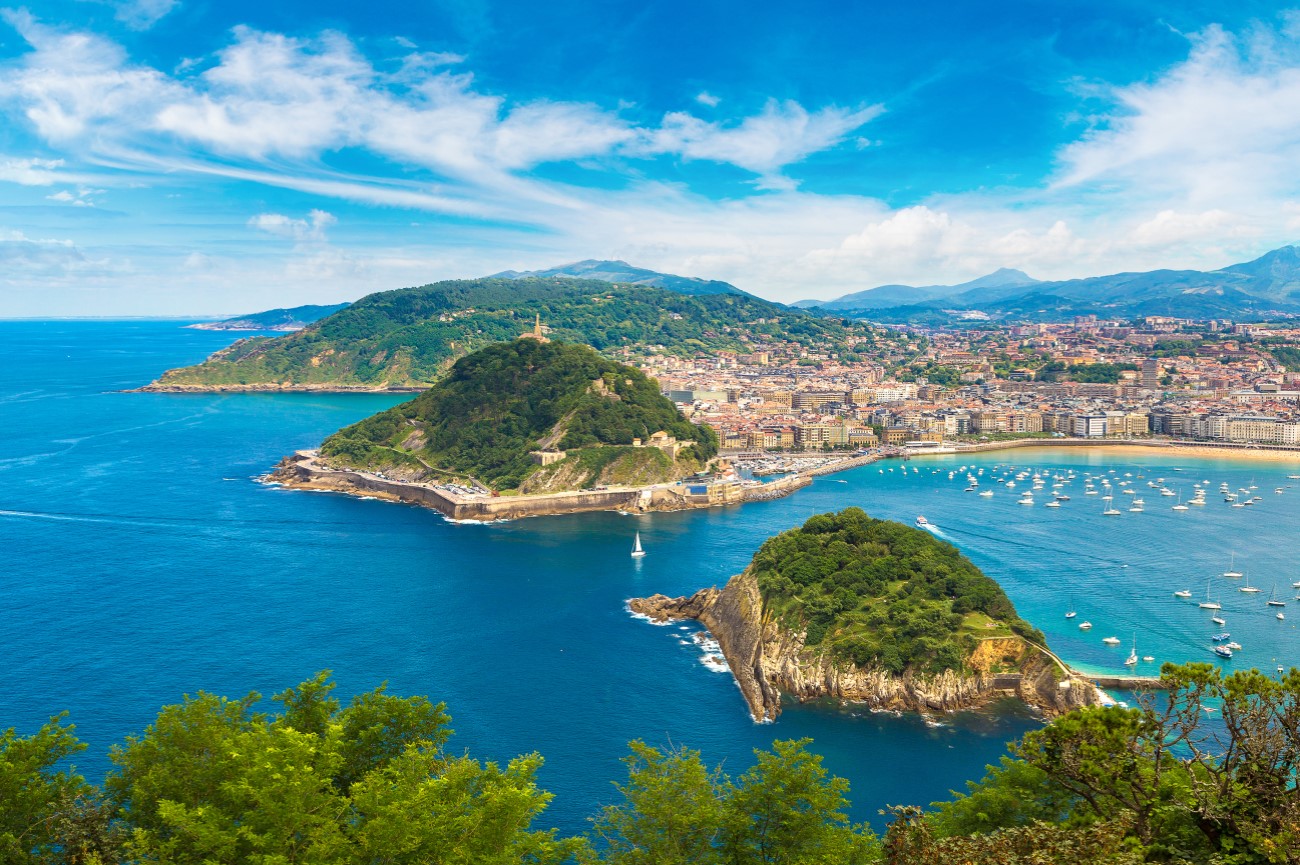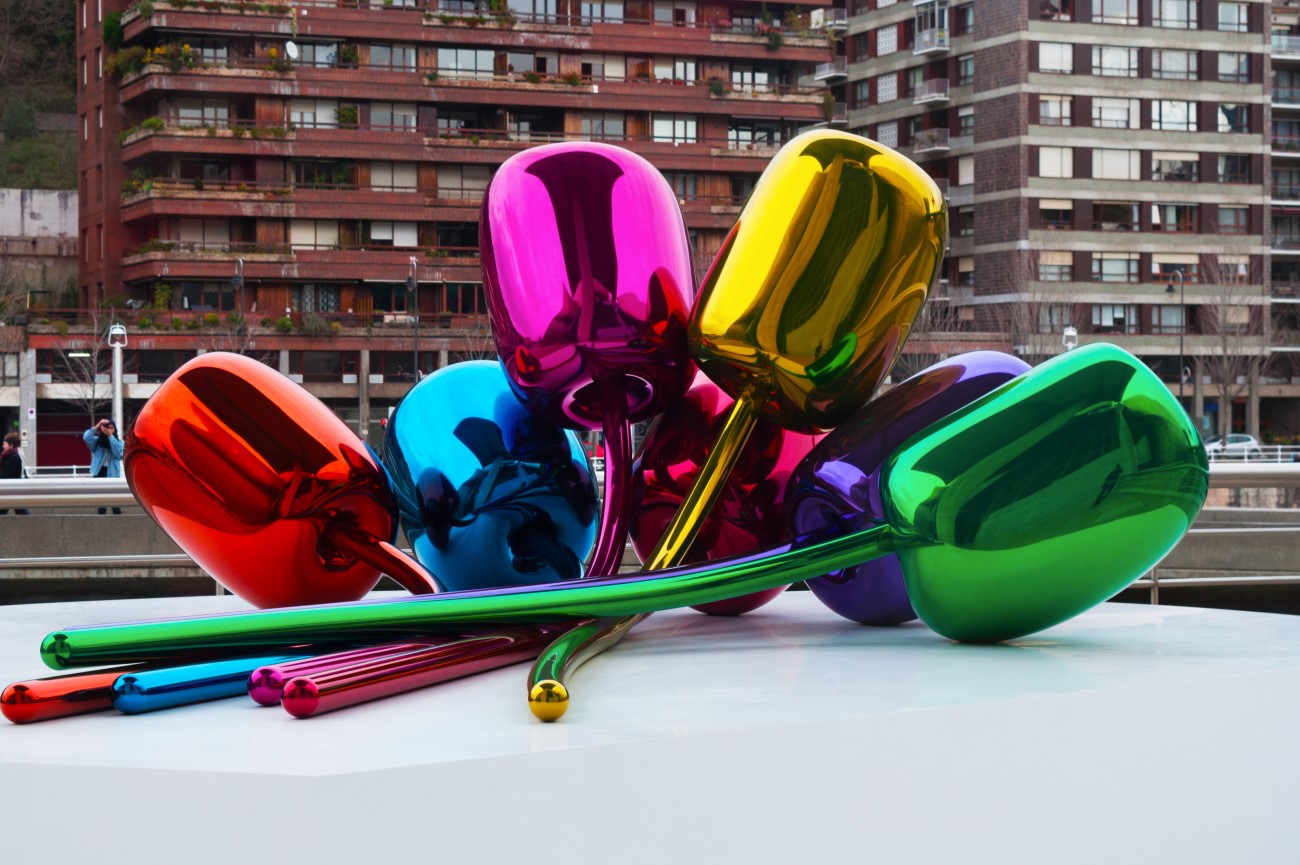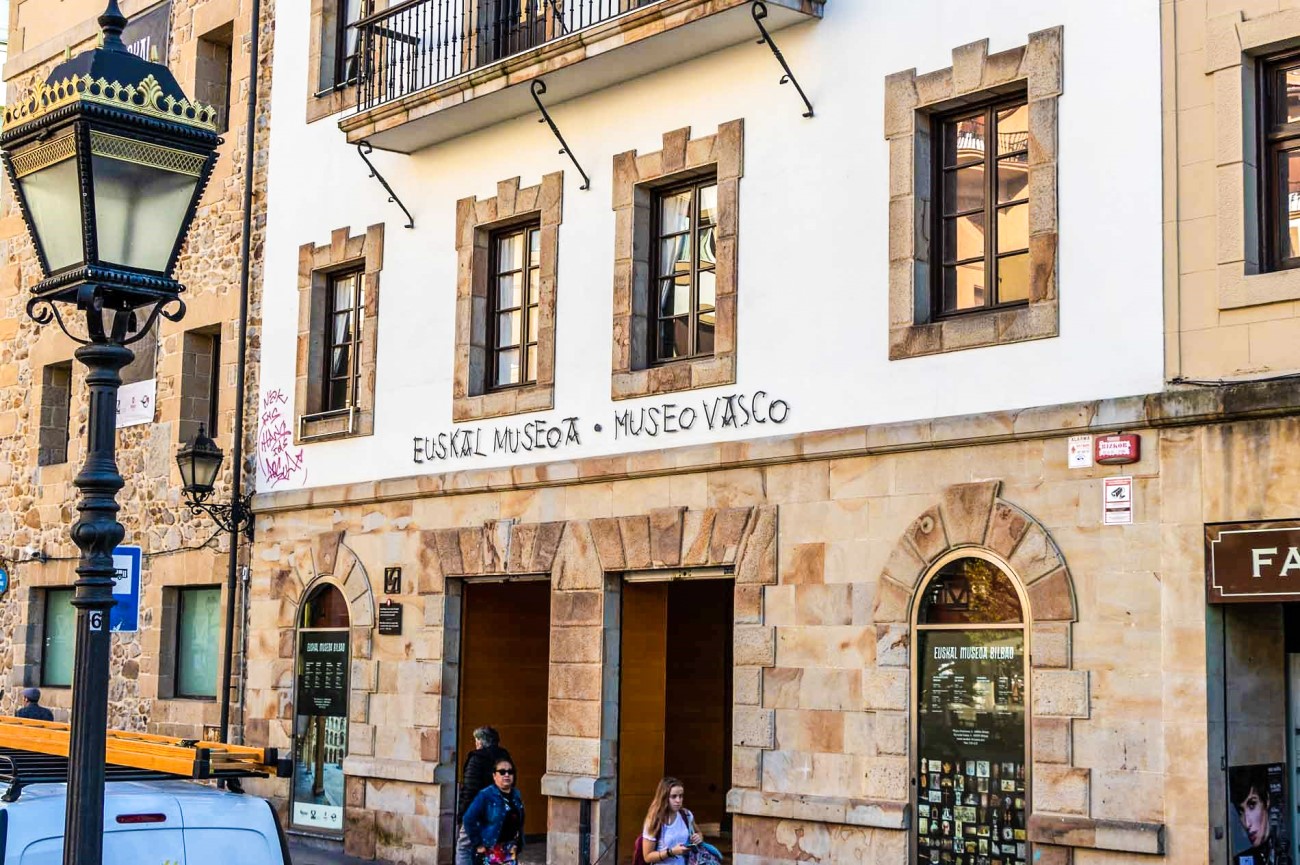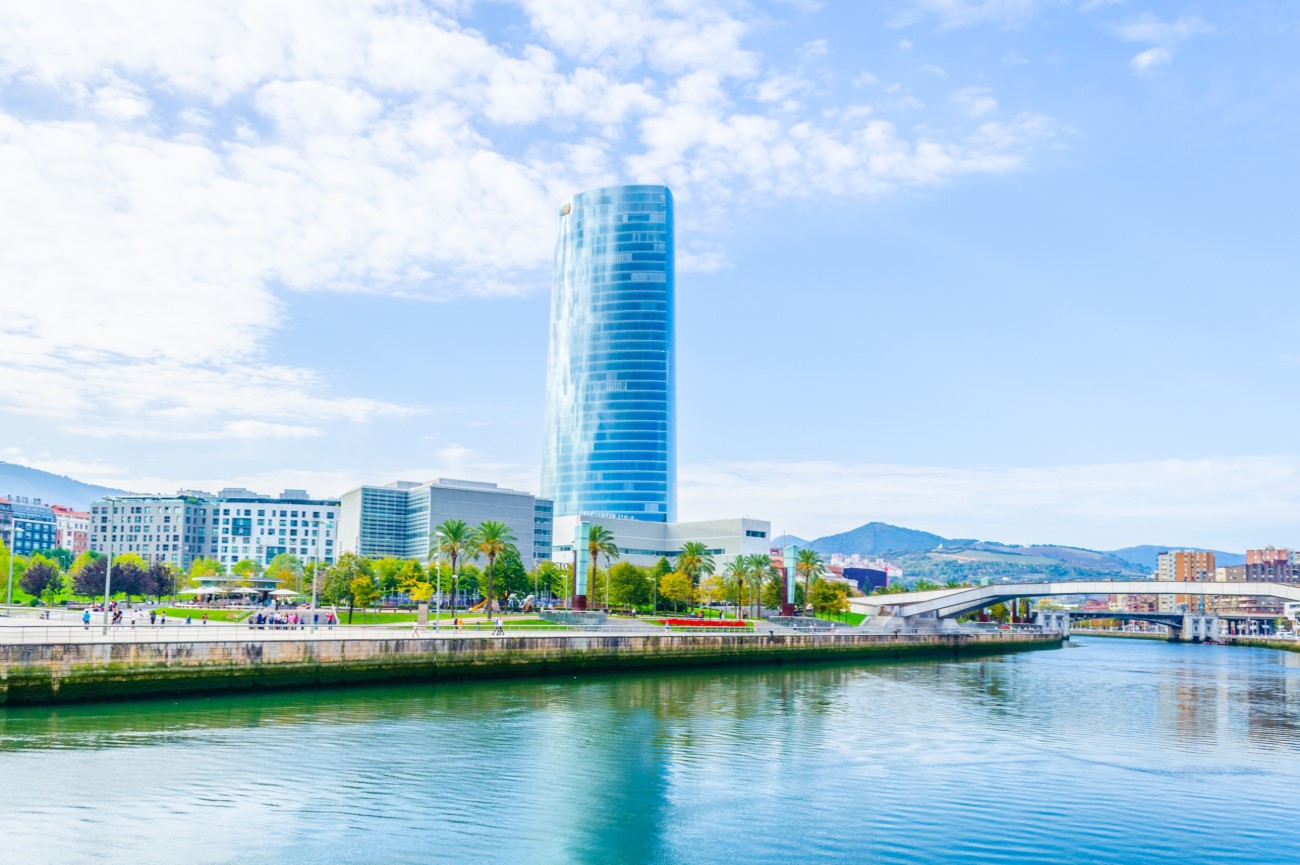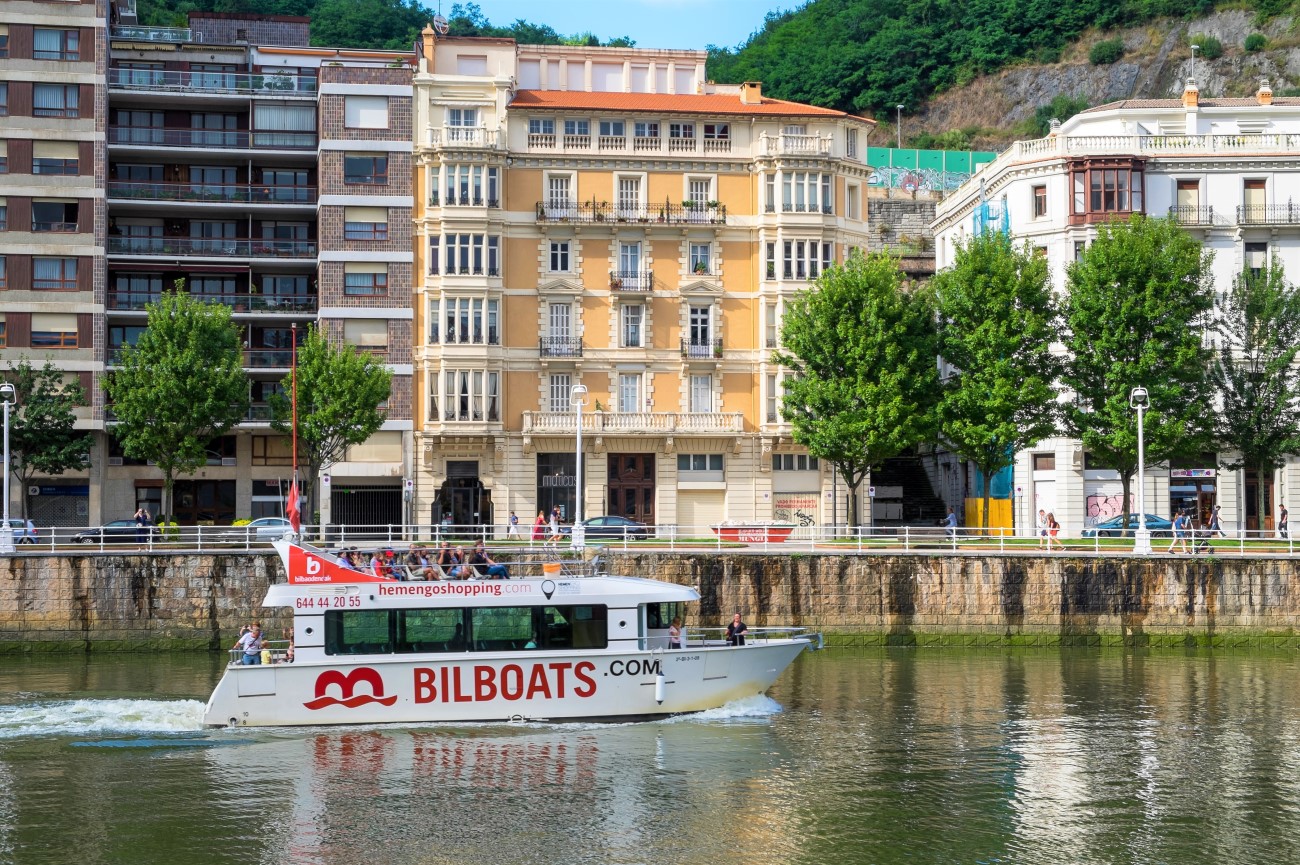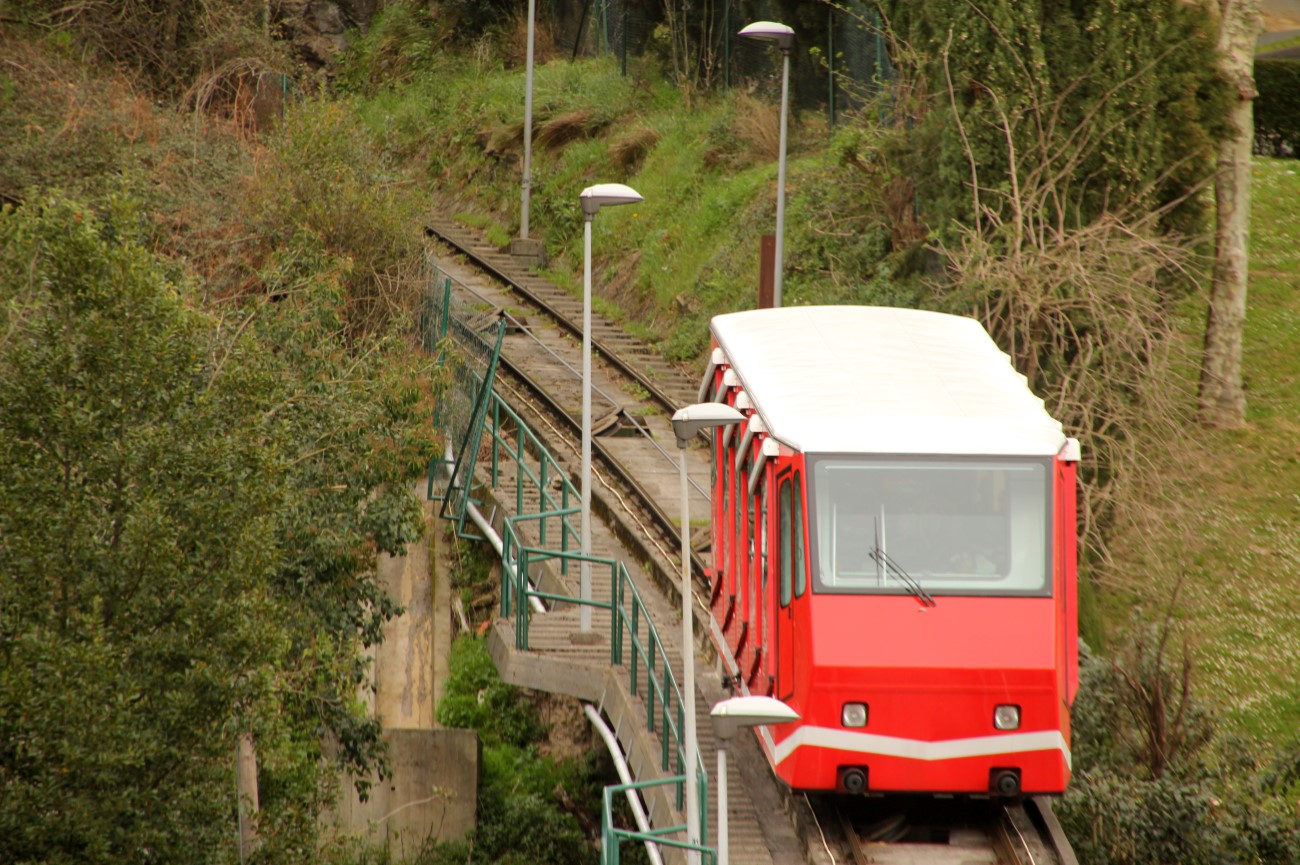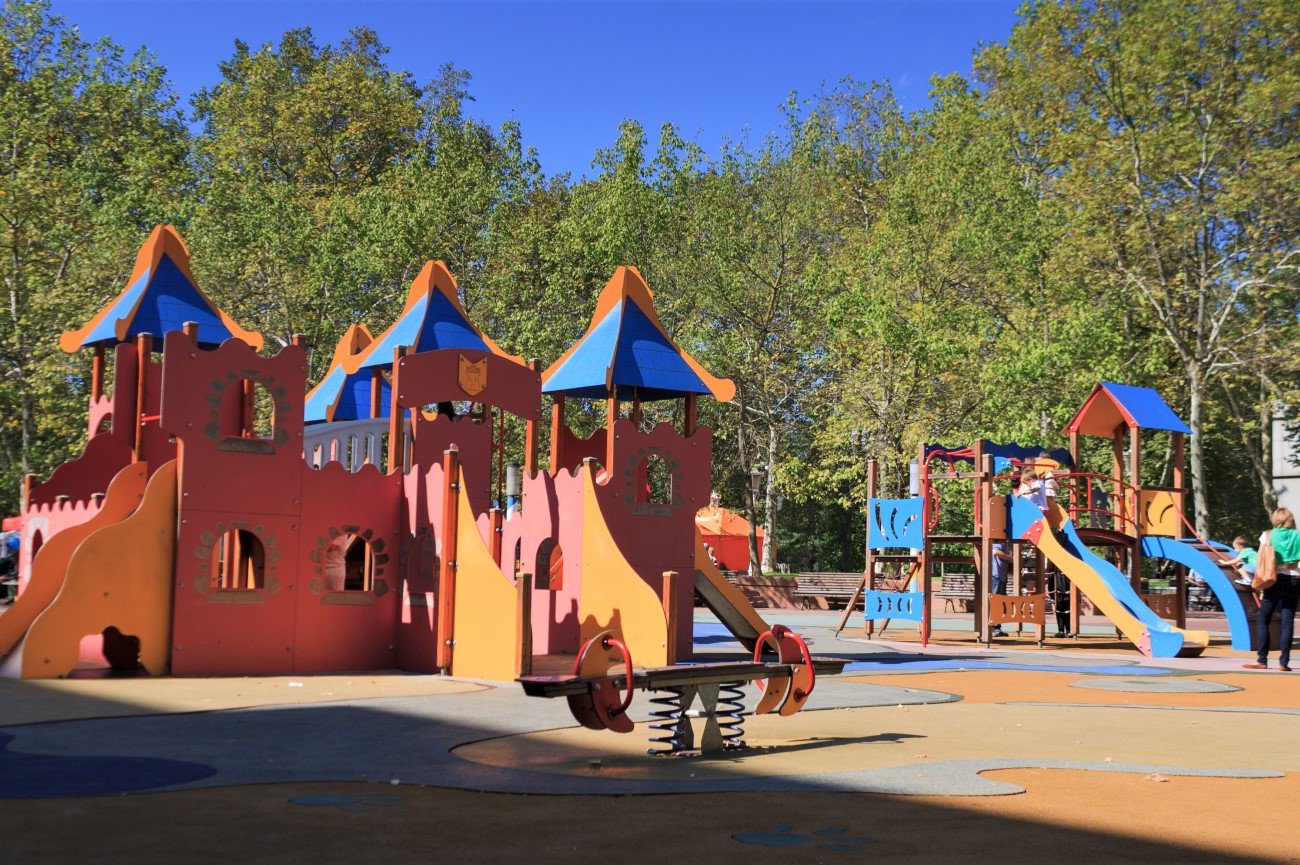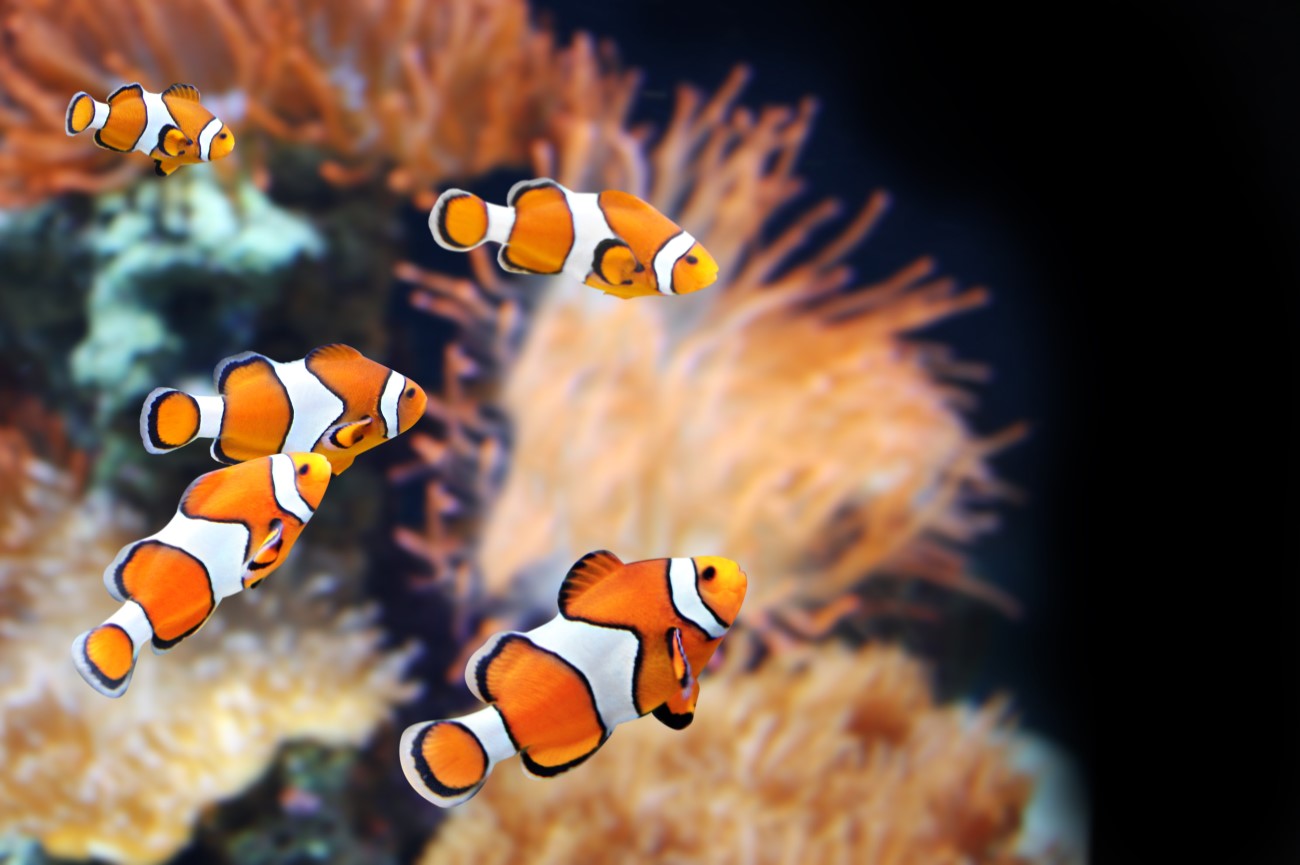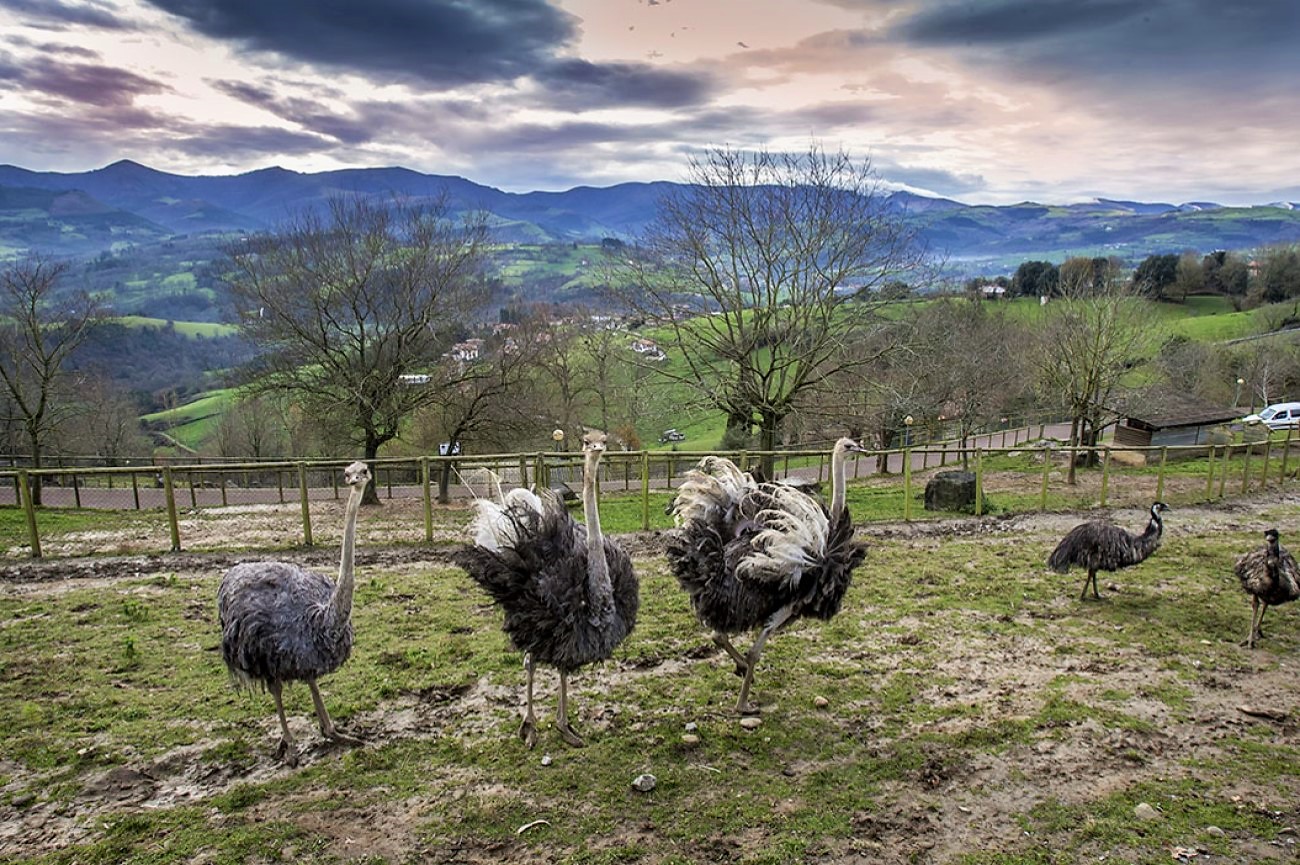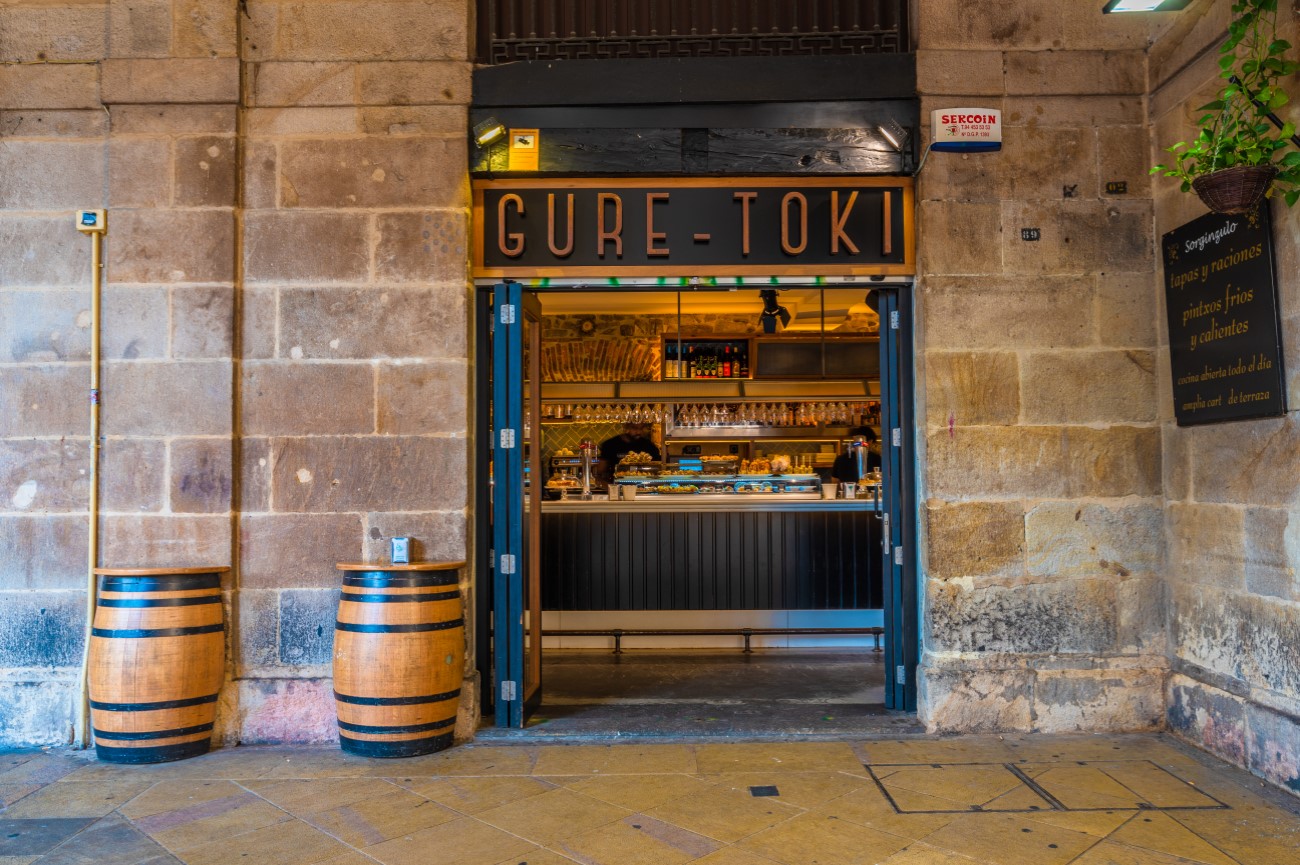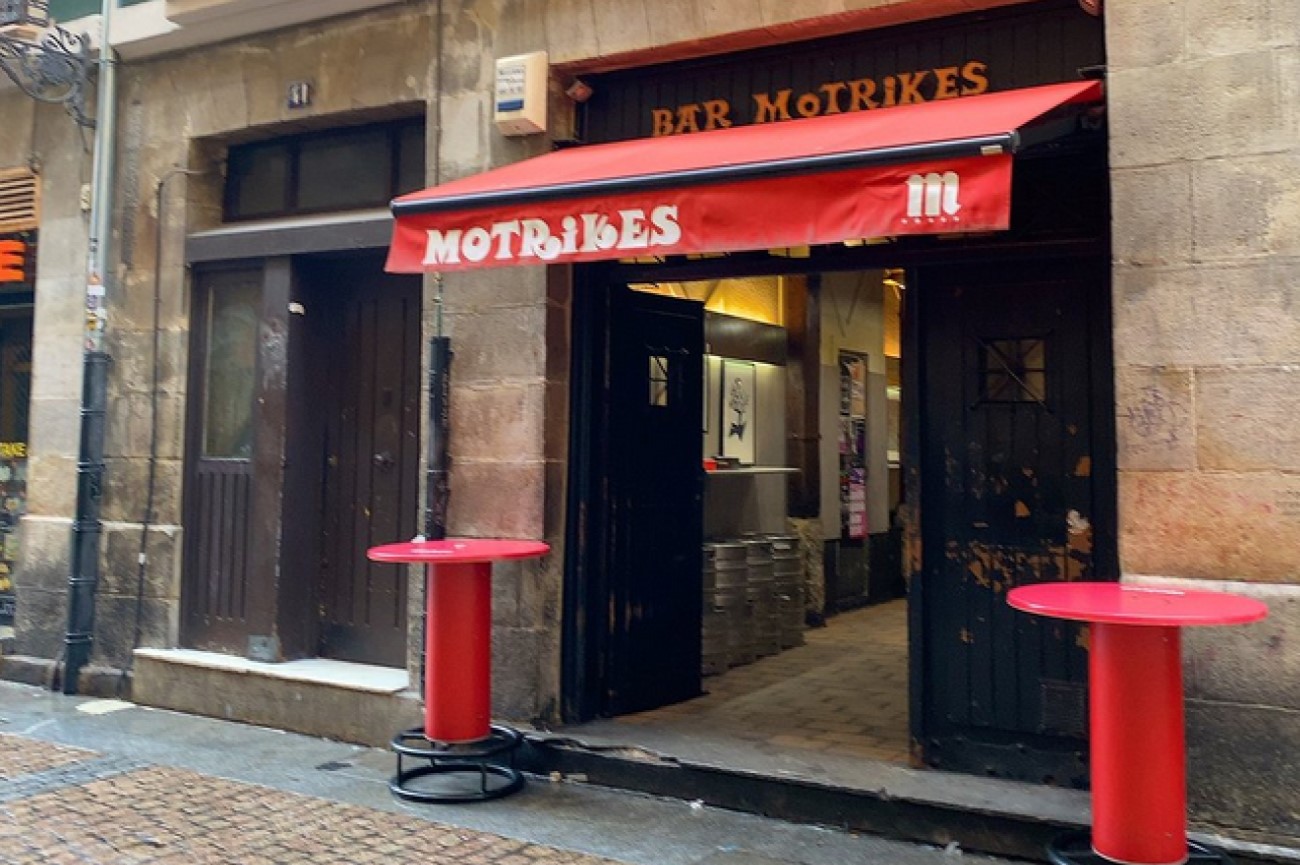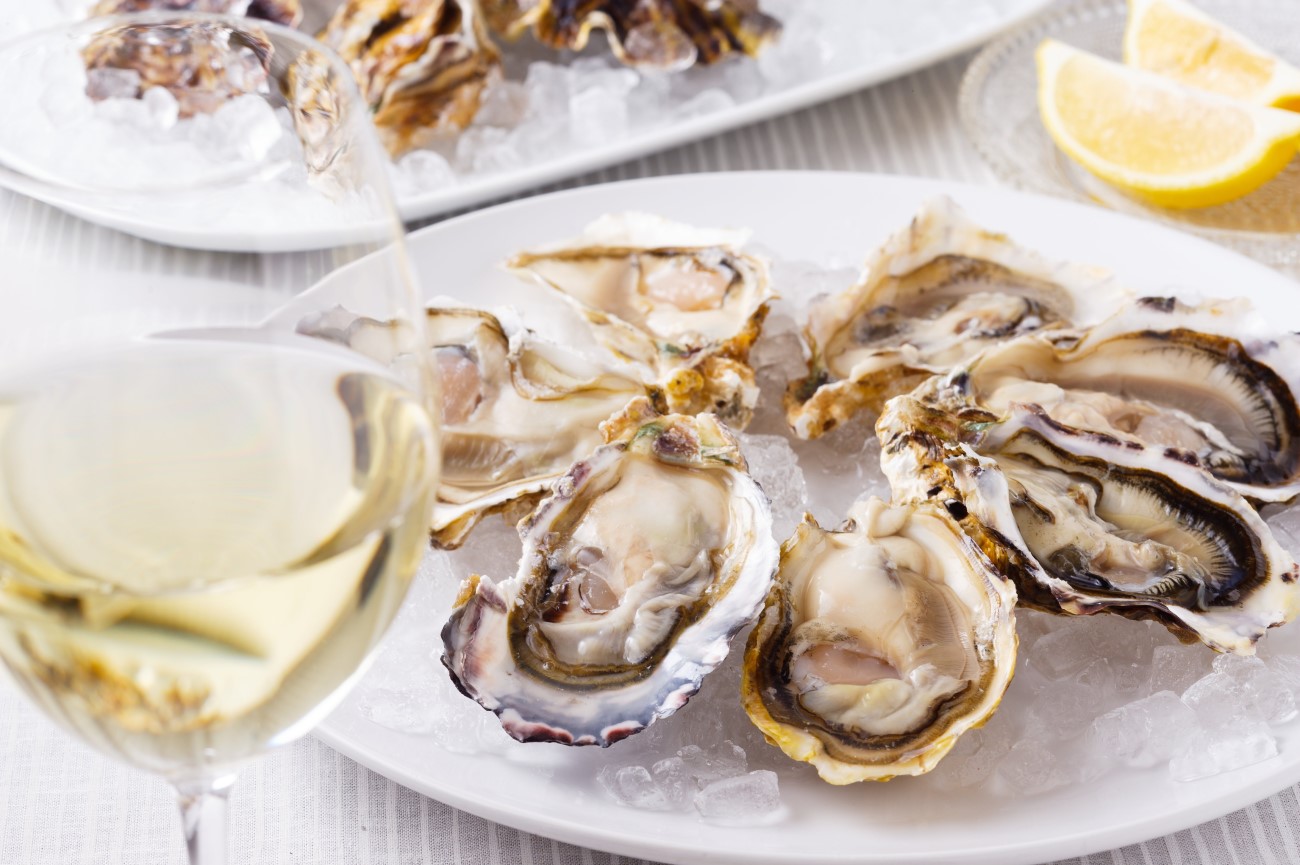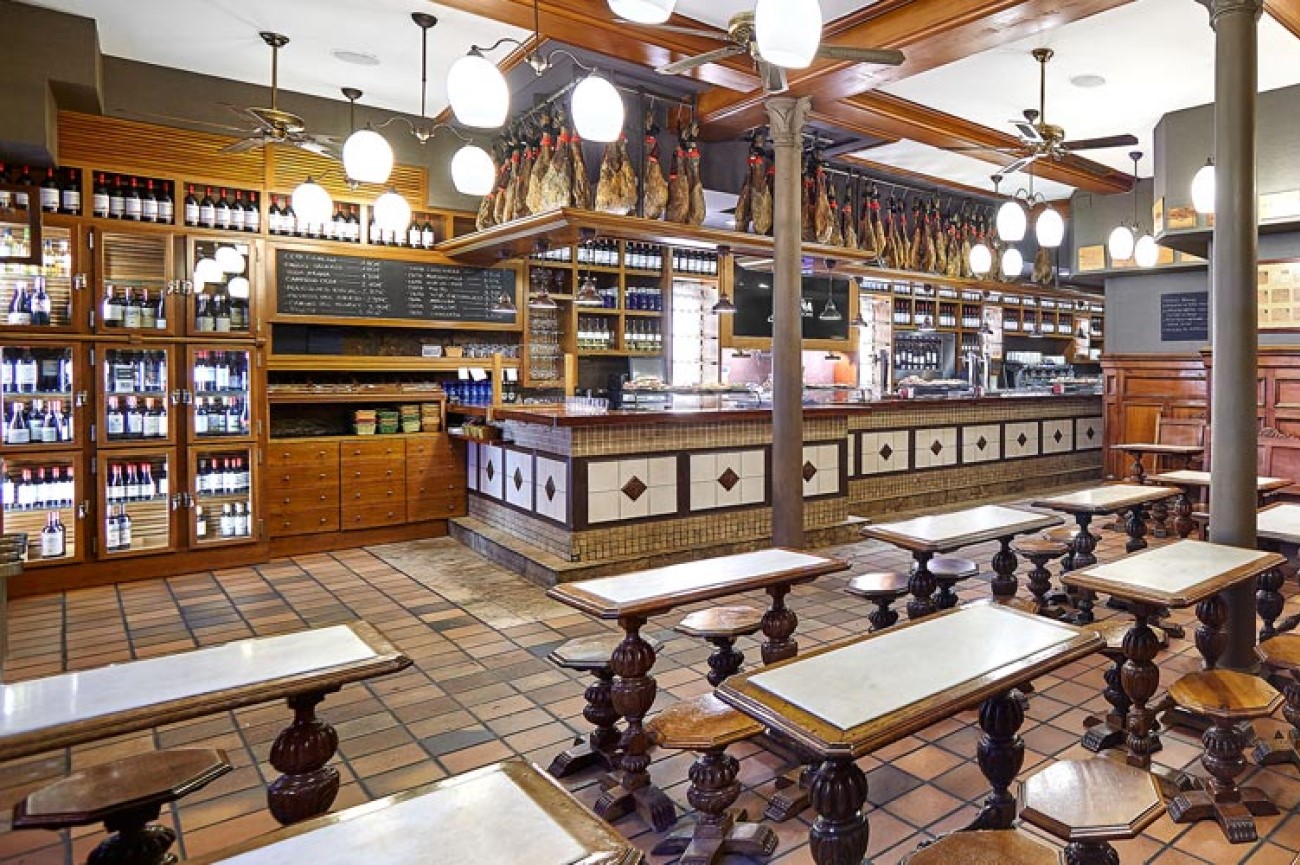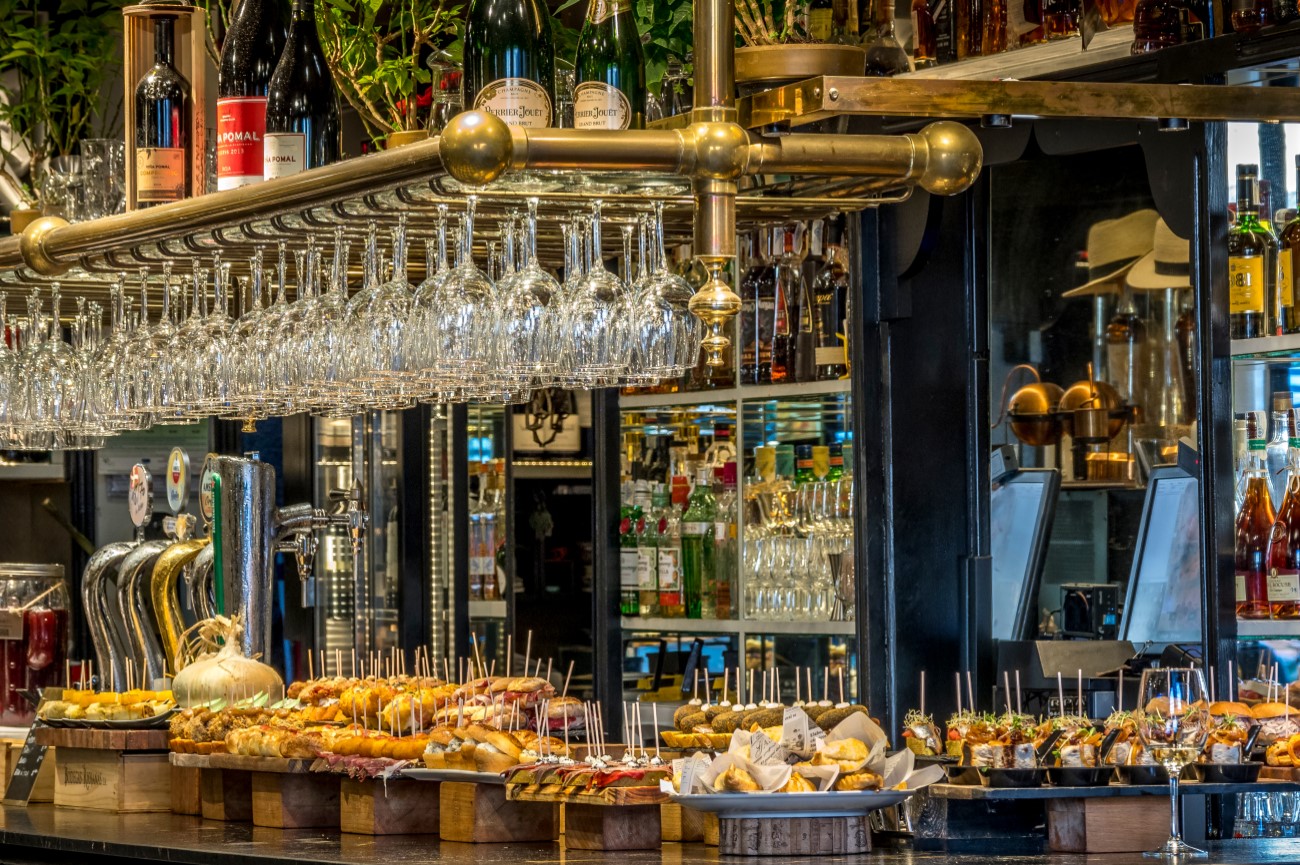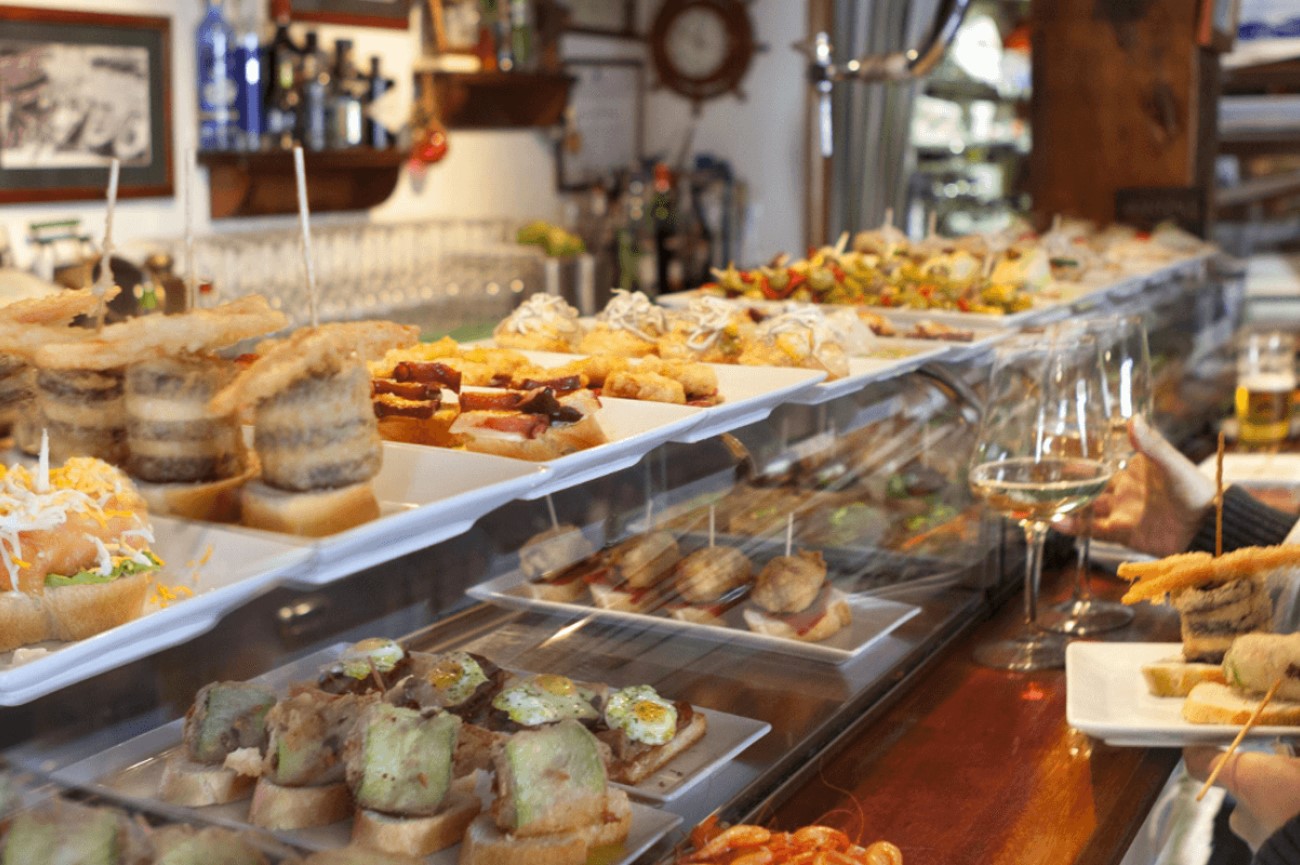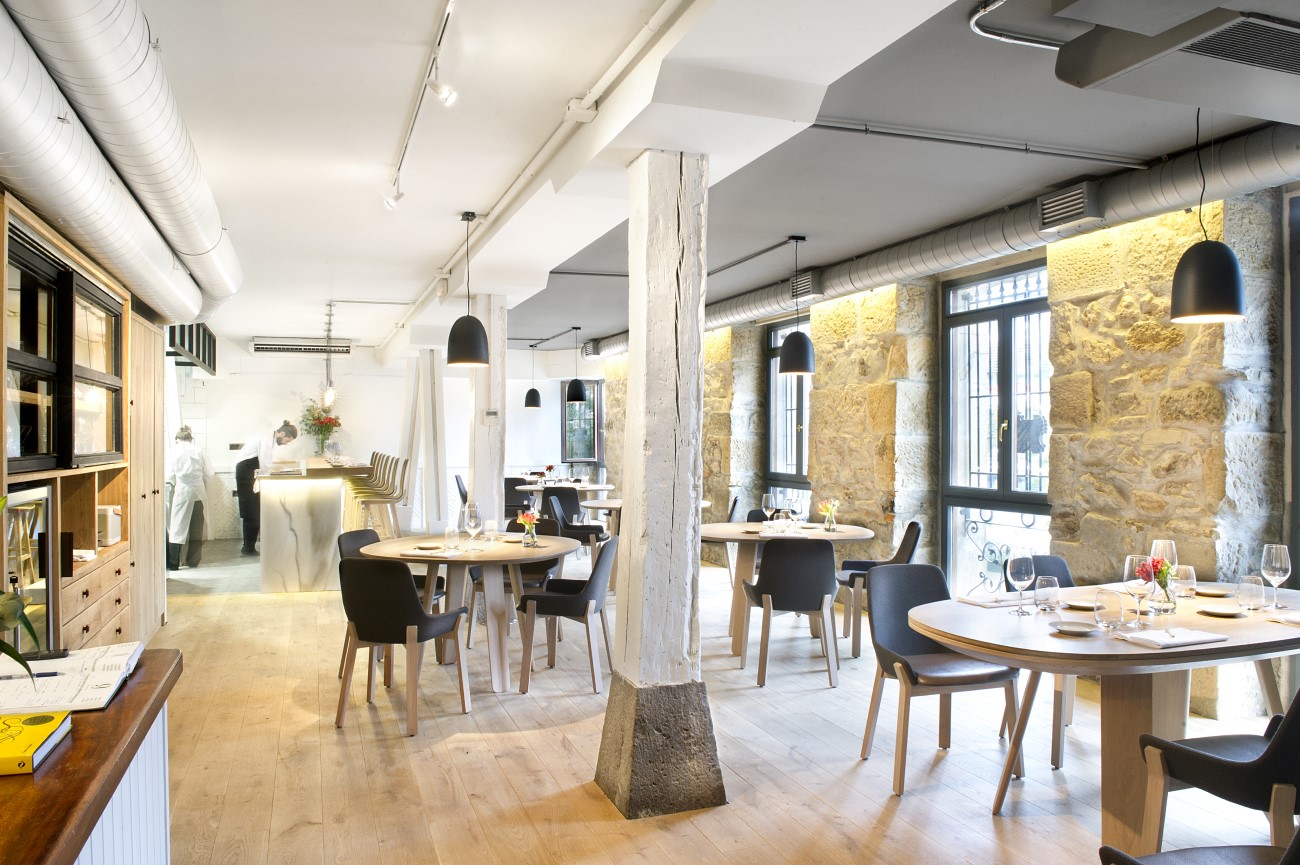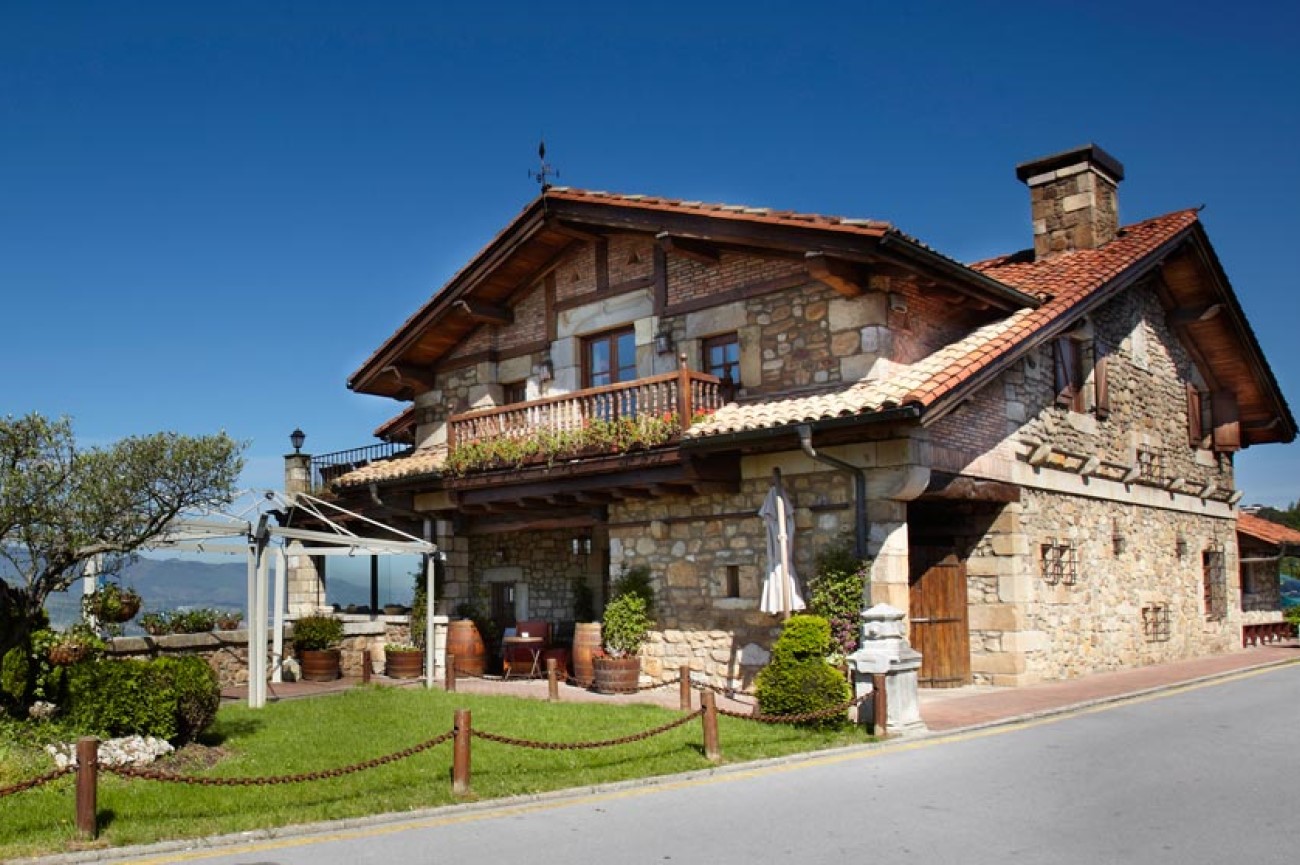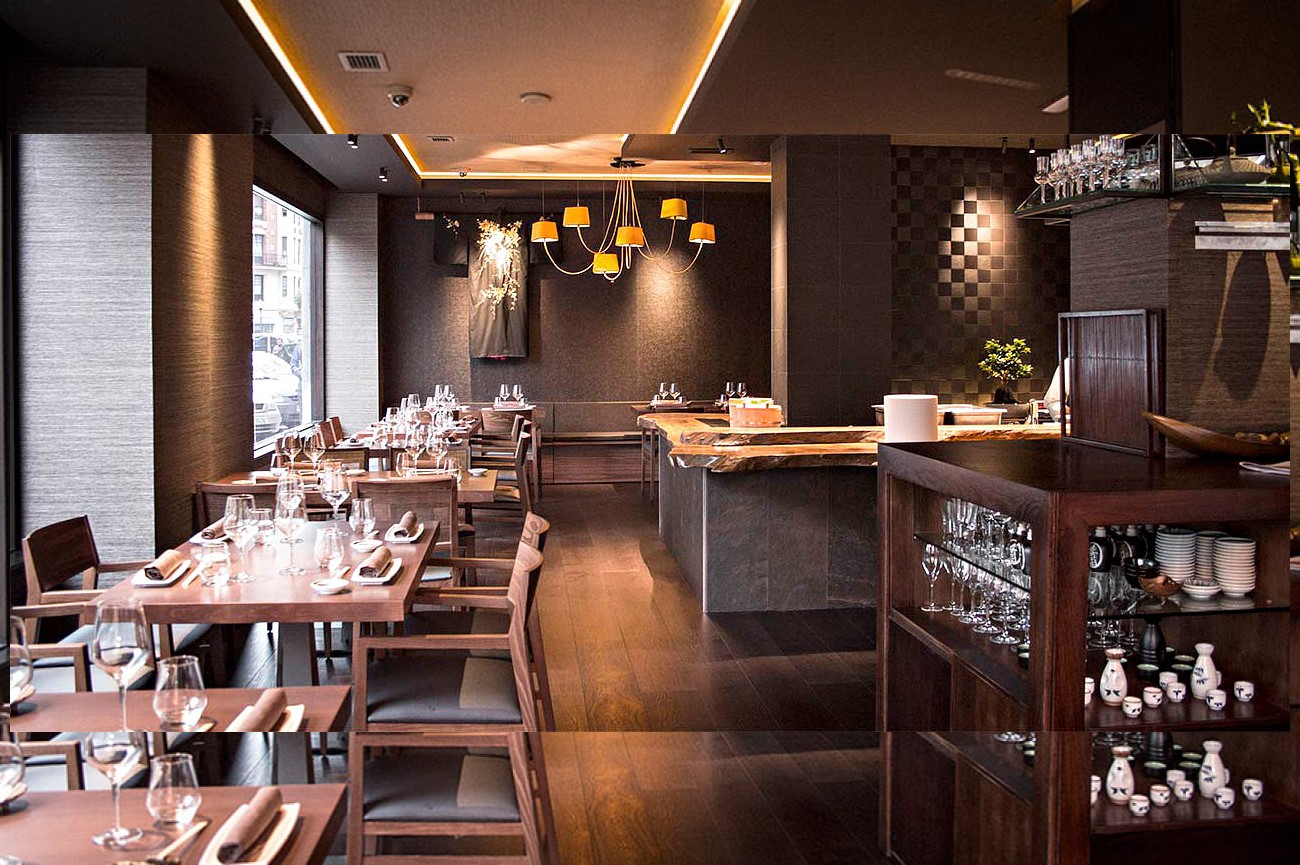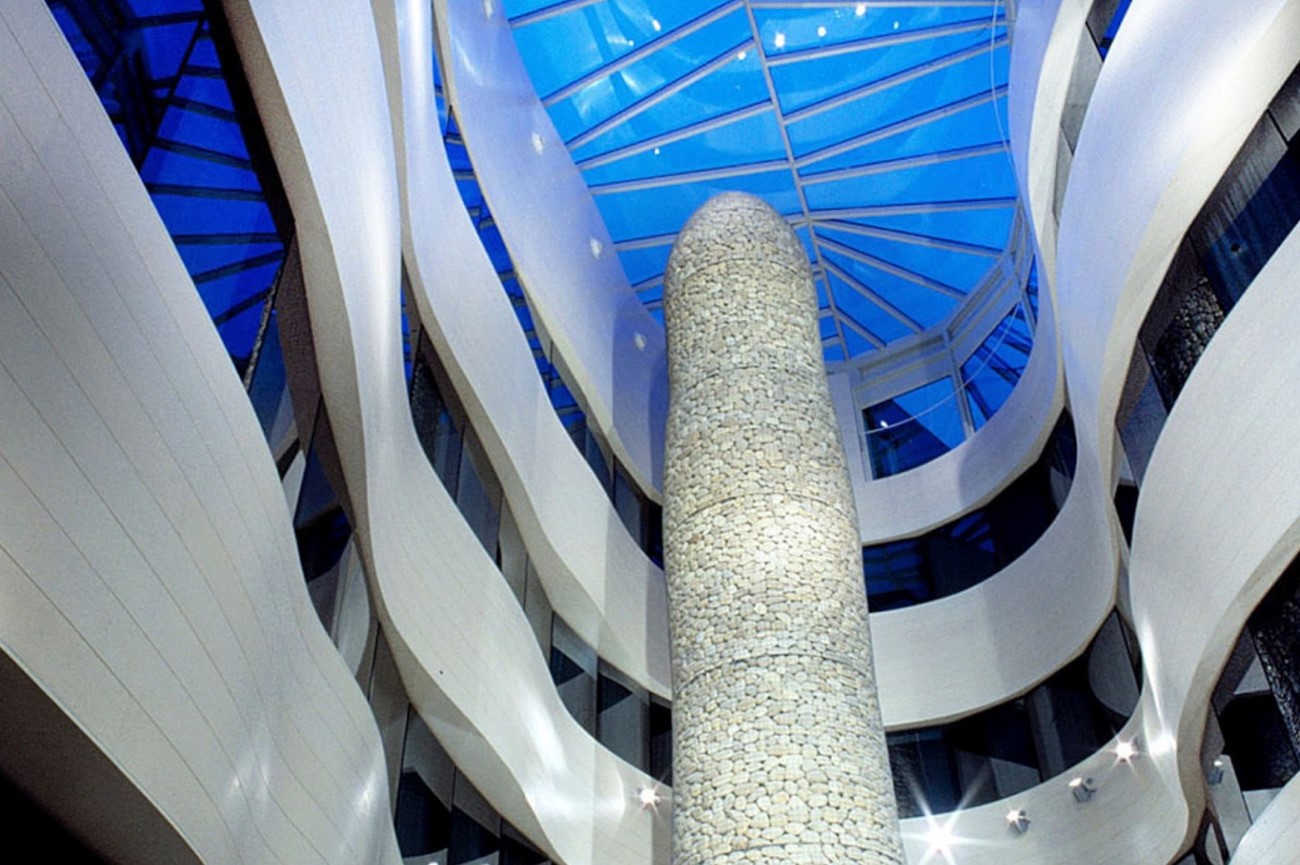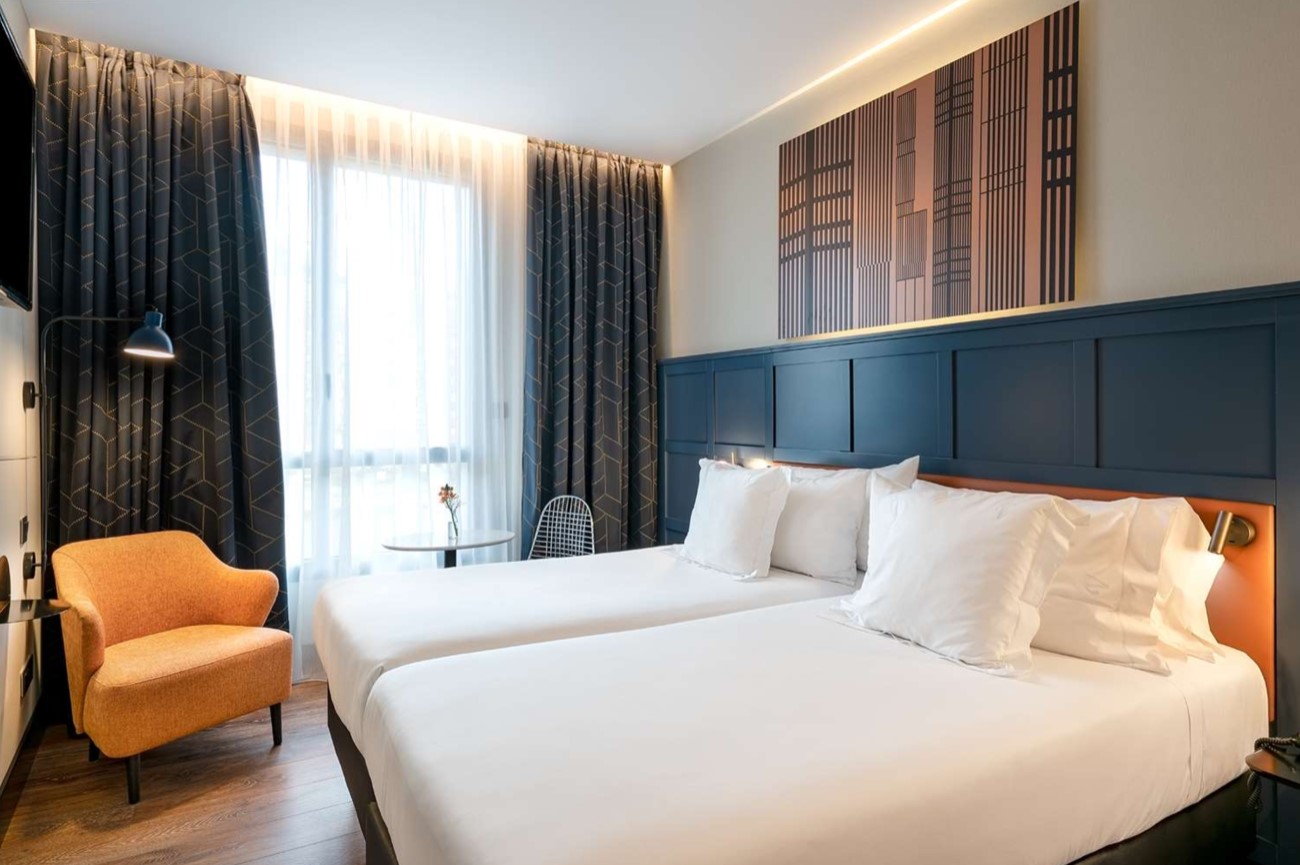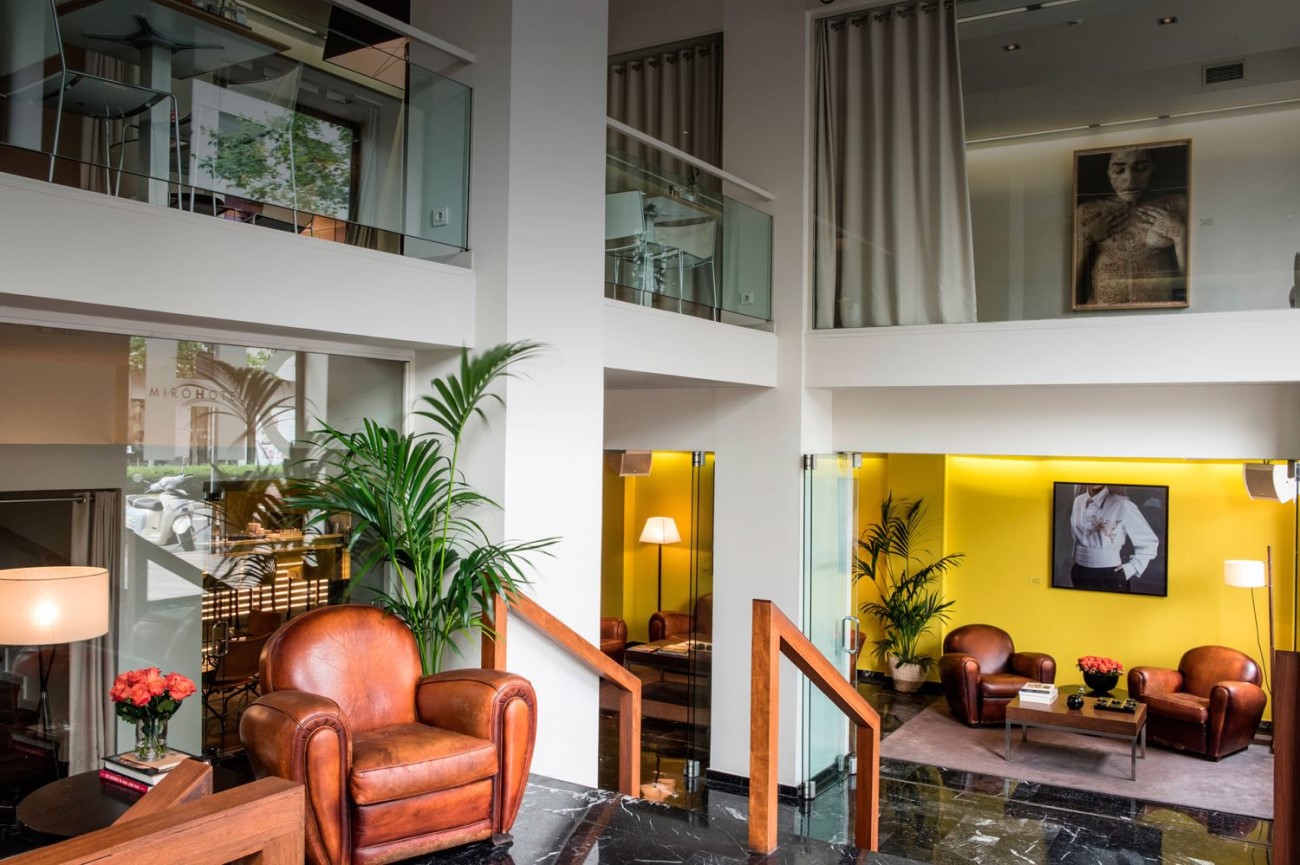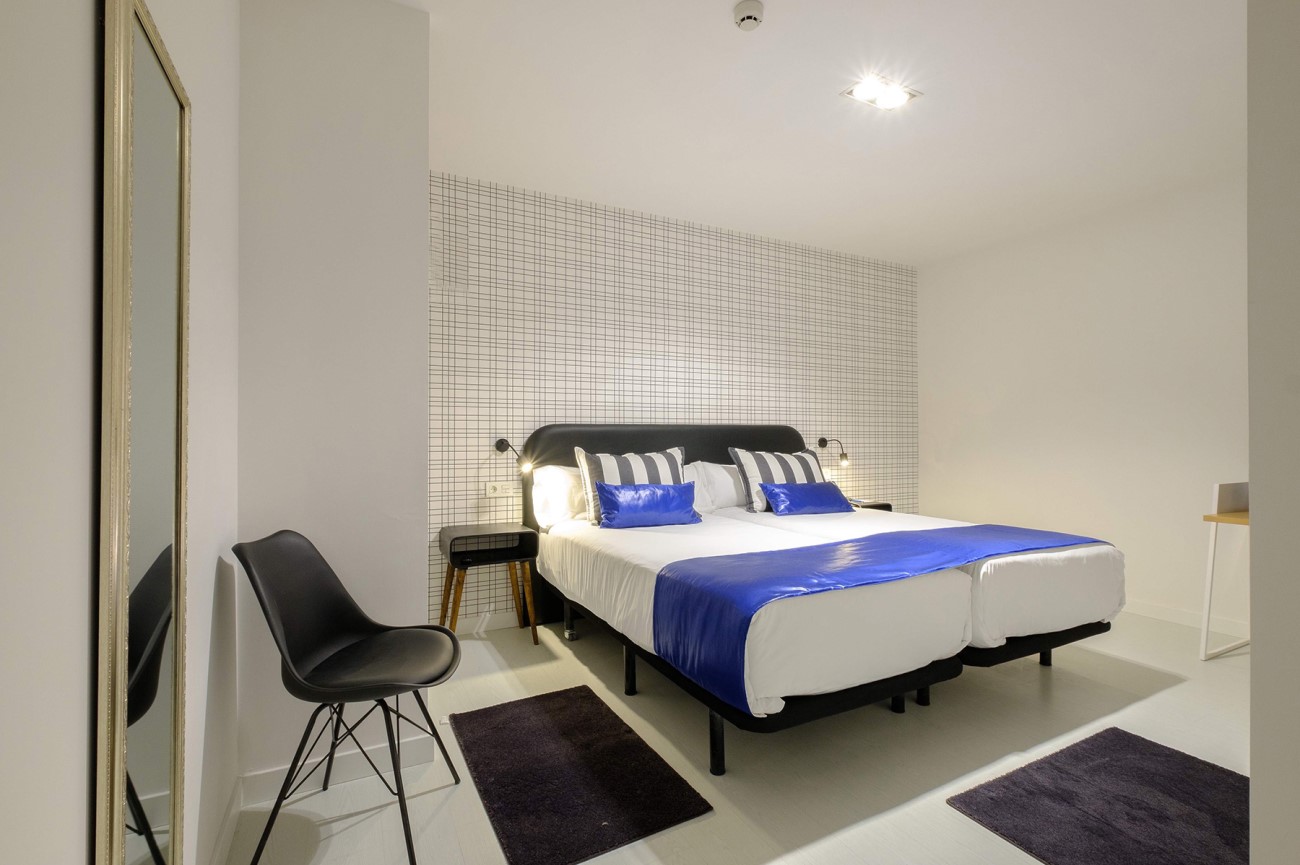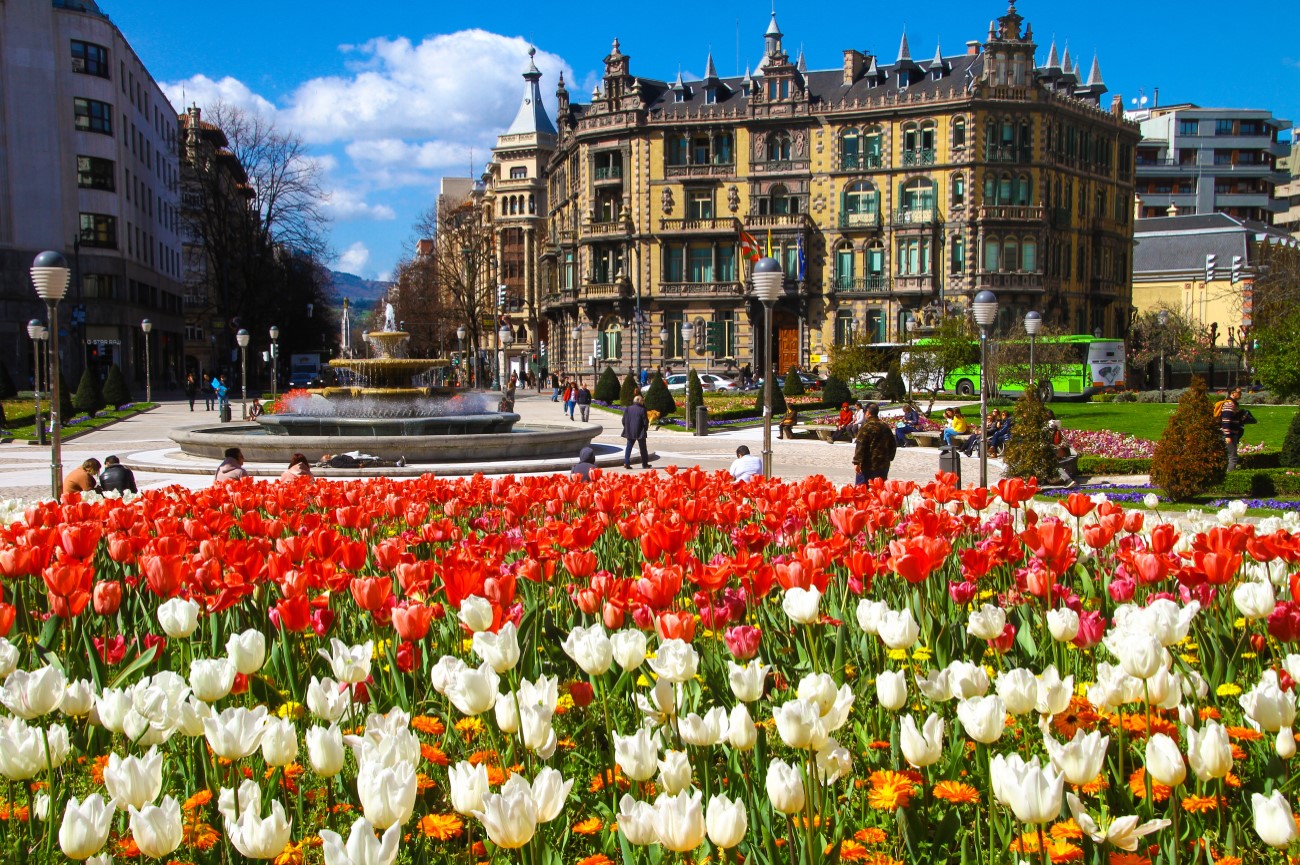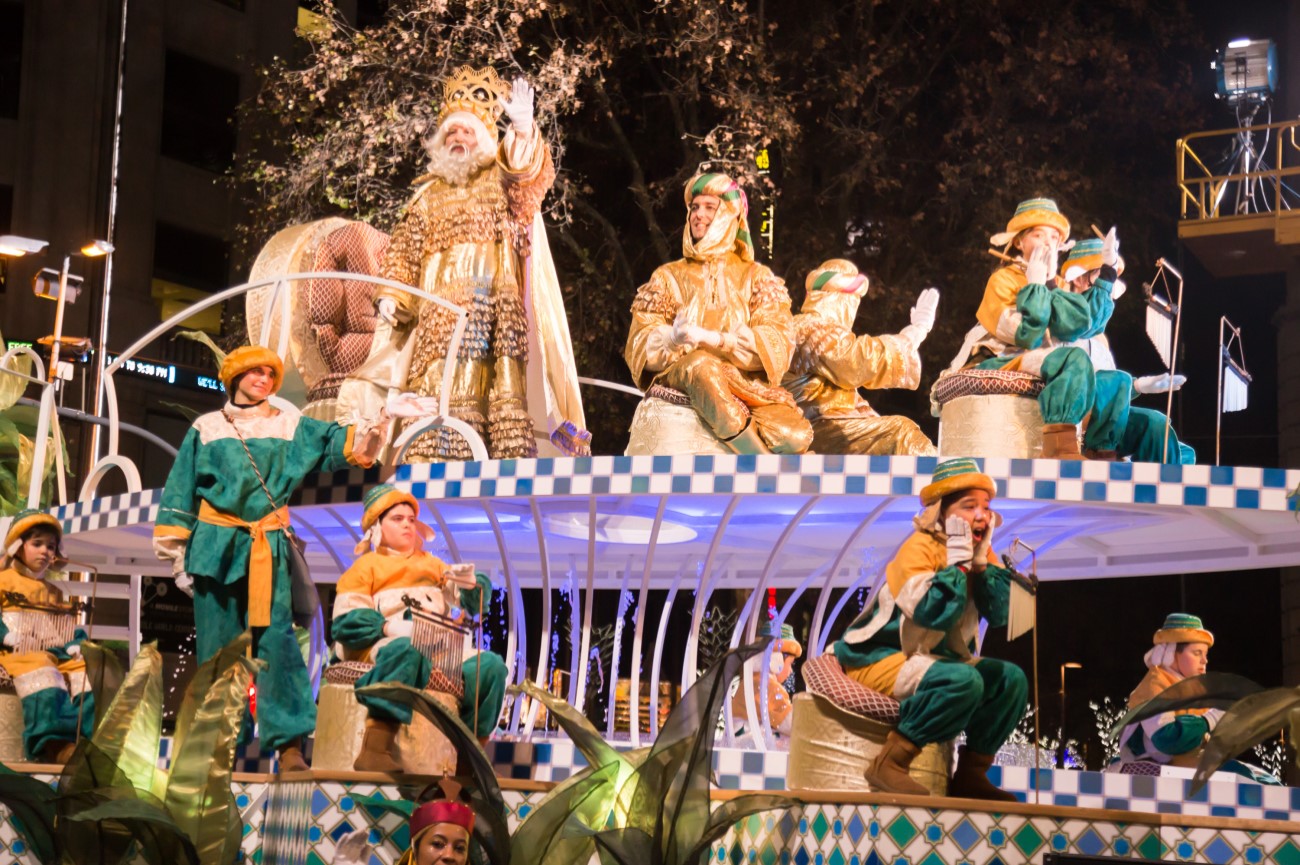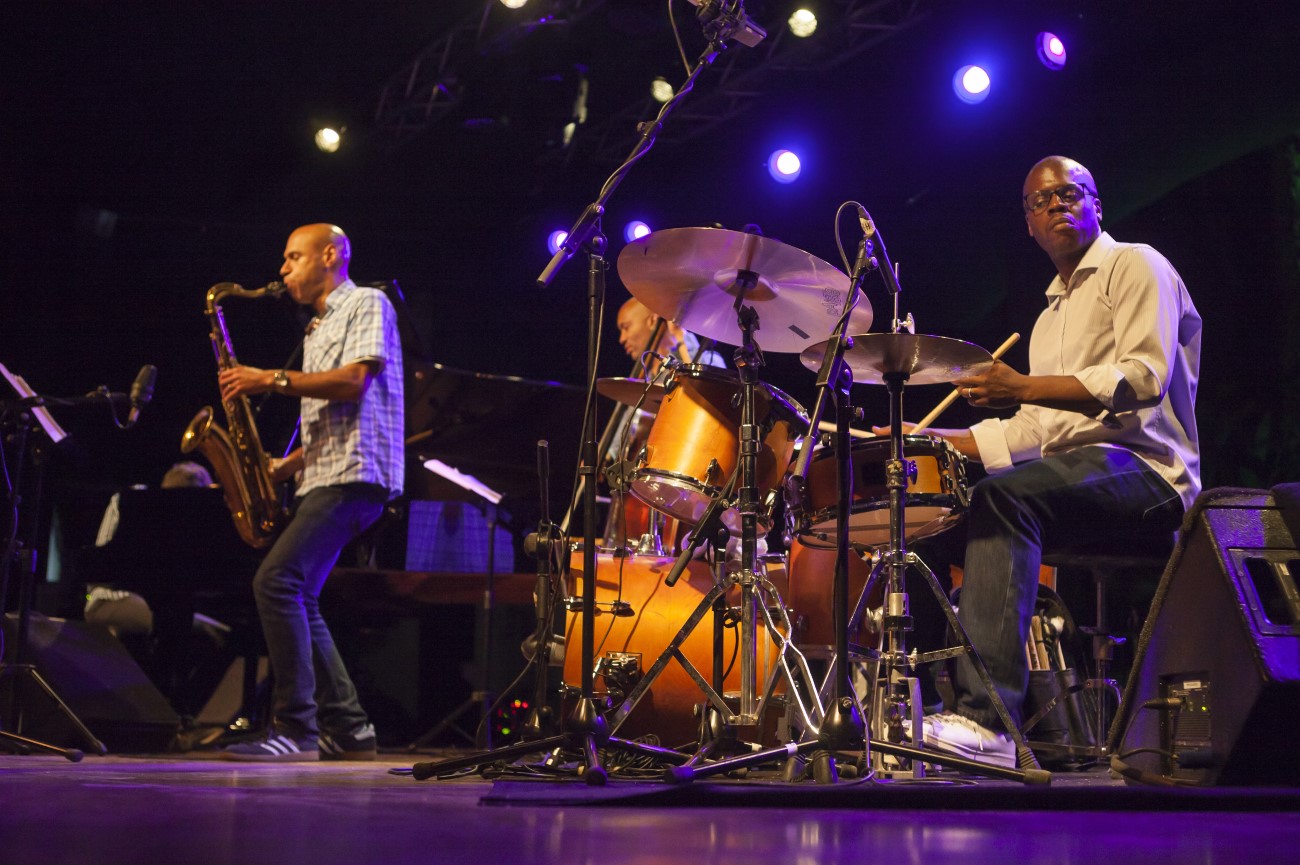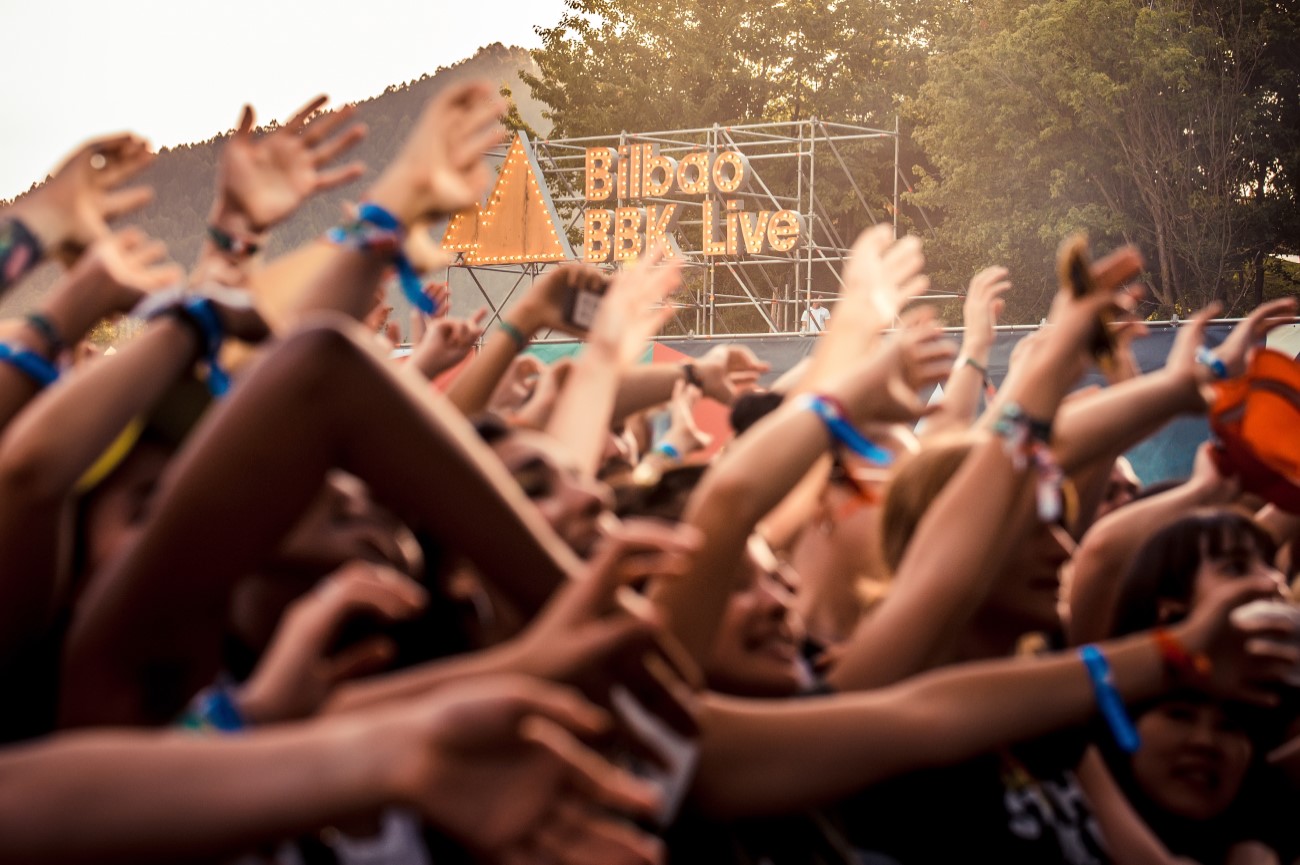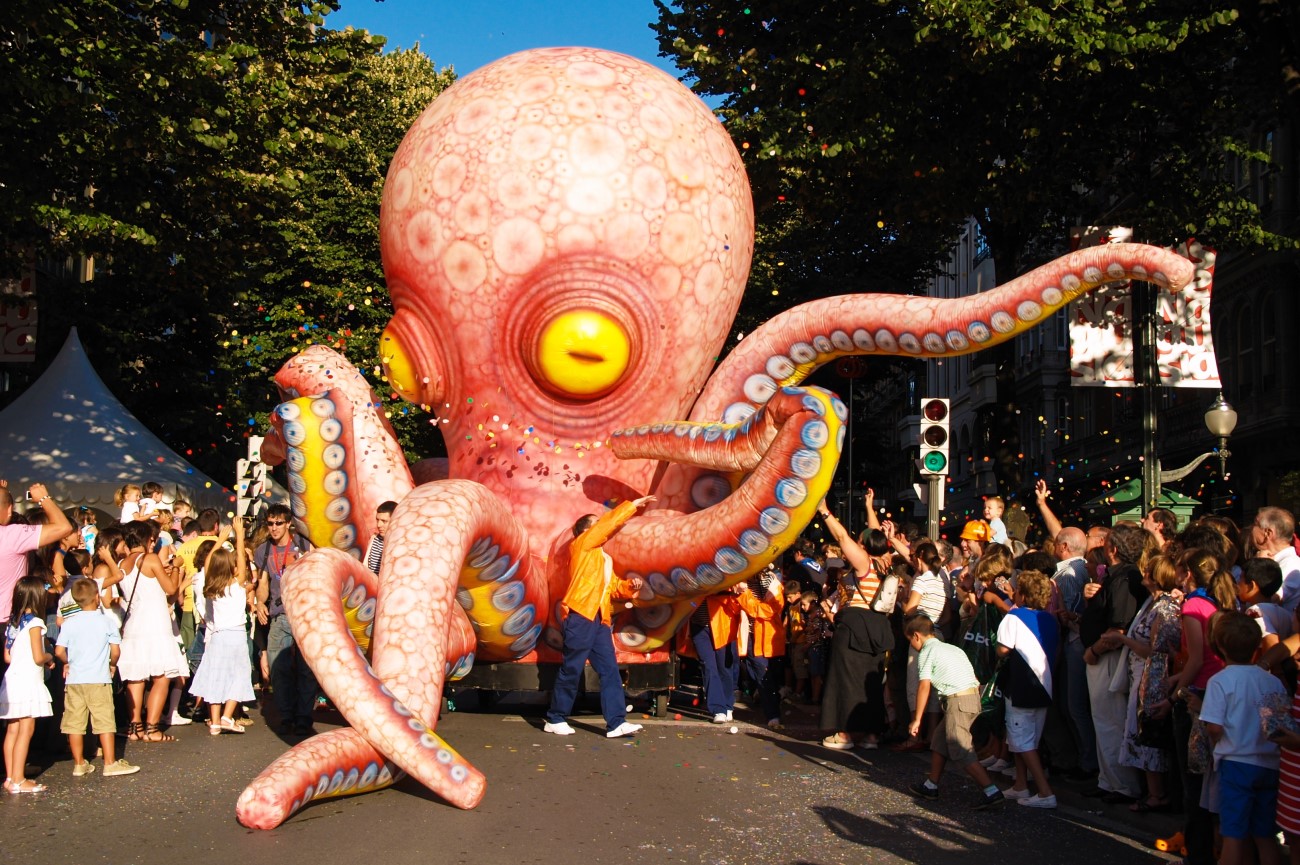Things to do in Bilbao, Spain: 3-day itinerary
Bilbao is the biggest city in the Basque Country and the perfect starting point for a tour of Northern Spain. This former industrial metropolis has transformed into an architectural paradise, dazzling visitors with its iconic buildings. From the Neo-baroque theatre and Art nouveau train station to the eye-catching Guggenheim museum and its modern displays. Creative and unusual structures are also seen throughout the Basque region in wineries like the Marqués de Riscal or the Bodegas Ysios.
Beyond its artistic vein, Bilbao is famous for its lively dining scene with traditional pintxo bars standing alongside Michelin-star restaurants, and its stunning natural landscape with mountains and beaches surrounding the city’s outskirts.
This three-day itinerary features the best things to do in Bilbao, including what to do, where to stay and the best places to eat, so you can make the most of your stay.
Day 1

Morning: Bilbao City Hall
Start your day in Bilbao with a walk around the City Hall. Established in 1892, this Baroque-style building occupies the site of a former convent. Architect Joaquín Rucoba designed this local institution which sits just steps away from the Nervión river and the Puente del Ayuntamiento.
Classic sculptures decorate the outside, while inside there are exquisite rooms like the Arab Hall with its Neo-Mudéjar decor. To visit the City Hall, make sure to schedule a tour in advance.
Funicular to the Mount Artxanda Viewpoint
From the City Hall, make your way to the Artxanda funicular stop. The red cable car has been whisking locals and visitors up the hill since 1915. At the top is Mount Artxanda, one of the many mountains that border the city. Here you can enjoy the best panoramic views of Bilbao and its surroundings.
Zubizuri Bridge
Once you’ve explored Artxanda, head back down and follow the road towards the Zubizuri Bridge. Completed in 1997, this bridge is among Bilbao’s contemporary structures and stands out against the city’s older crossings. Santiago Calatrava designed this iconic footbridge which features a glass-brick walkway and a sleek white arch, hence the name Zubizuri which translates as “White Bridge “ in Basque.
La Salve Bridge
Another famous bridge in Bilbao, La Salve leads you straight onto the Guggenheim Museum. Built in the 1970s, the bridge crosses the river and merges with the museum building on the other end, making it a popular photo spot. You can see it from a distance thanks to its bright red arch, a feature designed by French artist Daniel Buren in 2007 to celebrate the museum’s tenth anniversary.
Guggenheim Museum Bilbao
Once you cross the bridge, you’ll end up at the front of the Guggenheim Museum. Inspired by fish scales and ship shapes, Canadian Frank Gehry designed this striking shimmering building made of titanium tiles. Guggenheim revitalized Bilbao’s postindustrial image and propelled into the modern art world. Since its opening in the 90s, the museum has become one of the city’s most famous attractions, partially due to its iconic design.
Outside there are a few contemporary installations worth capturing like the flowery puppy created by Jeff Koons or the giant spider by Louise Bourgeois.
Still, it’s worth going inside, where you’ll find artworks by Mark Rothko, Yves Klein and many others. Besides the permanent collection, there are also temporary exhibitions, so make sure to keep an eye on the calendar. To avoid standing in line, you can pre-book your ticket with a time slot online.
Afternoon: Abando Train Station
Even if you’re not catching a train, it’s worth stepping inside the Bilbao-Abando railway station to marvel at its stunning stained glass windows. The panel features motives related to the city’s history and customs, with references to the Basilica of Begoña and the old steel and fishing industry.
Azkuna Zentroa
Continue your tour of the city with a visit to the Azkuna Zentroa, also known as Alhóndiga Bilbao. French designer Philippe Starck repurposed this former oil and wine warehouse and turned it into a modernist cultural centre. The building is home to an art gallery, a cinema, a swimming pool and several dining areas. Capture the unusual tubby columns on the ground floor and pay a visit to the DendAZ shop for a gift made by local designers.
Museo Bellas Artes (Fine Arts Museum)
Next stop is the Museo Bellas Artes. Open since 1914, this museum has one of the best fine art collections in the Basque Country, with pieces ranging from Gothic sculptures to pop art. The work is divided into three sections: classical art, contemporary art and Basque art. Artists on display include Paul Gaugin, Francisco de Goya, El Greco, Francis Bacon and Eduardo Chillida. Beyond the permanent collection, it’s worth checking the temporary exhibitions which change throughout the season.
Doña Casilda Iturrizar Park
A few steps away from the museum is the Doña Casilda Iturrizar Park. After a busy day of sightseeing, you’ll enjoy a relaxing break here amid the trees. Completed in 1920, it’s named after Casilda Iturrizar, a local philanthropist who donated the land. It has a Romantic and French-style structure, with tree-lined paths, sculptures and fountains. Other features were added later on like the children’s carousel and the pergola.
Euskalduna Palace
After the park, take a final wander to the Euskalduna Palace, stopping to admire the golden statue atop the Plaza del Sagrado Corazón de Jesús. Set right along the river, the palace is used as a conference and concert hall. The building has a flashy design resembling the giant shipyards that once occupied this area. Euskalduna is home to the Basque Symphony Orchestra and the Bilbao Symphony Orchestra, who perform here throughout the year. If you want to catch a performance, make sure to check the calendar ahead.
Day 1 - Bilbao Tour Map
Day 2

Morning: Basílica de Begoña
Looming over Bilbao’s old town and surrounded by mountains is the Basílica de Begoña. This 16th-century church is mostly Gothic in style, but it also has some Renaissance elements like the arched entrance. Inside you’ll encounter vaulted ceilings and a golden altarpiece featuring the statue of the Virgin Begoña, the patron saint of the Biscay region. You can get here on foot or take the lift from the Casco Viejo metro station.
Plaza Miguel Unamuno
After visiting the basilica, spend the rest of your morning exploring
the old town, also known as Casco Viejo or Siete Calles. First stop is
the Plaza Unamuno, a colourful square named after the philosopher and
writer Miguel de Unamuno.
The square is home to the city’s Archaeological Museum, where you can learn more about the region’s history and its residents throughout the centuries.
Bilbao Old Town: Catedral de Bilbao and Other Churches
There are many more streets and squares to explore within the Casco Viejo. Some of the most important sights located here include the Catedral de Bilbao, the Plaza Nueva and the churches of San Antón and San Nicolás. Established around the 14th century, Bilbao’s cathedral has an eclectic style combining gothic, renaissance and neoclassical elements. Just above the main entrance, you’ll see scallop shells, an iconic reference for those following the Camino de Santiago. After covering the main attractions, take some time to wander through the old town’s winding streets and visit local shops and cafés.
Bilbao La Vieja
Cross over the San Antón Bridge, and you’ll end up at the La Vieja district. Also known as Bilbi, it’s one of the city’s trendiest districts, home to independent boutique shops, art galleries and stylish restaurants. It’s also a great spot for street art, featuring several murals painted by Basque artists. You can find a couple of them around Cortés Kalea, but here’s a map of the murals, so you don’t miss a thing. Another highlight in this area is the horno de calcinación, a large brick furnace that was once part of a local mine.
Museum of Artistic Reproductions
When you’re done exploring the La Vieja neighbourhood, head over to the nearby Museo de Reproducciones. Open since 1927, this museum is home to a series of classical reproductions. Most of these are first copies of the originals, allowing you to admire exact replicas of artworks such as the Slaves and the Moses of Michelangelo, the Parthenon Frieze and the Diana of Gabbi. These sculptures were brought here to help grow the city’s cultural offer and aid the local Fine Art students in their learning process. The building itself is also worth admiring, as it occupies a former Neo-Gothic church.
Afternoon: Mercado de la Ribera
Take a lunch break at the Mercado de la Ribera. Set on the edge of the old town and the river, this is the perfect place to sample Bilbao’s cuisine. The building you see today is from the 20th century, but it occupies the site of the old city market which dates back to the 14th century. It’s one of the largest indoor covered markets in Europe, stretching for over 10,000m2. Inside, you’ll find numerous stalls selling local produce, alongside bars and restaurants where you can order some pintxos (Basque tapas).
Plaza Nueva
From the market, head over to the Plaza Nueva. Completed in 1851, this large square stands out with its neoclassical buildings. Underneath the arcades are several cafés and restaurants with outdoor terraces. The square and the adjoining Arenal park are local meeting points and are often used as a stage for festivals and concerts. Among these celebrations is the Santo Tomás Fair, a local food fair that takes place around Christmas. If you visit on a Sunday, you might catch the weekly market where you can buy used items and antiques.
Teatro Arriaga
Just a few minutes from Plaza Nueva is the Teatro Arriaga. After capturing its stunning neo-baroque façade, you can end the day by attending a show here. The program changes with the season and usually includes a mix of classical concerts and theatre performances. There are also guided tours during the weekend which take visitors behind the scenes, passing through the theatre’s stunning halls and showcasing its costume collection.
Day 2 - Bilbao Tour Map
Day 3

Places to Visit Near Bilbao
Morning: Getxo
It’s time to explore beyond the city centre. Hop on the metro and jump off at the Neguri station. This coastal district is famous for its waterfront promenades and quiet beaches. Its narrow streets are lined with small shops and seafood restaurants. Don’t miss the pintxo bars around Las Arenas and the marina, where you can book sailing tours.
Puerto Viejo, Algorta and Playa de Ereaga
Head north to visit the fishing village of Algorta and the Puerto Viejo. The area is surrounded by whitewashed houses and narrow streets that overlook the water. Nearby is the Playa de Ereaga, a wide beach stretching from the Puerto Viejo to the Galerías de Punta Begoña. You can also venture further out to visit the Playa de Arrigunaga and the neoclassical church San Nicolás de Bari. If you don’t fancy walking up the hill, there’s a lift that connects Playa de Ereaga to the Algorta neighbourhood.
Paseo de las Grandes Villas
After relaxing by the beach, take a walk along Getxo’s seafront. Its nickname Paseo de las Grandes Villas comes from the luxurious mansions that you’ll find on route, mostly dating from the 20th century.
Keep an eye out for the Casa Cisco, the Palacio Lezama-Leguizamón and the Galerías de Punta Begoña. This last building was once part of Getxo’s defensive wall. It’s slowly being restored, but occasionally there are guided tours of the site. Facing the galleries is the Faro del Muelle de Arriluze, one of the first lighthouses in Bilbao.
Vizcaya Bridge
Follow the promenade until the end and you’ll soon end up at the Puente
Colgante. Also known as Vizcaya Bridge, this Unesco World-Heritage site
was designed by Alberto Palacio, a student of Gustave Eiffel. It is the
oldest transporter bridge in the world running since 1893.
The connection between Getxo and the Portugalete district is made via a suspended platform that carries passengers and cars over the Ría del Nervión. You can also take a lift up the pillars for incredible views of both districts.
Playa de Azkorri
You can explore most of the sites above on foot, but you’ll need a car to reach the Playa de Azkorri. Whether you’re driving yourself or hopping on a taxi, it’s worth the trek to see the stunning coastal landscape. Also known as Playa Gorrondatxe, this beach stands out with its tall rocky cliffs and black sandy stretch. It’s also famous for its “golden nail”, an award given for its remarkable stratigraphic properties. Even if you don’t make it down, you should take a walk along the cliffs.
Day 3, morning - Getxo Tour Map
Afternoon: Portugalete
Spend the afternoon exploring Portugalete and its quaint medieval centre. Start with a visit to the Plaza del Solar. Surrounded by 19th-century buildings, this cobbled square is the ideal spot for a picture of the Vizcaya bridge. There’s a monument dedicated to Víctor Chávarri, a local businessman and a charming bandstand that welcomes outdoor performances in the summer.
Torre de Salazar
Next stop is the Torre de Salazar. Dating back to the 15th century, this tower was erected during a baronial fighting by a local family called Salazar, hence its name. Today it houses a restaurant and a small museum with displays about the family’s history and the region of Portugalete. Among the exhibits is a model of the village in the 17th century with its former defensive walls. Make sure to head up to the top floor for splendid views of the river.
Basílica de Santa Maria
Close to the tower, you’ll find the Basílica de Santa Maria with its striking bell tower. The main building was erected around 1580, but the tower was added later on in the 18th century. Outside you can admire the church’s Gothic features with gargoyles and flying buttresses, while inside there are vaulted ceilings and an impressive wood-carved altarpiece.
Rialia Museo de la Industria
Continue along the river and you’ll soon spot the Rialia Museo. The tall redbrick building stands out immediately as it juts out into the water. Inside the museum are a series of displays about Portugalete’s industrial background and its development through the years. Paintings, machinery parts and short films featuring this industrial era are all part of the exhibit. On your way to the museum keep an eye out for the tourism office building and its striking blue and yellow facade.
Portugalete Parks
Before returning to Bilbao, take some time to wander through one of the town’s riverside parks. From the museum, you can head right towards the Azeta Parkea and the Benedicta Park or turn left towards the Doctor Areilza Park. This last one features some quirky animal sculptures amidst exotic trees.
Day 3, Afternoon - Portugalete Tour Map
Day Trips From Bilbao
- Butrón Castle: Once the stage of multiple fights, the Butrón Castle looks straight out of a fairytale with its crenellated towers and forest surroundings. The original building dates back to the Middle Ages, but its current look is from the 19th century. Inspired by the Bavarian castles, architect Francisco de Cubas redesigned this imposing structure in 1878. The castle is located 20 minutes away from Bilbao, in the village of Gatika.
- Gernika: Most people know Gernika from Picasso’s artwork. The town depicted by the Spanish artist was devastated during a bombing in the country’s Civil War. Since then, Gernika has been reconstructed and although most historic buildings were lost, today its narrow streets are lined with colourful houses, museums and pintxo spots that deserve a visit.
- Bermeo and San Juan de Gaztelugatxe: A few miles north of Bilbao is the coastal town of Bermeo, a former whaling centre. Beyond the marina and rocky beaches, the most famous attraction in the area is the San Juan de Gaztelugatxe. A winding stone bridge leads the way to this small island crowned by a 10th-century hermitage. Recently it’s become famous among Game of Thrones fans as the real-life Dragonstone location. Entry is free but due to its rising popularity, it's best to reserve a ticket in advance online.
- Mundaka: Another coastal town in the Basque Region, Mundaka is a popular destination for surfing. It has one of the best left-hand waves in Europe, mostly taken up by experienced surfers. Even if you’re not into surfing, you can still explore the town’s charming square and the harbour area.
- Basque Coast Geopark: Nature lovers will enjoy a tour around the Basque Coast Geopark. Stretching for 90 square kilometres, it covers several towns including Deba, Zumaia and Mutriku. Enjoy the rock formations dating back millions of years and the numerous caves hidden among the karst landscape. The Ekain cave is a UNESCO World Site and you can visit a replica of it in the town of Zestoa.
- San Sebastián: If you fancy going a bit further, you can take a day trip from Bilbao to San Sebastián, which takes around 1h10. The city is a culinary hotspot home to several pintxos bars and Michelin-star restaurants. Beyond the food scene, there are also stunning beaches to explore and incredible views to capture from its lush hills.
Top Things to Do With Kids in Bilbao
Bilbao has many family-friendly sights. Even if you don’t go inside the infamous Guggenheim, the kids will enjoy playing around the giant outdoor sculptures. Other museums you can visit as a family include the Museo Maritimo, the Basque Museum and the Fine Arts Museum.
Near the Fine Arts Museum is the striking Torre Iberdrola, the tallest building in Bilbao. Gather the family and head up to the viewpoint on the 25th floor to admire the 360º city views.
The city’s riverside location also provides the perfect opportunity for a bike ride or a boat trip. These can be an alternative to a walking tour as you can cover most of Bilbao’s landmarks a lot faster.
More fun activities include the funicular ride to Mount Artxanda and the Vizcaya Bridge crossing.
When you get tired of sightseeing, there are plenty of parks in Bilbao with playgrounds where you can have a rest like the Doña Casilda Park. Further out in Getxo there are beaches and an aquarium ready to welcome you.
Kids will enjoy visits to Basondo and the Karpín Fauna refuge for threatened wildlife. These wildlife centres are located around 40 mins and 1 hour drive respectively from Bilbao.
Best Places to Eat in Bilbao
When visiting Bilbao you must try pintxos, the Basque twist on Spanish tapas. Pintxos are small pieces of bread topped with a variety of ingredients including cheese, meat and seafood. These local treats are available in pretty much every bar in the city and usually range from €1 to €3 per pintxo. Some of the best spots in Bilbao for pintxos are around the Plaza Nueva. From there you can go on a txikiteo, which basically means hopping from bar to bar and sampling different pintxos. For something sweet try the Canutillos de Bilbao, a puff pastry roll filled with cream and sprinkled with sugar. Below are some of the best places to eat in Bilbao:
Pintxo Bars and Traditional Restaurants
- Gure Toki: In the heart of Plaza Nueva, you’ll find Gure Toki, one of the best pintxo bars in the old town. It serves delicious small treats, including croquettes, mini burgers and codfish with pil pil sauce.
- Motrikes: Also around the old town, Motrikes offers a variety of pintxos. Most locals come here for the txampis, juicy grilled mushrooms with a spicy touch.
- El Puertito: This tiny bar near the Doña Casilda Iturrizar Park is ideal for a summer evening. Oysters are the speciality here served with a dash of lemon or spicy Tabasco sauce. You can wash them down with a glass of local white wine.
- La Viña del Ensanche: Open since 1927, this spacious restaurant is one of the best spots to eat in the Ensanche neighbourhood. Highlights include the asparagus tempura, the seared mackerel and the buttery ham slices. If you can’t pick one, order the tasting menu and sample a mix of dishes.
- Mercado de la Ribera: In most Spanish cities there’s a local food market and Bilbao is no exception. At the Mercado de la Ribera you’ll find a variety of stands selling fresh ingredients, alongside food stalls offering pintxos and wine.
- Arrantzale (Getxo): If you’re in the Getxo area stop by the Arrantzale. Here you can sample a variety of pintxos, including cod-stuffed peppers or a plate of calamari, the house speciality. In the summer, you can grab a seat on the terrace and enjoy the sea views.
Fine Dining Restaurants
- Mina: Overlooking Bilbao’s estuary, this modern restaurant gets its name from the mine that once existed underneath it. The space has a rustic feel while the meals have a contemporary vibe, with its colourful presentations. You can choose between à la carte or the set menus.
- Etxanobe: You’ll find this Michelin-star restaurant in the centre of El Ensanche. The food here is inspired by traditional Basque cuisine, but served with a creative twist. Noteworthy dishes include the kokotxas (hake or cod cheeks) and the cold anchovy lasagna.
- Kate Zaharra jatetxea: Standing on a hill on the outskirts of Bilbao, this restaurant stands out with its rustic stone building. Visitors can enjoy panoramic views of the city and the mountains from the dining room windows. The food is also top-notch with a focus on fresh fish and hearty stews.
- Kuma: If you need a break from Basque cuisine, stop by Kuma in the Abando district. This modern Japanese restaurant draws visitors with its minimalist design and fresh fish selection. Grab a seat by the sushi bar and watch the chef prepare the dishes in front of you.
Where to Stay in Bilbao
- Gran Hotel Domine Bilbao (5 stars): Facing the Guggenheim, this luxurious hotel offers the perfect location to explore the city. It features bright modern rooms, with some suites offering views of the river and/or the museum. Facilities include two cafés, a gourmet restaurant and a spa with a gym and sauna.
- Hotel Vincci Consulado de Bilbao (4 stars): Set along the waterfront, this contemporary hotel is within walking distance of the Guggenheim and the Zubizuri bridge. The restaurant on-site serves Basque dishes with a contemporary touch. There’s also a bar and a terrace overlooking the estuary.
- Hotel Miró (4 stars): Miró is a charming boutique hotel close to Bilbao’s art museums. Guests can choose between double rooms, suites or the penthouse with its bathtub offering city views. The hotel features a small library, a bar and a fitness centre. Bicycles are also available to rent during your stay.
- Cosmov Bilbao Hotel (2 stars): This two-star hotel is located at Alameda de Recalde, a lively boulevard lined with shops and restaurants. The colourful rooms feature minibars and some offer street views. Coffee and tea are provided for free during your stay.
Best Time to Visit Bilbao
Bilbao sits in the North of Spain where the weather is often cooler than in other parts of the country like Andalucia. You can expect more rain here, especially if you visit outside the summer season. With that in mind, the best time to visit Bilbao is between May and September, when there’s less chance of rain. You can also schedule your trip around one of the city’s festivals, like the Cabalgata de Reyes Magos in January or the Aste Nagusia in August.
Bilbao Festivals
- Cabalgata de Reyes Magos: On the 5th of January, the city hosts the Cabalgata de Reyes Magos. This lively parade kicks off the Christmas season in Bilbao. Locals hit the streets to watch a procession of colourful floats and welcome the three kings.
- Getxo Jazz: For five days around June, jazz musicians come together to perform in the seaside suburb of Getxo. There is usually one stage at Plaza Biotz Alai and another at the Plaza Estación de Algorta. Previous acts include Dianne Reeves and Bill Evans.
- Bilbao BBK Live: This pop and rock music festival attracts artists from all over the globe. It takes place in the Parque Kobetamendi and lasts for three days, usually around early to mid-July.
- Aste Nagusia or Semana Grande: In August, Bilbao comes alive with the Aste Nagusia celebrations. Also known as the “Semana Grande”, this local festival stretches for nine days. Concerts, gastronomy competitions, rural sports and fireworks are all part of the show which takes over the city’s riverbanks. Keep an eye out for the Marijaia, a giant female mascot that parades the streets until it’s burnt at the end of the event.
How to Get to and Around Bilbao
There are several ways to reach Bilbao. You can fly here from most capital cities or if coming from the UK you can get on a ferry, which takes between 24 to 32 hours.
Once you’re in the city, you can explore most of it on foot or even rent a bike as Bilbao is mostly flat. Public transport is also available, including bus and metro. If exploring districts further out like Getxo or Portugalete, the metro is your best option. Depending on the number of days you’re staying, it might be worth purchasing the Bilbao Bizkaia card, which costs between €10-€15.



